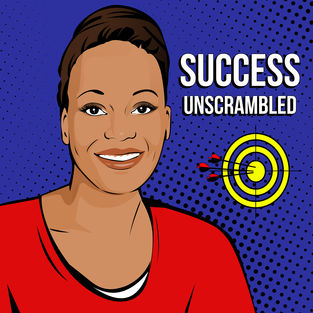
Success Unscrambled | Blog Traffic Tips | Business Success Stories
Alvern Bullard
Welcome to Success Unscrambled where I help women who want to live a life of time and freedom become wildly successful using proven organic marketing strategies. Grab business ideas like how to start a business without a degree, 50+ ideas to market your business. Learn to get paid by blogging, monetise your blog, get your blog noticed and how to blog consistently. Also, check out things that rich people do differently as well as SEO for beginners.
- 39 minutes 10 seconds5 Genuine Goal-Setting Exercises for Entrepreneurs
Stacy wanted this year to be different but she needed help with her goal-setting exercises.
After looking at what she managed to accomplish over the last 12 months she knew that something needed to change.
Some weeks over the last financial year were downright hairy because of the limited amount of cash flow.
Plus her dream of living on a tropical island for 6 months of the year hasn’t materialised just yet.
If you can relate to Stacy let me know if these points sound familiar.
- Setting goals and achieving them can be quite daunting
- You’ve rarely ever accomplished the goals that you set in the specific timeframe
- Others seem to be better at setting goals but it doesn’t work for you
- You have a goal but you are clueless about the steps needed to take action
Wouldn’t it be lovely if there was a realistic way to set achievable goals with action steps as well?
In this resource, you’ll discover a few key secrets that separate the winners from the others.
Join me as we look at a few goal-setting exercises for complete beginners.

The Goal-Setting Process
Before looking at the various goal-setting exercises available for you to use.
It is important to understand the various aspects of the goal-setting process.
Many people make the mistake of looking at the ultimate goal while ignoring the reasons behind that goal.
For example, if you have professional goals like getting a 6-figure deal or having an income of $10k/month why do you need that money?
I’ll tell you why…
It’s because you have a number of personal goals behind those specific goals.
This could range from larger goals like buying a mansion or a sports car to smaller goals like hiring a fitness coach.
At the end of the day, the goal-setting process should start with the realistic goals of improving the quality of your life and the lives of your loved ones.
It’s important that you have a process that walks through the stages by adopting the 7 whys principle. At each stage of the process ask yourself why you want that thing.
Here’s what that looks like…
- I want to make $100K a year so that I can
- Pay for living expenses so that I can
- Buy a beautiful home so that I can
- Provide a secure life for me and my family so that I can
- Not have to worry about emergencies so I can
- Live my perfect day so that I can
- Do the things I enjoy
Of course, you can also do this powerful exercise in reverse order.
The most important step is that your focus is on accomplishing the right goal to create a life worth living.
Also, these must be meaningful goals for your future self so that you’ll be motivated sufficiently to accomplish them.
1. Your Perfect Day
A number of years ago I was encouraged to write out in detail what my perfect day will look like.
At the time, I was not a digital nomad or even a virtual assistant.
In fact, I thought that it was a lot of wishful thinking.
With a bit of hesitation, I sat down with a pen and a few sheets of paper.
I scribbled down my perfect day from the time I woke up until the time I went to bed.
Here are a few things I included.
- The ideal time for me to wake up each morning
- Who I would like to wake up with in my bed
- What I did after waking up
- The atmosphere and location I’d like to wake up in
- Items that I would include on the menu for breakfast
- At what time would I check messages and emails
- What I would do for work
- My working hours and days of the week
- Extracurricular activities
- Things I would like to do with my loved ones
- My downtime routine
- What I do at bedtime
- Things I do during the day for self-improvement
Although I can’t remember every single thing that I wrote down many years ago, I can tell you that this stuff works.
It’s crazy what happens when you get crystal clear about what you want to include or even exclude from your perfect day.
I’m living some of that dream even today which really amazes me because I really believed that it wasn’t possible to have a perfect day.
2. Vision Boards
Have you ever wondered if creating a vision board will work for you?
I always thought that they were useless until I discovered a dirty little secret.
You must always use photos of actual places, locations, fun experiences and things that you want in your life.
For example, a number of years ago I wanted to get my hands on the Chanel No. 5 perfume.
It looked good in the adverts so maybe it will be good for me too.
To tell you the truth I never walked up to the beauty counter and did a scent test, I just decided to get it.
That bottle of perfume remains on my bathroom shelf many years later because it doesn’t match my body scent.
The most important thing to learn from this lesson is to get crystal clear about what you include on your vision board.
Do a test drive, trial or just try it for a few days because chances are you may not like it.
When next you are creating a vision board get photos of places, things and experiences that you know would work for you.
No more magazine clippings, go try out that mattress, the sofa, the dream destination, etc.
If you like it, include it, if not, move on. Vision boards only work when you get real with your dreams.
3. Mind Mapping
One of my absolute favourite goal-setting exercises is mind mapping.
At first, I just didn’t get what the excitement was about but then one day I came across a great tool called Xmind.
My life changed forever.
Something just clicked and there I was mapping out world domination before sunset.
In case you’ve never done any kind of mind mapping before it’s like writing down your big dream and working backwards to figure out the next steps.
Here’s an example of how it works.
Say you would like to achieve an income of €100K a year. Just look at that number it may seem impossible but let’s break it down.
$100K/year = $8,333/month
What can you do to make $8,333/month?
You can do a split of 3-4 income streams like $2,000 from digital products, $3,000 from client work, $2,000 from UGC and $1,500 from sponsored content.
I have to warn you that the items that you include in the income streams must align with those things on your vision board and your perfect day.
There’s no point in you generating income from things you absolutely dislike.
Mind Mapping Visual Example
Now that you have an idea of what you want to include in a mind-mapping exercise.
Let’s do a practical example.
My favourite free powerful tool that I like to use is one called Whimsical because it’s so easy to use and you can share your mind map with team members.
Always start at the end goal and work your way backwards through the process of achieving that goal.
Here’s a screenshot of the first stages of my mind-mapping process.
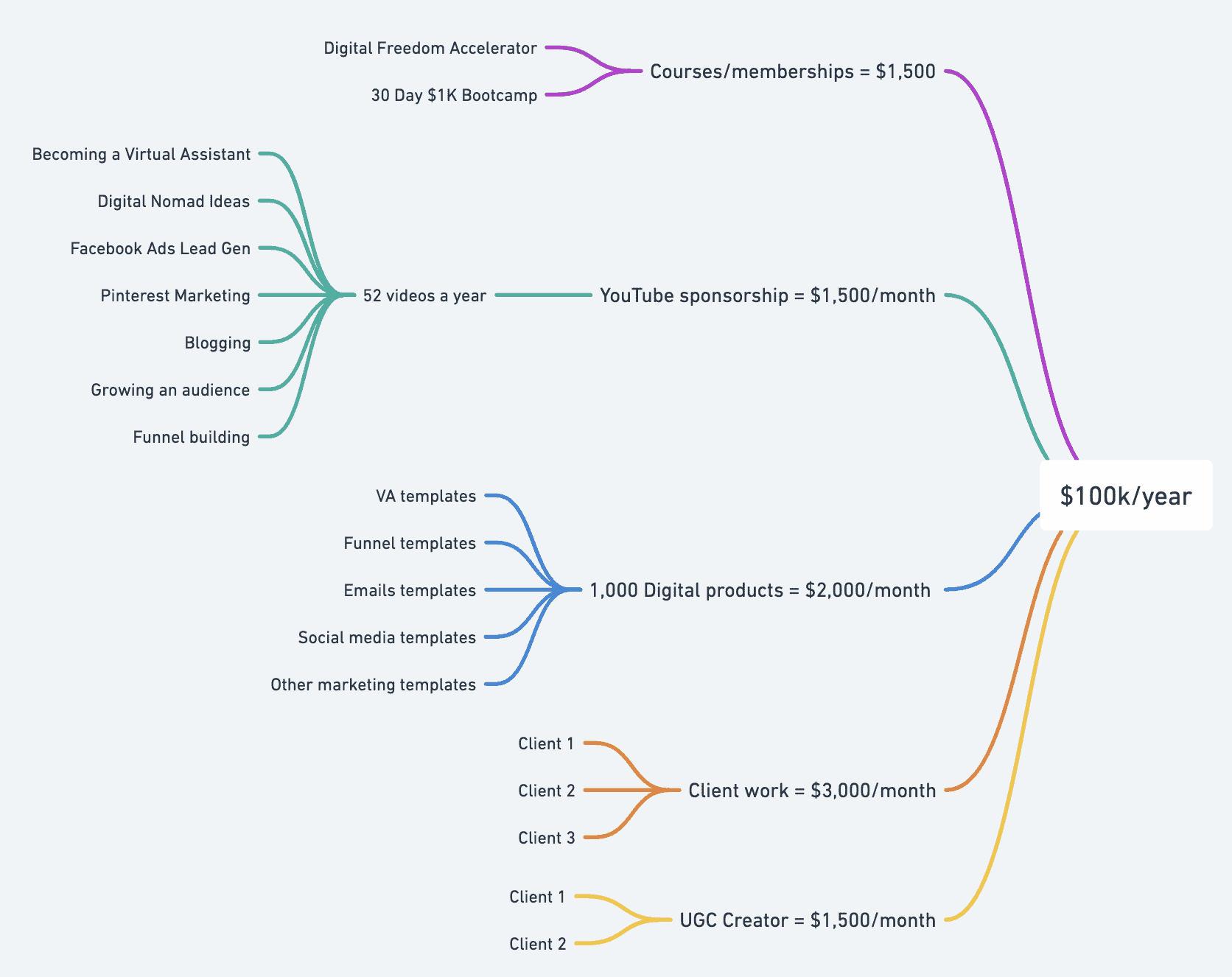
Let me explain some reasoning behind why I chose these vehicles for my income streams.
I know that I only have 24 hours in one day so I’ll need some sources of income to be passive and others will need my time and attention.
I’ll also need help creating quite a number of deliverables.
Notice that under the section for digital products, I’ll need to create 1,000 different products for my store.
I already know that I can outsource the product creation process.
Using this method gives me tons of fun accomplishing items.
4. Bucket Lists
One of my favourite and fun goal-setting exercises is the bucket list.
The reason why it’s so much fun is because I use it to cover all 8 areas in the Wheel of Life.
So, it goes beyond entrepreneurial goals.
I’ve used it to cover areas like self-growth, romance, travel, learning a new language, learning a new instrument and volunteering for charity.
If you are one of my regular readers or listeners then you would be familiar with my bucket list.
However, if you’re new you can check out my 50th birthday bucket list here.
I created it before the global health crisis so that slowed my progress significantly.
However, I’m so happy to report that I’ve achieved quite a number of the items on that list which is so very exciting.
At this point, you’re probably wondering how many goal-setting exercises you’ll need to achieve your goals.
The answer, my dear, is only one.
I’m giving you a peek behind the scenes of the ones I’ve tried and what I liked or found exciting about each one.
I am also letting you know the dirty little secrets about how to get them to work for you.😉
Notice how each exercise is different in its own way.

Action Plan
Now we are at the point of setting goals where quite a number of people get lost.
This brings me nicely to a famous quote by Greg Reid.
“A dream written down with a date becomes a goal. A goal broken down into steps becomes a plan. A plan backed by action makes your dreams come true.”
Greg Reid
In order for any goal-setting exercise to work we need to ensure that those goals have a plan with steps so that we can take daily consistent action.
This is probably the most scary part of the process.
I remember the time when I had a goal but I had no idea the steps that I needed to take to make that goal a reality.
Sometimes that goal can seem insurmountable when you realise that it can potentially take you 5 years instead of 12 months to obtain results.
Let me give you an example, 10 years ago I knew what a funnel was but I had no idea how to build a high-converting funnel.
In fact, the cost back then was prohibitive.
However, slowly but surely I started that journey into learning about the tech and marketing aspects of creating gorgeous funnels.
I was curious, I was determined and I put in the work.
Now, I can build them in my sleep and I know which platforms are the best to get specific results.
Action Plan Visual Example
As I already mentioned mapping out the steps so that they can be actioned is probably the biggest hurdle for many people.
This is why I don’t want to leave you hanging by not sharing a practical example of effective goal-setting activities.
If you remember I’m using Whimsical to create a mind map of my $100K/year journey.
Let’s dive deeper into one of the areas on the map.
The area I’ll dive into is creating digital products for Shopify and Etsy.
We’ll look at the action steps needed to create one finished product that’s ready to go live.
In this example, we’re looking at creating a pack of 8 brand boards that align with a specific theme like summer or watercolour or something similar.
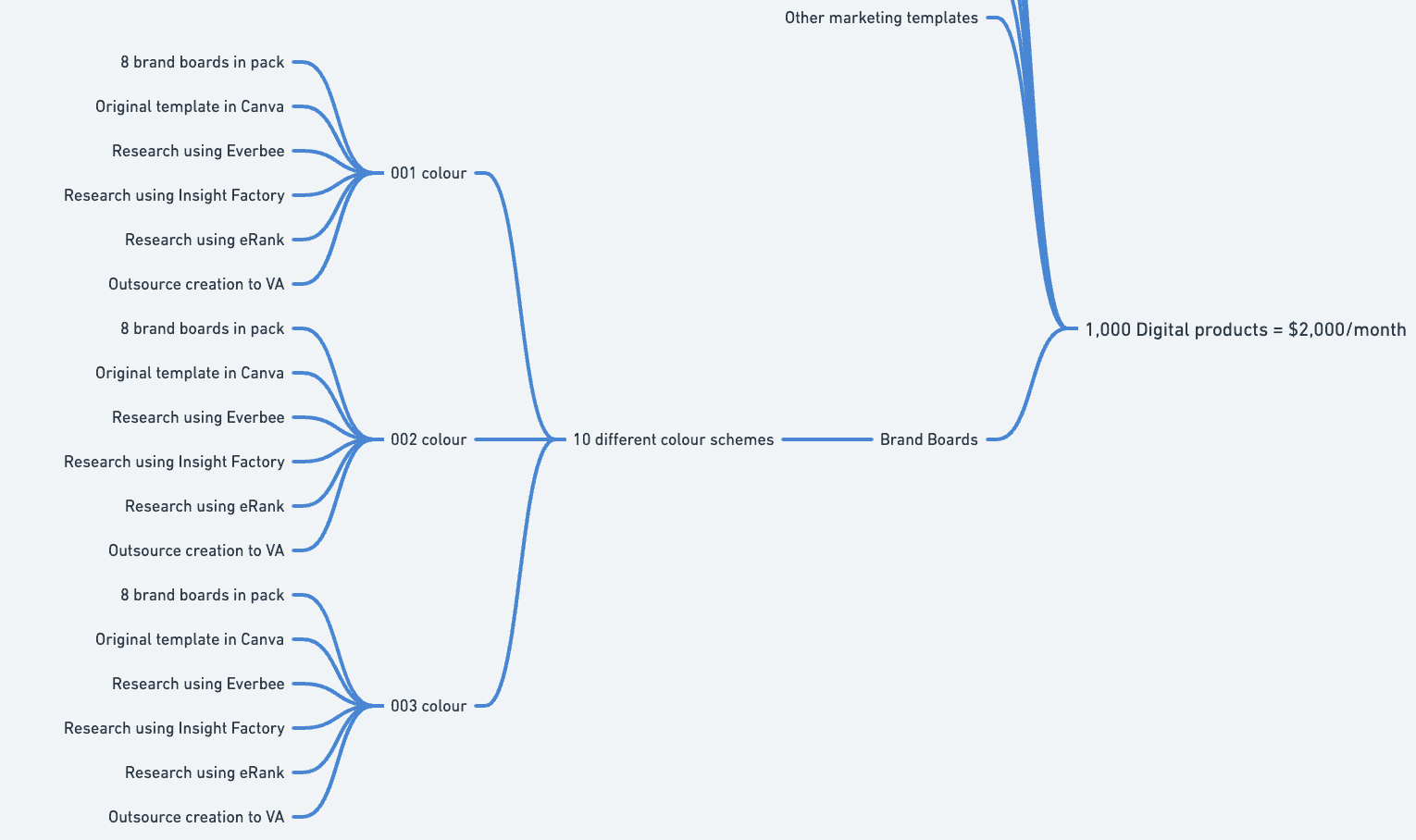
Notice that the 6 tasks I need to do to take the product from concept to a completed, ready-to-ship version include the following:
- Choosing a theme
- Ensuring that the original template is in Canva
- Do research in Everbee
- Further research in Insight Factory
- More research using eRank
- Outsource the creation to a virtual assistant
Of course, I’ll need to break each step further by giving objectives and dates for each step.
These dates and subtasks can then be transferred into a project management tool like Asana or ClickUp.
However, you can see how comprehensive mind mapping can be.
5. SMART Goals
One of the most popular goal-setting exercises on the planet is the concept of a SMART goal.
What’s unique about the methodology is that it is based on key performance indicators (KPIs) by breaking down important goals into manageable steps or milestones.
The word SMART is an acronym for 5 words used to set long-term goals.
Here’s how it goes…
- S – Specific
- M – Measurable
- A – Attainable
- R – Relevant
- T – Timebound
In many ways, you can see why using this methodology to set goals can be tangible.
Let’s break down the SMART acronym even further using our real-life example of attaining $100K/year.
Specific
So, we’ve broken down the goal to a monthly figure and added the vehicles (digital products, client work, etc.) we’ll be using to attain the end goal.
What we haven’t done is to break those monthly figures down even further.
Let’s look at the example of being a UGC Creator with two clients per month with an income of $1,500. What does that look like in reality?
On average clients would pay between $200 and $300 for a UGC video, so let’s assume an average of $250/video.
In order to make $1,500 with two clients I’ll need to create 6 videos a month which can be 3 videos per client.
How will I find these clients? Let’s say I do a combination of 50 outbound and inbound marketing activities to land 2-3 clients a month.
So, my specific goal will look something like this…
Acquire UGC clients every month by doing a combination of inbound and outbound activities in my chosen niche.
Measurable
When we add the measurable element to the mix it means that we need to add numbers to the specific goal.
As I already mentioned, it will take about 50 marketing activities in order to acquire these clients.
If you are like me and you only work 4 days a week that will equate to 16 days for marketing activities.
This means that I can apply and/or send pitches to 4 brands a day so that I can reach my client acquisition goals.
So, my measurable goal will look like this…
Acquire 2-3 UGC clients every month by pitching 4 brands a day on Instagram and UGC platforms in my chosen niche to create 6 videos a month.
Attainable
I look at the attainable part of this exercise as a way to do a reality check. I’m basically asking myself can I really do this?
If I have never pitched a single brand before can I really develop the habit of pitching 4 a day?
Am I better off pitching 10 a day for 5 days so that I can have free time to create videos?
As a reminder, I’m also working on other income sources in my business like client work, digital products, YouTube videos, etc.
I think it might make more sense to pitch 50 brands over a 5-day period which will free up my time to do other revenue-generating activities. Think of it as a 5-day challenge every month.
So, my attainable goal will look something like this…
Acquire 2-3 UGC clients by pitching 50 brands over a 5-day period (10 pitches a day) every month using Instagram and UGC platforms in my chosen niche to create 6 videos a month.
Relevant
This is what I like to call a second reality check because it is now asking me why am I doing this in the first place.
It is another way of saying, “Remember why you started”.
The reason why we are doing this is to achieve the BIG goal of $100K/year. This SMART goal is only one of the 5 income sources that we looked at previously.
It will bring in $1,500 a month which contributes to the $8,333/month goal. We should include this in the SMART goal statement so that we don’t forget.
So my relevant goal will look like this…
Acquire 2-3 UGC clients every month by pitching 50 brands over a 5-day period (10 pitches a day) on Instagram and UGC platforms in my chosen niche to create 6 videos a month. Done right this activity will generate $1,500 every month which will help me get to my monthly goal of $8,333.00. It is feasible because brands constantly need fresh, authentic content for their social media campaigns.
By the way, this can also be used for short-term goals as well.

Time-bound
Of course, the most important part of this goal-setting exercise is adding the boundary of time.
When would I or you want to achieve this goal of $8,333/month? This month? At some distant date in the future?
If we don’t have any dates or deadlines then this entire exercise would more or less remain like a master plan on a piece of paper or inside a virtual document that never gets activated.
It would be very similar to a dream that never comes true because we didn’t take action.
Let’s be honest, the scariest part of setting a goal is adding a date.
When we put a date on it then we suddenly break out in sweat and our armpits get uncomfortable.
Nevertheless, it has to be done if we want the results.
So, my time-bound goal will look something like this…
Acquire 2-3 UGC clients every month by pitching 50 brands over a 5-day period (10 pitches a day) on Instagram and UGC platforms in my chosen niche to create 6 videos a month. Done right this activity will generate $1,500 every month which will help me get to my monthly goal of $8,333.00. It is feasible because brands constantly need fresh, authentic content for their social media campaigns. I will start my first day of pitching brands on __/__/__, so that I can get to my first $1,500/month by the end of ___________/_____.
As you can see the ultimate goal is to have a fully comprehensive statement about that single goal to ensure that it is actionable.
Goal-Setting Exercises FAQ
Let’s look at a number of frequently asked questions around goal-setting exercises.
1. What is the first step of goal setting?
The first step of goal setting is to get a clear understanding of why this goal is important to you personally. Look specifically at both your internal and external desires.
Also, perform the 7 Whys methodology to get to a deeper level of your motivation for setting a goal.
2. What are 5 SMART goals?
The 5 SMART goals include the following:
- S – Specific
- M – Measurable
- A – Attainable
- R – Relevant
- T – Timebound
See a comprehensive breakdown included in this post above.
3. Why must entrepreneurs set goals that are SMART?
I’m going to be a little controversial and say that setting goals that are SMART is not necessarily a must but it does help by associating key performance indicators (KPIs) to determine success.
In other words, by taking these specific actions consistently you’ll increase your chances of achieving your business goals.
4. What is the most important goal of an entrepreneur?
To generate sufficient income to maintain a healthy cash flow and keep your business viable.
Summary
Goal-setting exercises can be difficult and scary however life can be disappointing when you fail to achieve your goals.
Even when you set new goals the next year but still fall short of getting the results you wanted.
I’m intrinsically motivated so I wake up every day excited to get stuff done.
I know that this is not the same experience for everyone because each of us gets motivated in different ways.
Developing new habits in several areas of your life also gives you a new sense of purpose.
Sometimes writing a letter to your younger self can be used as a wake-up call to help you get clarity on your future.
Many years ago I felt stuck because I would set goals in a wishy-washy fashion.
At the time I didn’t know the necessary steps I needed to take to achieve my goals.
Today, my life is so different and I feel like a veil has been lifted. The truth is that a veil hasn’t been suddenly lifted.
In fact, I’ve learned a ton of new skills and strategies that I’ve used to earn my first $100,000 online as a virtual assistant and you can do the same too.
If you would like to learn how to make $3k/month as a virtual assistant then grab this resource.
22 January 2024, 4:02 am - 21 minutes 13 secondsThe Ultimate Guide to Freelance Marketing Consultant Rates
Siobhan needed help promoting her small business but she didn’t know what are the current freelance marketing consultant rates.
This is important for her because she didn’t want to pay too much for digital marketing services.
Yes, leads and sales are important to the survival of any business.
Like many entrepreneurs and small business owners, Siobhan prefers spending time doing what she enjoys.
She just was not interested in learning to become a digital marketer herself.
Let me know if you face these struggles like Siobhan.
- You need more leads and sales in your business this year
- Setting up a 12-month marketing plan is outside your comfort zone
- You like showing up on social media but you don’t have a marketing strategy in place
- Terms like ROAS, abandon cart emails, CTR, conversion rate, LTV and MRR are way outside your wheelhouse
If only there was a way to figure out the cost of a marketing consultant so that you can include them in your marketing budget.
In this resource, you’ll discover simple strategies to plan, budget and hire your digital marketing strategist to significantly increase your business revenue.

What or Who is a Marketing Consultant?
For the purposes of this resource, a marketing consultant is someone who works alongside a business at a strategic level to lead their marketing plan.
In many cases, a business will hire a marketing consultant to fix issues like underperforming campaigns.
Sometimes they are brought in to help an organisation adopt a more cohesive approach to their marketing strategy.
Ideally, there would need to be a budget set aside for marketing spend and your marketing consultant can oversee how to spend it effectively.
Your marketing consultant should help you get a good return on your marketing spend.
A marketing consultant can look at the historical data from your marketing spend vs results over the last 3-12 months and give you wise insights.
It is important to note that even the best marketing consultants are not magicians.
They don’t have control over external forces, economic factors, market trends or making things go viral.🤣
Social Media Manager vs Marketing Assistant vs Marketing Manager vs Marketing Consultant
Before we look at rates it’s important to understand all the different roles that promote a business.
Let’s spend some time understanding who these people are and what they do.
1. Social Media Manager
Depending on the size of your business you may already have someone who looks after your social media accounts.
Their role would be to develop a plan for the social media channels, write the copy, create the graphics and schedule out the content.
They would also look at the performance of the content and suggest ways to improve the results of their social media efforts.
Another vital role would be to keep up with the latest trends and grow the social media community for the business.
2. Marketing Assistant or Marketing Coordinator
So how does the social media manager differ from a marketing assistant or marketing specialist?
Well, a marketing assistant also known as a marketing co-ordinator does just that they assist. They are not responsible for leading a specific strategy.
In most cases, the business owner makes a plan and the marketing assistant would help implement the plan in the business.
They can create graphics from existing templates, transcribe copy based on what the business owner said and pull + compile the reports for someone else to interpret.

3. Marketing Manager
If you decide to hire a marketing manager in your business here are a few things that you can expect.
They expect to be hired on a full-time basis.
The marketing manager would own, plan and develop the marketing strategy for the business across multiple channels.
It is their responsibility to deliver the results that they promised.
The kind of results that you can expect from a marketing manager will be centred around leads, not sales.
If you look at the typical customer journey where you have awareness, interest, consideration and retention.
The marketing manager is responsible for awareness and interest. However, they assist with the consideration phase where the sale takes place.
4. Marketing Consultant
So, what’s the difference between a marketing manager and a marketing consultant?
As a general rule, the marketing manager is treated like a full-time employee. They don’t work with other businesses, so they are an in-house marketer.
However, the marketing consultant would be more like a freelancer or independent advisor who is brought on for a short time, like 3 months.
They are more objective in their approach to marketing solutions.
Their fees tend to be higher when compared to a marketing manager.
7 Signs That You Need a Marketing Consultant
At this point, you are probably feeling a little bit confused because you are not sure if a marketing consultant is who you need.
Here are 7 clear signs that you need a marketing consultant.
- You are looking for someone short-term (3-6 months) to come in and set up an overall marketing plan
- Your business online presence includes several organic channels including a blog, several social media channels, YouTube and Pinterest.
- There are also paid campaigns across Google Ads, Facebook Ads and TikTok Ads.
- Right now everything feels disparate so you are looking for a more cohesive approach to digital marketing
- You are not really sure which digital channels are the top contributors to sales, awareness and retention
- It would be lovely if you had better visibility into the customer journey from awareness to consideration
- You need help improving your offers and product suite in order to go from a 6-figure business to a 7-figure business
Current Freelance Marketing Consultant Rates
So, you’ve come this far because you know for sure that what you need is a marketing consultant.
However, you are not quite sure how much you should expect to pay to hire that person.
According to a report by Credo, the average hourly rate for a marketing consultant depending on years of experience is $150/hour.
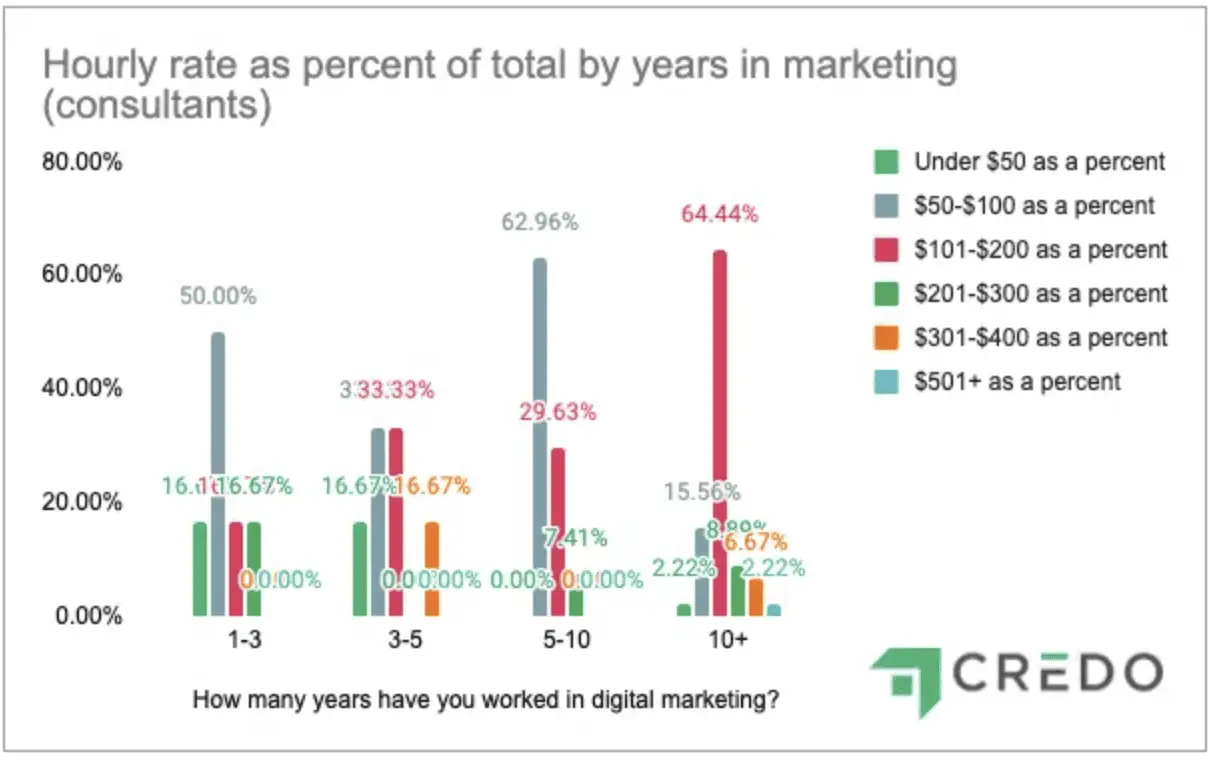
You’re probably thinking that you could only pay them a flat fee of $1,500 a month or maybe even $3,000/month.
However, remember that they will not be as expensive as a regular Marketing Director who has an annual salary of $150,000 a year.
There’s no need to pay a marketing consultant $12,500/month unless you are a multi-million dollar organisation with a team of 100 employees in marketing alone.
The beauty of hiring a marketing consultant on a part-time basis is that you get the impact of their marketing expertise without the ridiculous price tag.
Some, like me, can do project-based fees of $7,500 over a 3-month period.
In fact, other names for these types of marketing consultants include Fractional Chief Marketing Officer (CMO) or Fractional Director of Marketing.
How to Budget for Your Marketing Plan
Now that you know the freelance marketing consultant rates, it’s time to figure out how to make a budget so that you can hire them.
It is standard practice to set aside 20% of sales as part of your marketing budget.
I’ve seen other places online where the figure is much lower because they are saying that it depends on the target audience.
In fact, I’ve seen suggestions of between 2% and 10% of sales.
After working with several businesses over the years what I’ve seen work effectively is a budget that is somewhere between 10% and 25% of sales.
Included in the figure is the cost of hiring team members like a social media manager, copywriter, graphic designer, ads manager, SEO specialist and many more.
By the way, copywriters are not cheap and the work they do is very effective. SEO specialists do require a long-term view of 12 months minimum.
Budget Example
If your business is doing $15,000 a month and you decide to set aside 20% of that figure.
Then you’ll have a monthly budget of $3,000 available to spend on marketing, this will work for a short-term marketing campaign.
By the way, you should be doing 3-4 launches a year on top of your evergreen campaigns which will help you to have a bigger budget for marketing.
Need help improving your evergreen and launch campaigns? Check out my portfolio here to see how I’ve helped other businesses like yours to increase their income.
You can start to exponentially improve your business results just by hiring a Fractional CMO for as little as $500 to $1,000 a month on an as-needed basis.
There’s also the option to hire a good consultant on a project-by-project basis for a flat rate.
Freelance Marketing Consultant Rates FAQ
Well, you probably have a number of questions that you need to clear up before taking the next step.
So, let’s look at the most frequently asked questions that many small businesses have before hiring their first Fractional Director of Marketing.
1. How much should I pay a marketing consultant?
The reality is that it depends on a few factors including:
- The skills you need in your business right now
- What results you are hoping to achieve
- Their experience level
- How much budget you have available each month
- The quality of work needed
While the average rate is $150/hour there’s also wiggle room to do profit share to sweeten the deal.
2. What is an acceptable marketing budget when considering bringing on a marketing consultant?
There are many sources online that suggest a budget of between 2% and 5% of sales. However, based on my experience you are better off setting aside between 10% and 25% of sales.
The reason for this is that you’ll need to hire a small team to help you implement your marketing plan.

3. What kind of results can I expect from hiring a marketing consultant?
It really depends on why you want to hire them in the first place. What type of work would you like them to do?
Before rushing out and hiring someone to develop and execute marketing plans for your business, spend time thinking about why you want to hire them.
Are you looking to increase sales or leads by 10%, make your brand more loveable, increase market share, get help with an ad campaign or get more visibility around your customer journey?
When you know what you need then you’ll be better able to choose the perfect match for the job because not all marketing consultants are created equal.
Unlike a regular employee, lunch hours, sick days and vacation time will not be a worry for you.
4. What should be included in your marketing budget?
This is a great question because it is so easy to forget all the small things that you need to promote your business.
Here’s a short list of what you should include.
- Tools, software and apps
- A percentage of utility bills like heat, light, broadband and phone
- Employees and freelancers
- Ad spend
- Memberships and subscriptions
- Training
- Coaching
- Office space
As you can see it is quite easy to forget all the things that go into promoting your business. I always forget the apps and storage. Lol🤣
Summary
As a teenager whenever I heard the name consultant I always thought that the person would charge anywhere between $10,000 and $100,000 for their services.
However, we now live in a society where you can get the help you need to grow personally and professionally for a small fee rather than a king’s ransom.
Yes, the market rate for bigger organisations will be much higher.
While starting a business can be difficult, growing that business exponentially without the proper help can be hard.
I can’t help but giggle at the fact that the number of social media channels to manage is increasing which is quite stressful for entrepreneurs.
Believe it or not, I thought that growing your business from $15,000/month to $100,000/month is difficult.
However, after helping one client achieve this goal my eyes have truly been open.
To put it in a nutshell, it is not as hard as those coaches out there are telling you.
Need help to grow your coaching business? Take a look at my portfolio here and if you like what you see just book a call with me to discuss your requirements.
18 December 2023, 1:42 am - 23 minutes 48 secondsHow to Get Potential Clients Through Cold Email
Shelley started her business recently and she had a burning question, how to get potential clients through cold email?
As an entrepreneur, you know that it’s important to constantly have cash flow in your business.
Without any consistent income, your business is just an expensive hobby.
The one skill every entrepreneur needs to master is getting sales or clients into their business.
Shelley was keenly aware of this which is why she needed to find a way to master this skill.
Here are three things to consider when you decide to use cold emails as your way of generating leads.
- You’ll need a fresh list of people to email every week
- Sending out emails that get responses is crucial
- Doing this 100% manually can be a daunting task
- Nobody likes to be sold to but everyone likes to buy
If only there was a way for Shelley to get proven strategies and resources that work every single time.
In this resource, you’ll discover a number of key elements and insider secrets that you can use to get the results that you need.

Email Marketing Statistics
So, you’re probably wondering why Shelley decided to use cold email as her lead generation strategy.
Well, according to Oberlo, there are 4.3 billion users of email globally and this is set to increase to 4.6 billion in the next few years.
Another surprising statistic from the same source reveals that over 3 billion emails are sent every day.
To put that into perspective, there are 2 billion active users of Facebook daily.
In terms of return on investment, the figures show that you can expect to generate $40 for every $1 spent on emails.
81% of business owners continue to use email as their source of customer acquisition.
Also, welcome emails have the highest open rates at 68.6% when compared to the average email open rate of 19.7%.
Did you know that 49% of consumers said that they like to get promotional emails from their favourite brands weekly?
Based on what you know now about email marketing do you think that Shelley has made a good decision?
List of Potential Clients
One of the toughest things Shelley needs to do before sending out cold emails is to develop a list of her prospective clients.
Have you ever wondered where people find a list of ideal clients?
If you have no idea who your potential client or buyer persona is then it will be more difficult to find them.
So, spend some time developing an avatar of your prospective client before moving to the stage of getting a list.
One of the things to figure out when profiling your ideal client avatar is where you can find them quickly and easily.
When you know who they are and where they spend most of their time then it becomes easier to find them as well as their email addresses.
A number of places where you can find them could include:
- Business website
- 3rd Party Publications
Let’s look at ways in which you can develop a solid list of prospects.
How to Get a List of Email Addresses
Broadly speaking there are two ways to generate a list of email addresses.
These two ways are called inbound and outbound.
Inbound involves you leaving a link for people to access a free resource and they’ll need to enter their email address to get it.
Outbound is quite different, you basically need to go and find them and send them a cold email introducing yourself and giving them a reason to respond.
Everyone likes inbound email marketing because it is like if your prospective client raises their hand to get what you have.
However, if you are like Shelley and you’re starting from scratch there are a few ways to get this started.

1. Social Media Hand Raiser
The next time you are publishing content on social media instead of sharing a link publicly ask your prospective client to send you a DM.
If the thought of getting your prospective clients to send you a cold direct message gives you butterflies in your tummy then take a step back.
Imagine you have the perfect solution to their pain point and all they need to do is message you for it do you think that they will do it?
What I like about doing a hand-raising post is that you get instant feedback on whether your messaging is working.
So, say yes to using social networks to help you grow your customer base.
2. Freebie on Website
Another way to get people’s email addresses is to offer a freebie like a lead magnet on your website.
This will need to be something too good to pass up and it should give them a quick win.
You can use the same lead magnet for the handraiser on social media as well as your website.
3. Other People’s List
A really clever way to grow your email list fast is by doing a collaboration with a business owner who does something complimentary to your business.
For example, my zone of genius is tech and funnels. I can team up with someone who does copywriting.
We can put on a shared event together or that person can invite me to do a free masterclass with their audience.
4. Online Research
This is probably the hardest way to find a list of potential clients but it can be done.
You can do a manual search on LinkedIn and find your target audience. For example, if you’re looking to create a list of all the Accountants in the US, you’ll need to do a search on LinkedIn.
When you find them, you’ll need to add each one of them to your list and then find their email address manually.
Yes, there are several 3rd party tools that you can use like Hunter.io or Slik Prospector Chrome extension but they are never 100% accurate.
Once you have a list of first names, last names and job titles you can upload it to a tool like Hunter and they’ll populate the email address for you.
Then download your list of leads ready to do your cold email outreach.
5. Buying a List
A few years ago I was heavily involved in affiliate marketing which involved buying lists.
I cringe every time I think about this because it’s such a terrible way to do business.
However, there is one platform that has made this process non-sleazy by giving you the ability to purchase high-quality B2B emails.
It’s called Lime Leads and it gives you the ability to filter your leads before paying for them and downloading them.
After using these resources you should be able to drum up a list of 1,000 leads.
Cold Email Campaign
If you are like Shelley and you don’t have any experience at all in copywriting or email marketing.
You may be stuck thinking about what to write in your cold prospecting emails.
The world would be quite boring if we were all good at writing email copy.
I have over 20 years of experience sending out cold emails and all I can say to you is that there are so many different methods and templates available.
However, recently I came across one resource that is great for those on a low budget.
It’s priced at $5 and you can also purchase additional cold email templates for $30.
If this sounds like something you would like for your business, grab it here.
When you make the purchase, you’ll notice that it also comes with emails for the follow-up process as well.

Tools for Cold Emailing
Now that you’ve got your list of leads as well as the email copy that you’ll be sending to your potential customers.
You’re probably wondering if there’s a way to efficiently send out these emails to a minimum of 100 people each week.
Maybe you’re ambitious enough and you want to send 50 emails a day.
What should you use?
You’re probably thinking of using Outlook, Apple Mail, Postbox or Gmail.
Is there a way to save your email templates so that you can save time?
Can you track the open rates of the emails you’ll be sending out?
What about the ability to set follow-up reminders after a few days?
There are several tools that you can use to help with these features.
The two popular options include Mixmax and Mailtrack.
Warm Email Campaigns
If you decide to grow your email list using inbound techniques like the handraiser and freebie on the website that I mentioned previously.
You’ll need to have a welcome email sequence to deliver that freebie and then nurture that list with weekly newsletters.
In case you didn’t realise it there are significant differences between warm email templates and cold email templates.
So, it is important for you to decide which one you would like to do and develop your email content to match the right audience.
Yes, you can certainly decide to do both types of campaigns because the warm email campaigns can be set up and automated.
Conversion Rates
If you’ve never done any kind of marketing campaigns, sales outreach, lead generation or anything similar.
You’ll know that it’s all a numbers game if you get all the components right.
Whether it’s a cold email or a warm/regular email marketing campaign there are some key numbers you need to look at to determine if you’re doing it right.
These key numbers include delivery rate, open rates, click rates and sales/conversions (income generated).
There are other analytics as well like unsubscribe rates, bounce rates and spam complaints.
This is not a comprehensive guide on email marketing so let’s focus on what those key numbers should look like.
- Delivery rate – 100%
- Open rate – 35%
- Click rate – 10-15%
- Conversion rate – 1% (minimum)
When you are not married to a specific prospect or company here’s what you should be doing.
Take a step back and look at the numbers.
It helps you to focus on what really matters.
In other words, if you only sent 50 cold emails and got no conversions then you’ll know that you just need to send more emails to get to the 1% result.
How to Fix Your Email Results
If you sent out 1,000 emails and your analytics don’t look like the benchmark numbers that I gave you previously.
Here’s what you can do to fix those problems.
Low Delivery Rate
If your delivery rate is less than 90% then there could be a few reasons why this is occurring.
The platform or domain name you are using could be blacklisted or you haven’t built up sending trust. One method to try for a few weeks is sending emails in smaller batches.
For example, if you have 2,000 people on your list you can try sending 100, 300 or 500 emails at a time.
Very Low Open Rate
If less than 20% of people on your list open the email then consider improving your email subject line.
A few tools that you can use to fix this include CoSchedule Headline Analyzer and here’s another one by AIOSEO.
You can test your subject lines by using personalization as well.
Low Click Rates
Potentially one of the areas in an email to get right is the body copy of the email.
It needs to enticing enough so that people will take the desired action that you want them to take.
Believe it or not, a clever way to achieve great click rates is by segmenting your list.
Which in layman’s terms means breaking them down into smaller groups of people interested in a specific product or service.
How to Set Up Your Cold Email Campaign – Step by Step
Now that you have all the pieces that make up the cold emailing puzzle let’s bring it all together in a streamlined step-by-step process.
Bear in mind that you can use any tools and platforms that work best for you to accomplish your business goals.
Step 1 – Choose Your Objective
One of the most important aspects of doing a cold emailing campaign is to decide on your objective.
While you might be thinking that all you want to do is make sales.
You need to remember that cold emailing is part of a big picture called a funnel.
When you first reach out to ‘strangers’ what are you going to do to take them from cold to warm to hot?
Here are a few objectives that you can have.
- Invite them to an event
- Offer to help them solve a small problem
- Give them something for free (a quick win)
- Offer them a free trial
- An overall special offer
Step 2 – Decide on the Ideal Contact Person
Now that you know what the objective is for your campaign it’s time to decide who in the organisation can benefit from it.
Is it the Owner, Marketing Director, HR Director, COO, Financial Director or someone else?
When you’ve decided on the ideal person to contact write down the reasons why they would be interested.
Also, take note of the ways their life or business can be better after you offer them the thing that you chose as an objective.
Step 3 – Create Templates
The next step in the process is to create 4-5 cold email templates + complimentary subject lines for different scenarios and to test to see which performs best.
Another name for an email template is a sample email.
Also, another 4-5 follow-up email templates because people are busy and they need to be reminded of your offer/event.
As you can imagine, the response rate from cold emailing is not great but some people will respond.
While you may not be good at copywriting the key thing to remember is that your new clients have a problem that you can solve.
You can include their first name in the subject line and/or salutation to create a sense of urgency.
So, focus on the problem as well as how you can solve a small piece of that problem.
Step 4 – Generate a List of Prospects
It’s time to generate a list of your potential clients using the methods I discussed previously.
Or you can use your way of getting that list.
The two fastest ways to create a list of prospects is as follows:
- Buying a list of leads from a supplier
- Running a paid lead generation campaign to grow a list of new subscribers
When generating this list it’s important to remember your end goal, objective and ideal person.
If you have a list of people who are not your ideal audience then your campaign will not yield the results that you want.
Step 5 – Platform Set Up
Cold emailing can be a very painful and lengthy process if you decide not to include any automation.
Using a few key tools would help you to complete this process more efficiently.
Let’s say that you decide to use a tool like Mixmax for your campaign.
It means that you’ll have the ability to add your cold email templates and follow-up templates inside the platform.
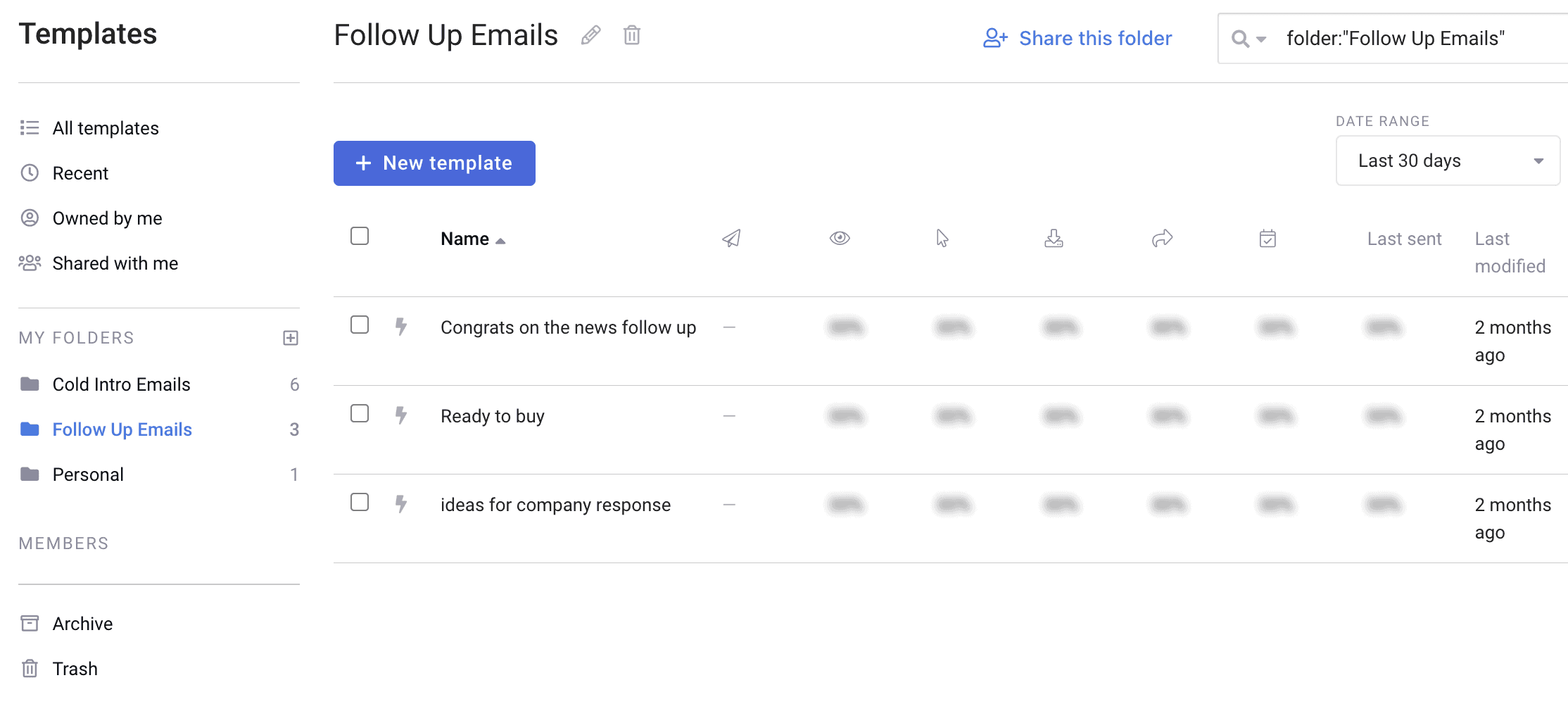
Below, I’ve included an example of a cold email template that I created recently inside Mixmax.
Notice how you have the ability to insert variables depending on your chosen objective.
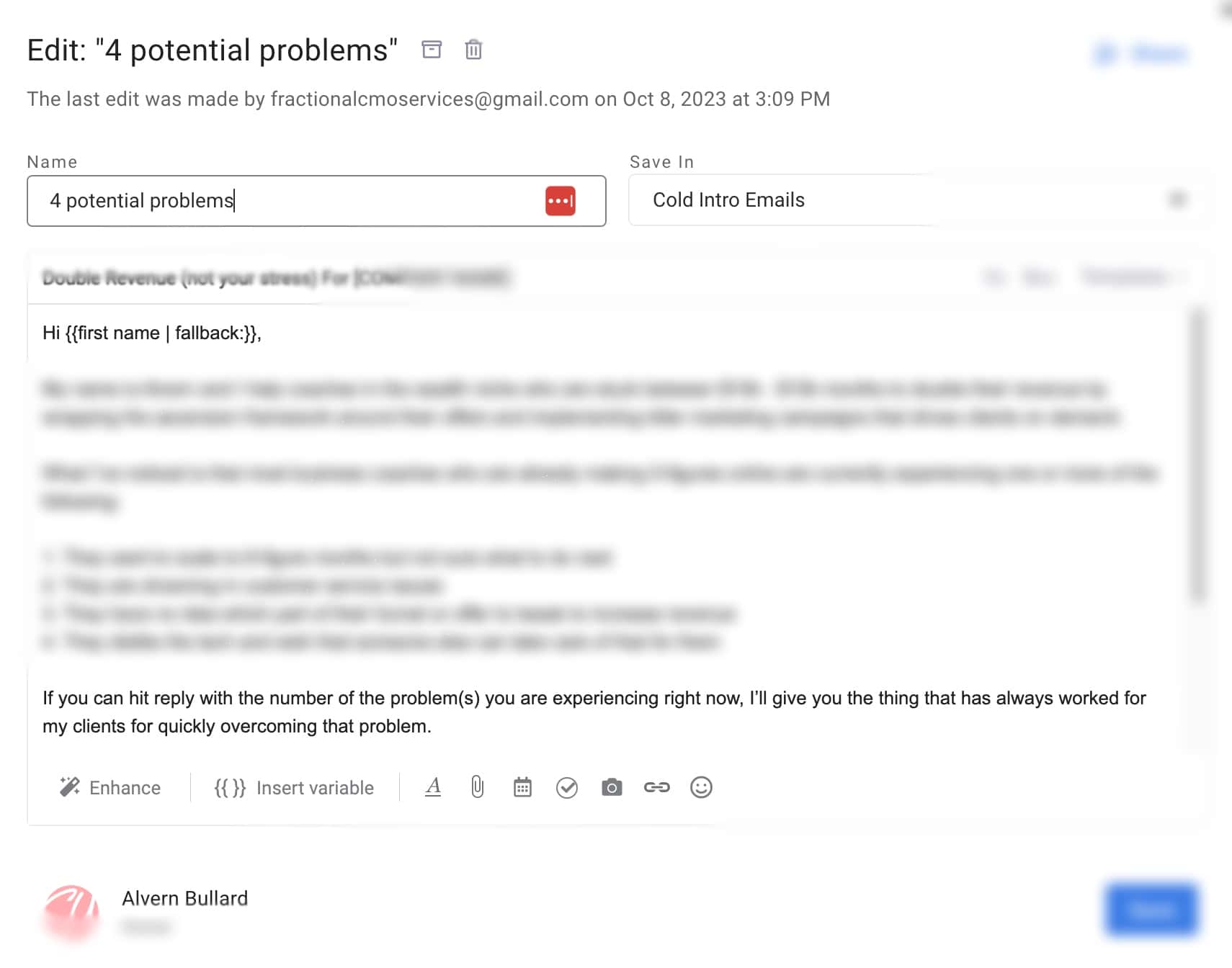
Step 6 – Set Targets
You’re almost ready to send your first batch of emails but before you do there’s something you need to do.
Set a realistic target of how many people you’ll need to reach out to daily or weekly in order to achieve your end goal.
If you know that you’ll land between 2-3 customers by sending 100 cold emails together with 7-8 follow-up emails then do a calculation.
Let’s say your goal is to generate $10,000 a month from a cold email campaign and each client will be paying you $2,500/month.
It means that you’ll need to successfully send out 200 emails a month in order to achieve that goal.
Step 7 – Send Out Emails
It is difficult to predict which prospects will respond to your cold email aka introduction email.
So, you’ll need to set aside time each day or week to focus on your campaign.
Remember that the majority of success will come from your follow-up emails.
So make time to do the follow-up process to get better results.
Block off time in your calendar and send those emails.
You can use the features in Mixmax to track the performance of your emails like open rates, click rates, etc.
In the follow-up emails, you can also have the option for them to book some time in your calendar to get on a phone call to discuss their requirements in further detail.
A quick hint to get higher response rates is to include a case study or some social proof demonstrating the success of other small businesses.
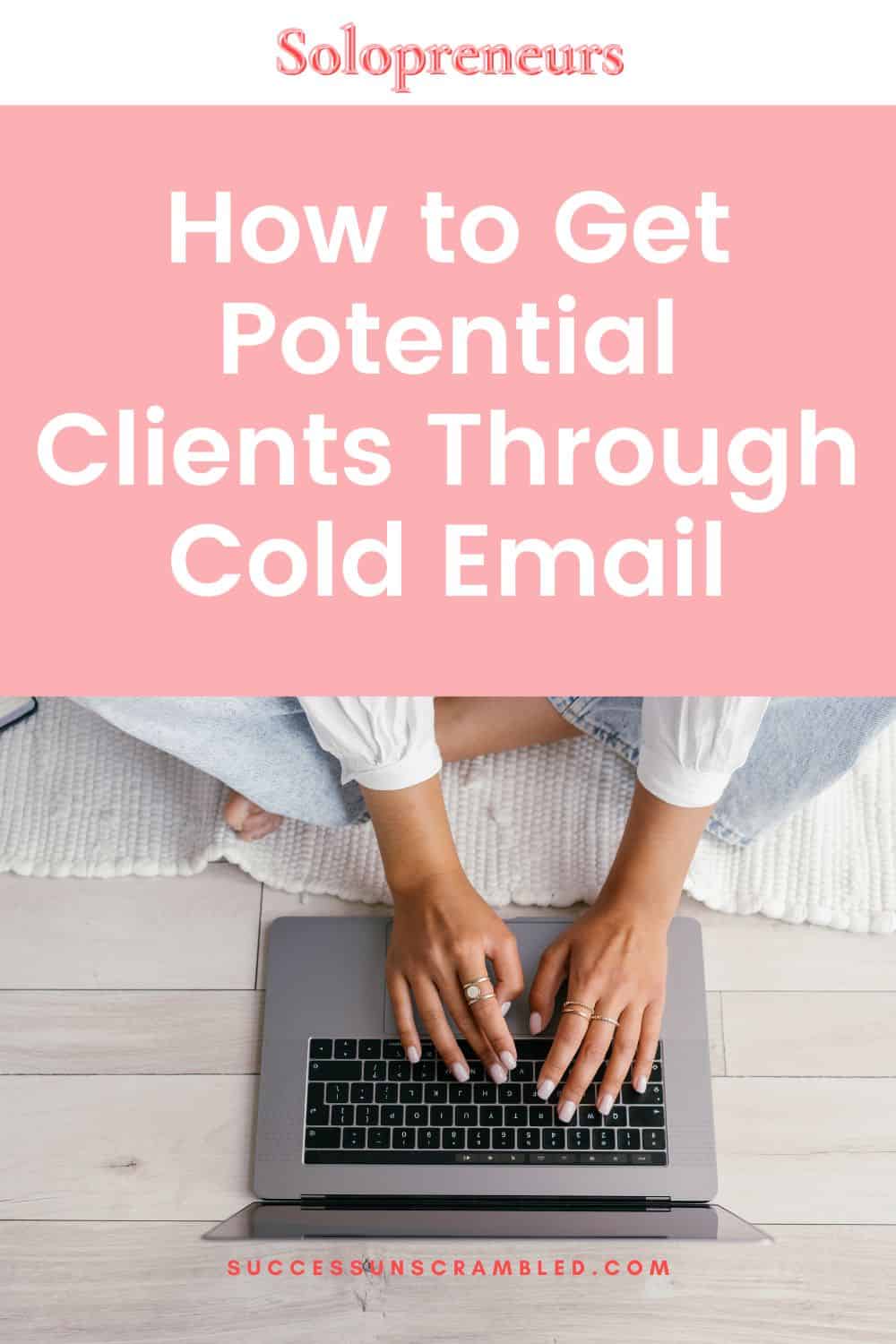
Frequently Asked Questions (FAQ)
Here’s a list of common questions people have about cold email campaigns.
1. Does cold emailing actually work?
Yes, I did it for many years and it works but it is not the most enjoyable thing that you can do with your life.
However, here are some reasons why it does work.
- You are reaching out directly to them via email which feels personal
- You’ll be offering them a solution to their problems
- There’s very little competition in the area of cold emailing
- You’ve got a unique opportunity to build lasting relationships with these people
- Including case studies from other small business owners just like them builds trust in your offer
2. How do you find prospects to send cold emails?
There are a number of ways you can achieve this.
- You can buy leads from a supplier like Lime Leads
- There’s also the option to run a paid lead-generation campaign using Facebook ads.
- You can find your leads via LinkedIn
- There are also quite a number of paid platforms where you can ‘scrape’ a list of leads full of local businesses.
3. How many cold emails does it take to get a client?
When you send out 100 emails, you should expect to get between 1-3 clients depending on the performance of your content as well as your target audience.
4. Is cold emailing illegal?
Yes and no. Depending on the location of the leads, sending them a cold email can be illegal so please seek professional advice before you start.
5. How do you start a prospecting email?
Be sure to have a subject line with a benefit statement. Include something relevant and relatable about the person or company that shows them that you care.
Include the pain points, why you’re qualified to help and what they need to do to get the help you’ve promised.
Summary
The idea of sending an email out to someone you don’t know can make anyone cringe.
One of the secrets to making this attractive is to think that you have a much better chance of making $10k a month compared to other methods.
The other important thing to realise is that your email recipients don’t like to be sold to but they do enjoy buying.
Your potential leads are going through many challenges and you have the answers so don’t hold back.
There are so many clever tools and platforms that you can use to make the cold emailing process a lot simpler.
4 December 2023, 3:47 am - 34 minutes 27 secondsHow to Get Clients Through Facebook Ads – The Guide
Nellie sighed, her business has experienced a great level of success over the last 3 years but now she wondered how to get clients through Facebook Ads.
She knows that in order to take her business to the next level and generate the revenue needed to fulfil her dreams.
It was imperative for her to scale her cash flow.
Nellie had about 110 clients on a monthly retainer or subscription.
What would be nice is if she had two new groups of clients.
- Project-based clients for VIP day engagements
- Consulting clients who needed more high-end services
Have you experienced something similar to these points in your business as well?
- You’re making 2-3 sales a week on your signature offer
- You are making between $12k and $15k per month consistently
- It is your dream to get to $20k and then $50k per month but you’re not sure how
Just recently, I was listening to one of my peers say that they were unsure what to do next to get the results they needed in their business.
In this resource, you’ll learn a simple step-by-step process about how to get clients through Facebook Ads.

Why Facebook Ads?
Before looking at that process, it’s important to understand why Nellie is interested in learning about Facebook marketing.
So, let’s spend some time looking at the latest Facebook advertising statistics.
Facebook currently has over 3 billion monthly active users based on an article from Demand Sage.
According to Hubspot, Facebook Ads reach 62.2% of all Americans from age 13+.
In that same resource, we can see that there are over 10 million active advertisers on the Facebook platform compared to an audience of 2.25 billion in terms of advertising audience size.
That means, only 0.45% of active advertisers compared to the audience size. I’ll let that sink in for a second.
During 2022, Meta generated $113 billion in ad revenue. This means they make $51/person in their advertising audience.
Most users in the US are aged between 25-34.
Facebook is used by 67% of social media advertisers and 25% of marketers say that Facebook has the highest return on investment.
Now that you know this essential information do you think Nellie’s interest in using Facebook Ads for her business is justified?
Ideal Client
No matter how good the Facebook ads statistics appear to be.
It is really important that you answer this question.
Is your target audience hanging out on Facebook? If yes, then it means that Facebook is a great platform to get clients.
Having a clear understanding of who your ideal client is will help you to succeed with Facebook ads.
The reason for this is that one of the most intriguing aspects of Facebook Ads Manager is the ability to choose the right audience.
This is accomplished using a process called audience mining.
A few good examples of this are knowing who your target market follows, what they listen to, where they spend their time online and what apps they use to stay informed.
If you know that they like shopping at Lululemons, own a Peleton and spend winters at Breckenridge in Colorado every year.
Guess what? You can use Facebook audience targeting to find them.
Facebook Page
One of the first things you’ll need to have in place if you want to find clients through Facebook ads is a business page or a Facebook page.
All you need to do to get one is to sign up and complete your details.
You can name the page after yourself or use a business or brand name.
It would be best if you also have a branded email address and a website address.
If you’ve never created a page before head over to your personal profile and click the 9 dots on the top right-hand side.
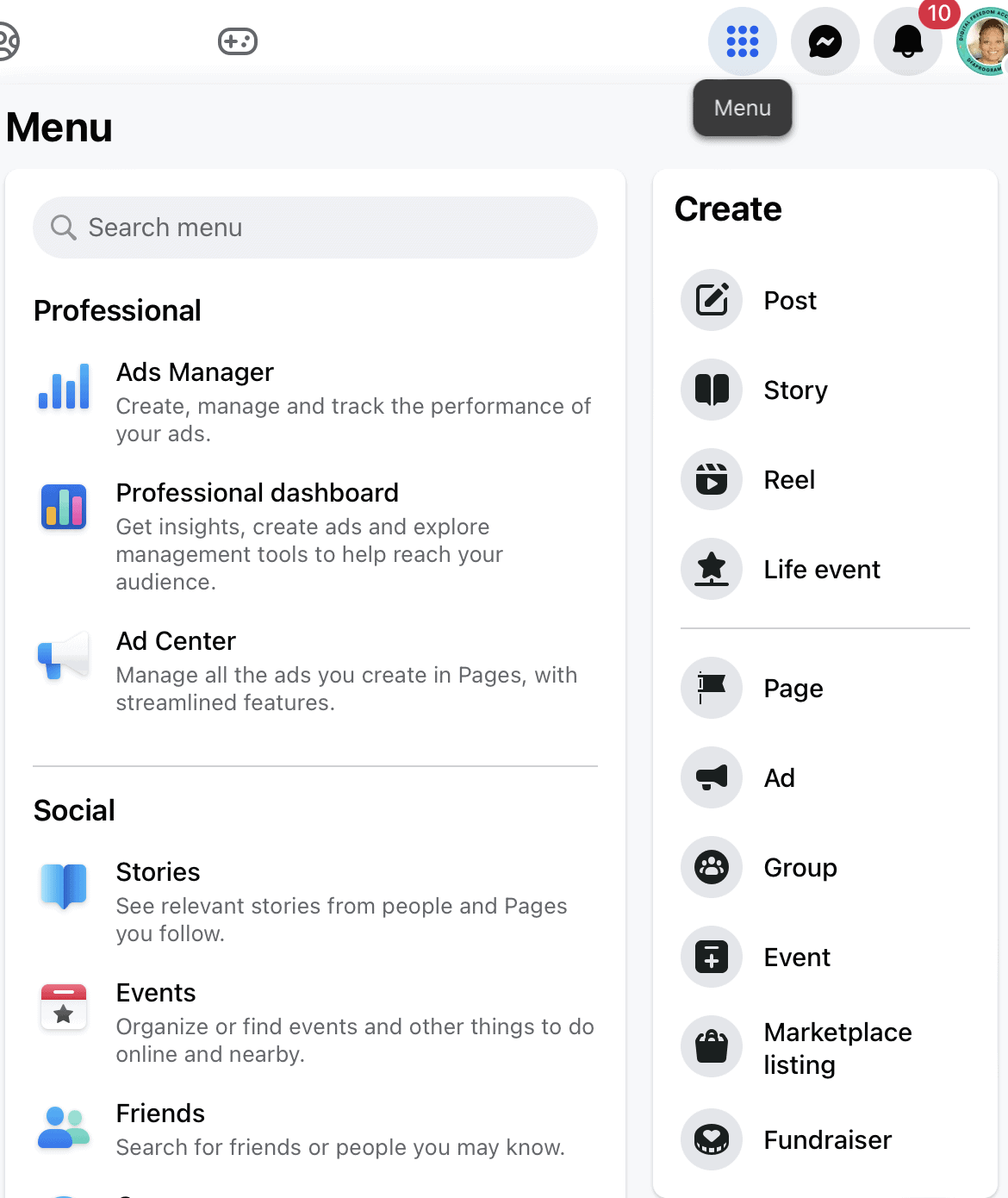
You’ll see the option to create a page in that menu.
Please note that apparently there are different versions of the platform depending on where you are located so yours may look a bit different.
After creating your page, complete the About section as much as possible.
If you are like me and you have a business that’s 100% online then there’s no need to include a physical address, phone number or opening hours.
Meta Business Suite
After creating your business page you’ll be given access to Meta Business Suite.
It is like the control centre for all your business needs on Facebook.
You’ll be able to upload images and videos to your library so that you can plan, schedule and publish content.
You can link your Facebook page to your Instagram account.
After getting a minimum of 100 likes on your business page, you’ll get access to insights (formerly known as audience insights).
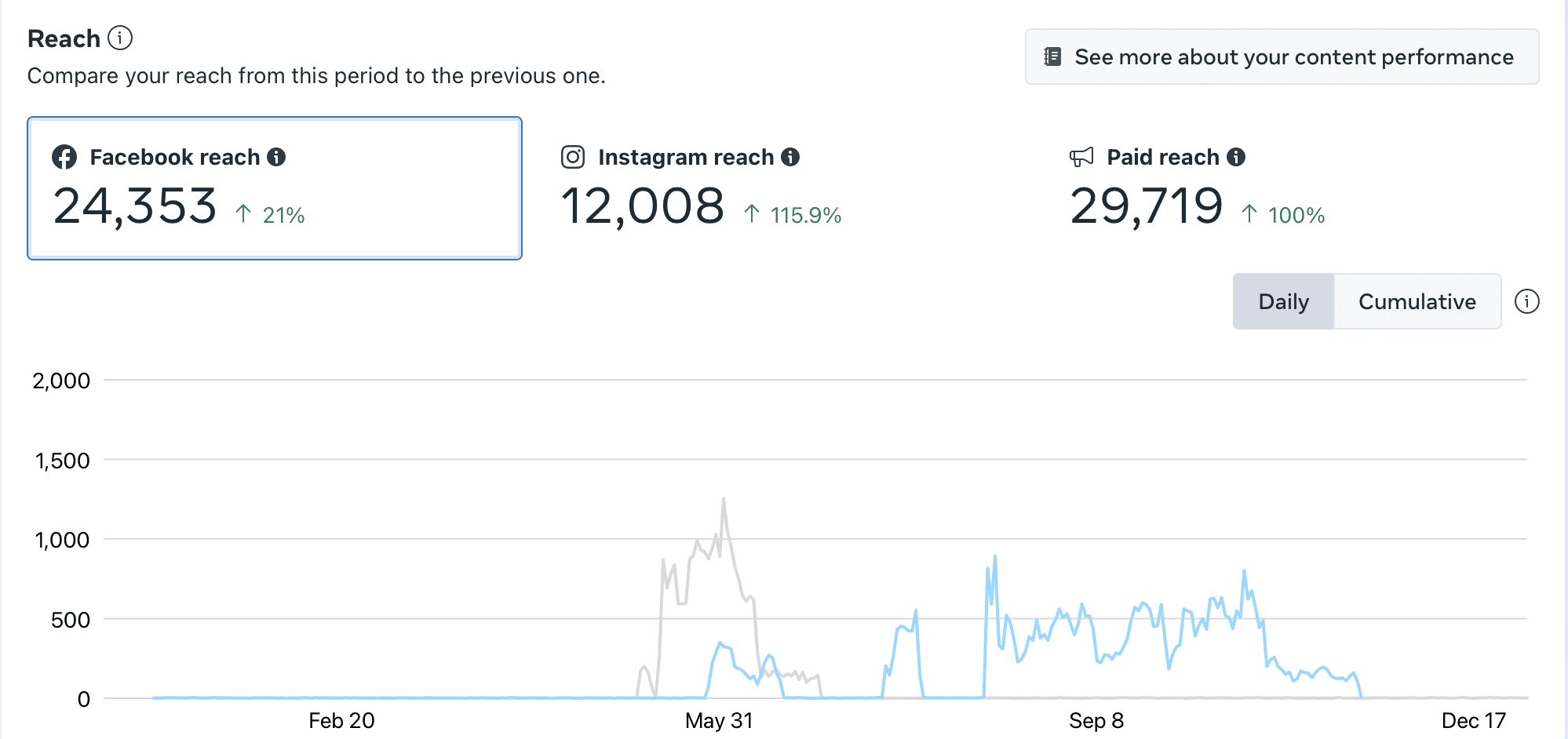
The scaled-down version of this control centre is called Facebook business manager.
If you want to understand the differences between the two platforms you can check out this resource here.
In my experience, you are better off using Meta Business Suite because it has everything you need.
Facebook Pixel
Many years ago when I was a new kid on the block learning about Facebook ads.
I never realised how important it was to help Facebook with audience targeting.
If there is one thing you need to do months or years in advance of running ads is to install your Facebook pixel.
You can use it to track your website visitors.
Here’s why…
The technology that Facebook uses to find leads and buyers for your products and services is extremely good.
Let me show you what I mean in real terms.
A few months ago I started running ads on Facebook to a specific audience.
In that space of time, my ad has been seen by close to 17,000 people and I got over 500 leads from that Adset.

Now imagine if someone gave you a list of 17,000 people and asked you to use it to generate leads for your business.
Will you be excited? Lol!!🤣
Installing your Facebook pixel is not the easiest thing in the world and the process keeps changing.
Rather than going through those steps here please head over to YouTube to get the most up-to-date methods.
How to Find the Right Audience
As I mentioned previously, one of the most important skills that you can develop from running Facebook Ads is the ability to do audience mining.
It’s very similar to panning for gold but without damaging your knees, messing about with metal detectors or covering a lot of territory.
In fact, all you need is a great understanding of the habits of your audience and access to the section or tab of your Business Suite called audiences.
It is advisable to develop or create a saved audience before creating a campaign.
To do this head over to “All tools” and scroll down until you can find “Audiences”.
When you click through you see the ability to create audiences in there.
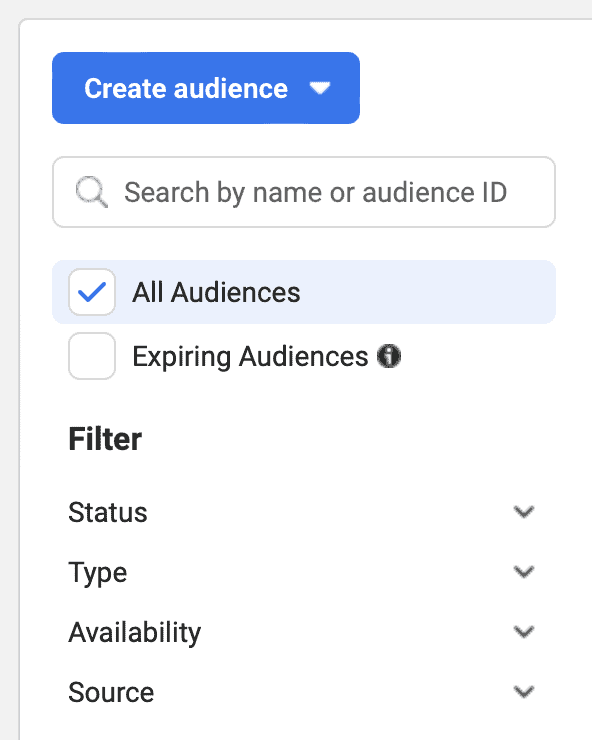
When you click on ‘create audience’ you’ll see the option to create a saved audience, a custom audience and even a lookalike audience.
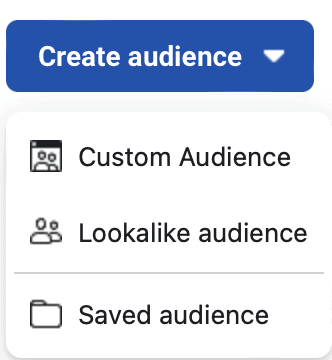
Audience Mining
Let’s spend a little bit of time looking at audience mining because it is where many people get it wrong.
The most effective campaigns are the ones where the person running the campaign has invested time and effort in audience mining.
For the purposes of this resource, we’ll choose the option to create a saved audience so that when a campaign is created we can just choose this audience.
After choosing a saved audience you should get a pop-up window that looks like this one.
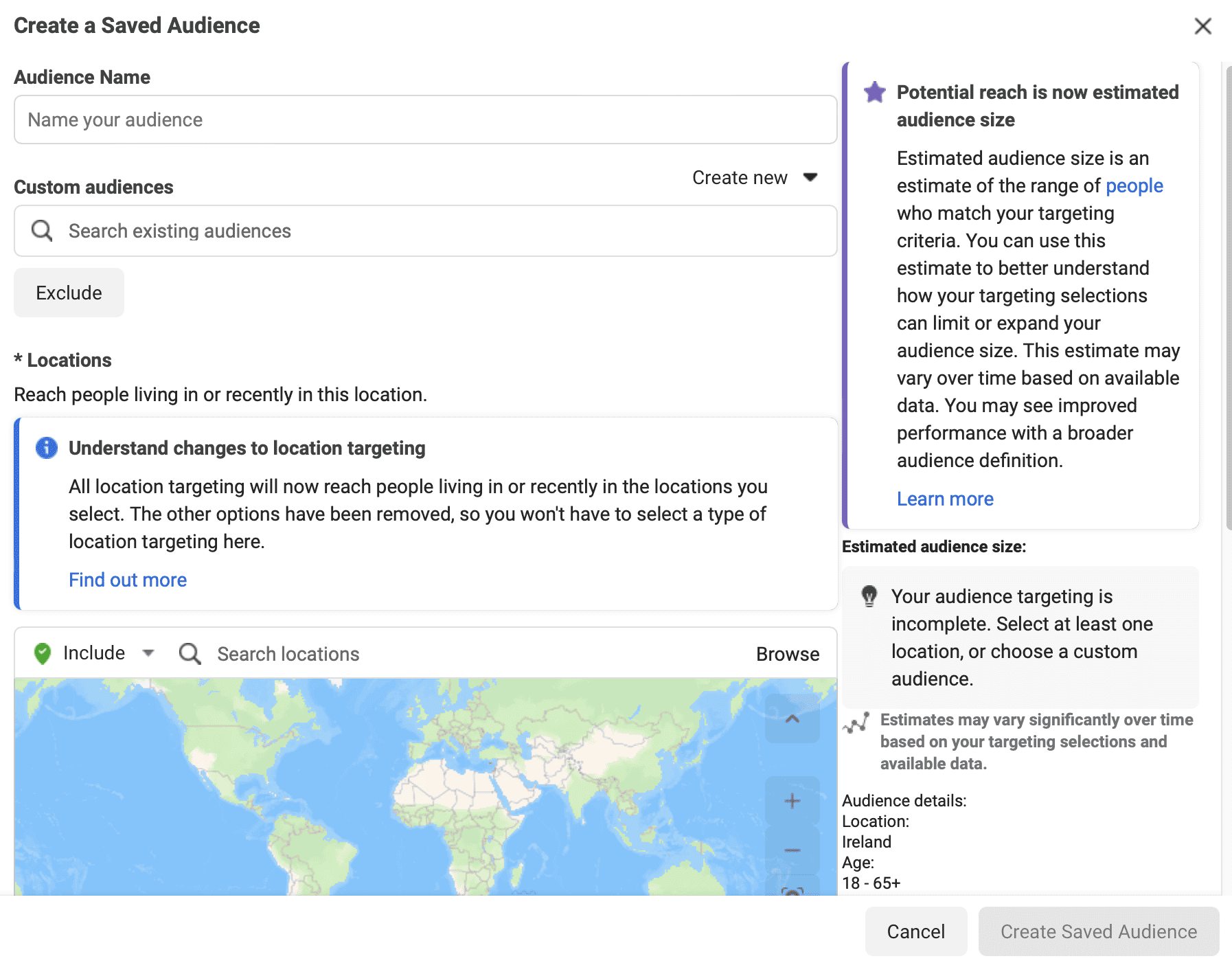
Give your audience a name, choose their location, age range, gender and language.
Next is the best section of all called “Detailed Targeting”.
Earlier on I mentioned a specific audience.
People who owned or had an interest in Peletons, wear Lululemons and spent winter every year at the Breckenridge ski resort.
Guess what??
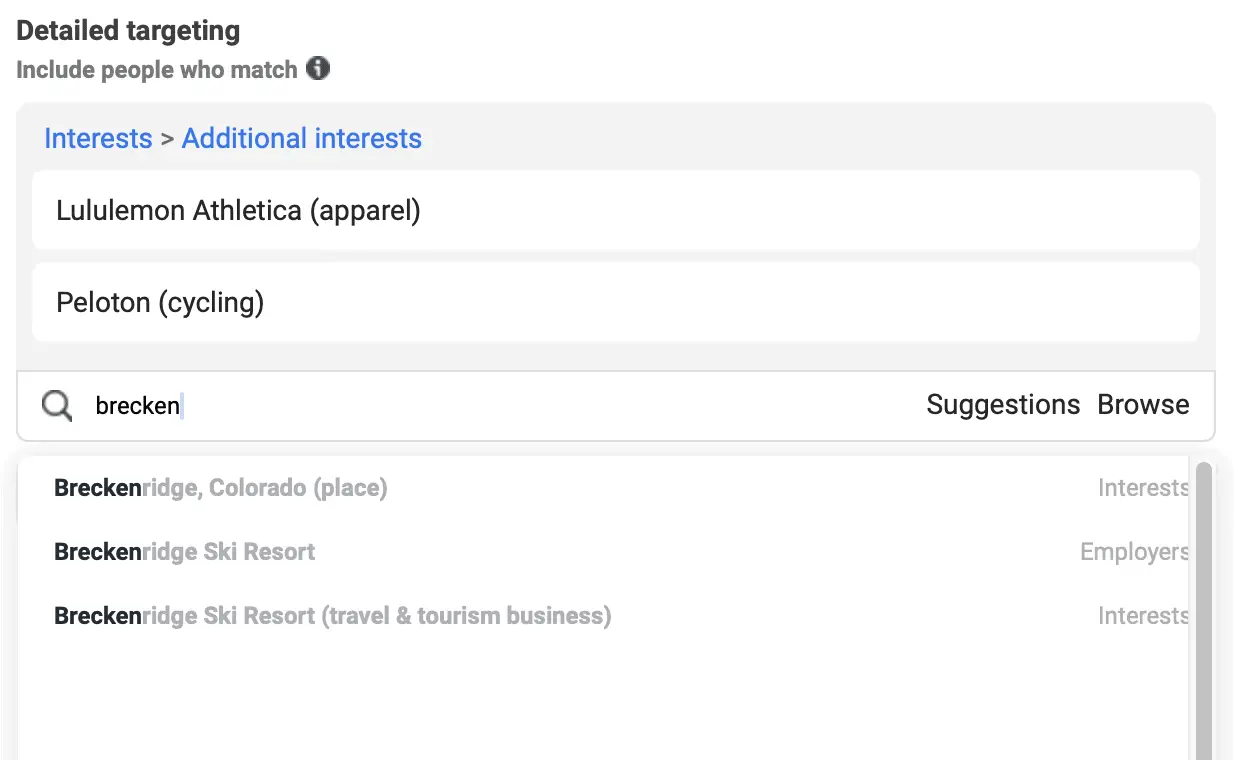
When I selected all three my audience size was 62 million which is too big.
So I opted to narrow my audience further and choose those who had an Instagram business profile admin.
My audience size went down to 2 million which is manageable.
Facebook Ads Funnel
Another well-known secret is to step your potential customers through a Facebook ads funnel.
When you look at the buyer journey there are several stages to include the following.
- Brand awareness
- Consideration
- Decision
- Retention
So, you can develop a set of Facebook ad campaigns that take people from becoming aware of your brand to signing up for a lead magnet, joining a masterclass or workshop, and purchasing your offer.
Finally, they purchase again and become a raving customer.
Here’s a big hint for you, people who are loyal to their brand include regular buyers of the following brands.
- Starbucks
- Apple
- Lululemons
- Pelotons
- Wholefoods
You might want to create a sticky brand like these so that you can build a loyal following too.
Facebook Ads – Phase 1
So, the first step in that journey is to write down your business goals and to get people to know that your brand exists.
This can be achieved by creating all or one of the following.
- Page likes campaign (for new followers)
- Video views
- Engagement
You’ll notice that in each of these campaign types, a very low commitment call to action is required.
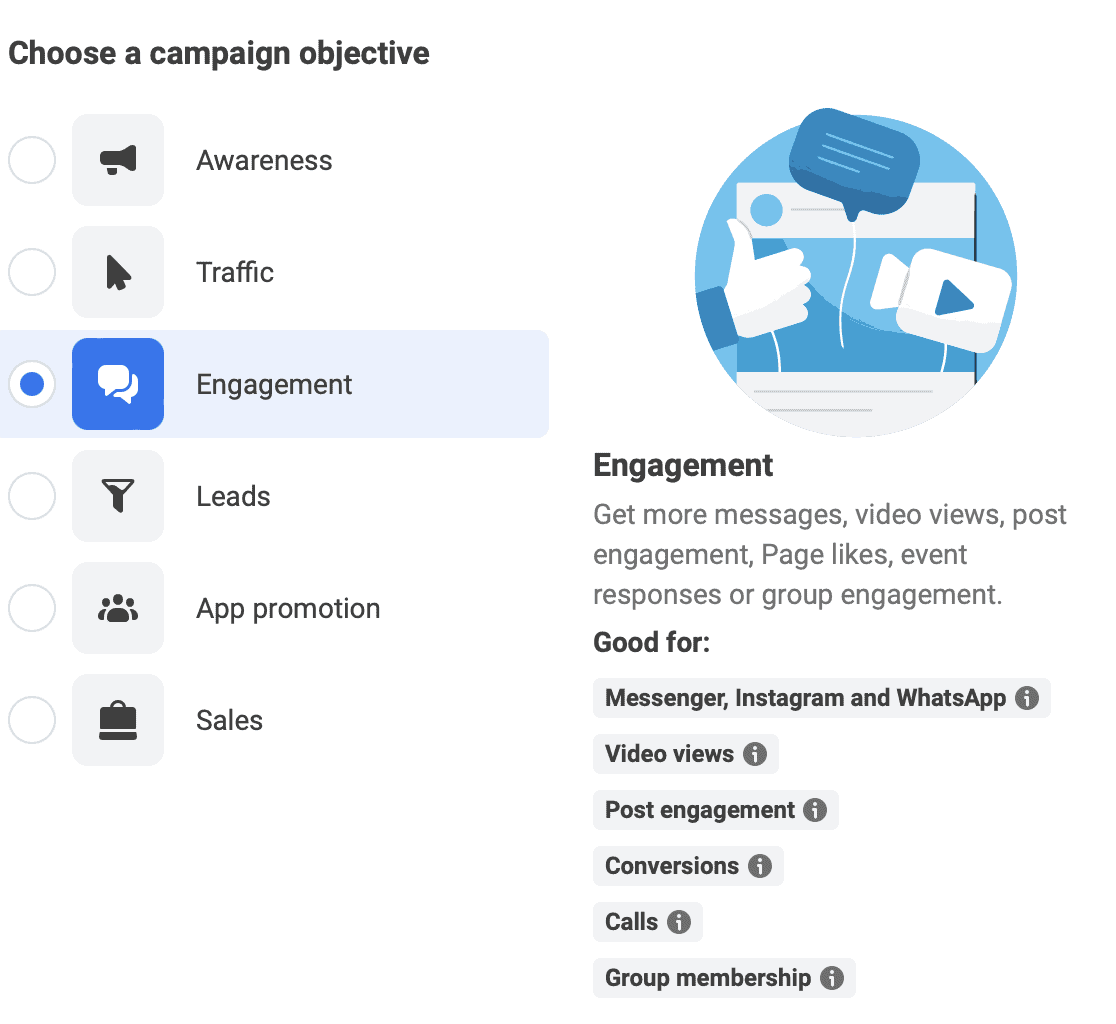
They can like, watch and react to a piece of content by liking it or even sharing it.
You can create ads using single images or videos by adding the images at the campaign level or using an existing post that’s published on your page.
In the know, like and trust factor phenomenon, potential clients are getting to know your brand.
Engagement campaigns are an excellent way to build social proof.
Facebook Ads – Phase 2
Now that they have seen you once or twice it’s time to test that brand recall with lead-generation activities.
People are now required to give you their contact information in exchange for something valuable.
This can be achieved with the following campaign types.
- Instant forms (on Facebook leads)
- Conversions (leads via a landing page)
- Messenger (asking people to send you a message)
Using any of these methods will require you to test your pieces of content to see which one will give you the qualified leads.
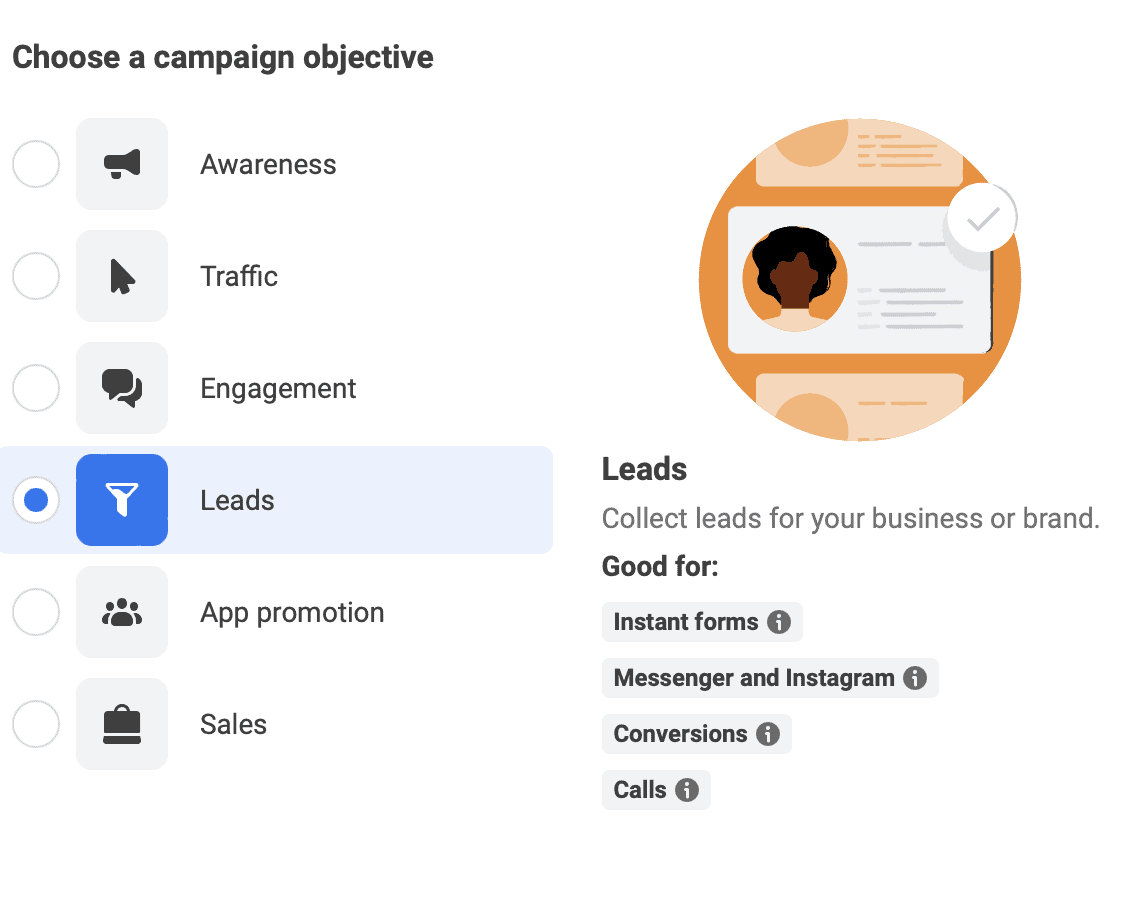
My advice would be to start by using the one that has the lowest path of resistance or quickest results.
You can start with Instant forms to collect email addresses and then move them to a landing page lead campaign when you find a winning lead magnet.
Facebook Ads – Phase 3
Now that your potential clients know you and like you, it’s time for them to trust you which is achieved with sales.
Here are the campaign types at this level.
- Conversions (run ads directly to a sales page)
- Messenger ads
- Booking a call
As I said earlier Facebook has this cool technology available that knows who are the people who complete forms, engage with content or make a purchase.
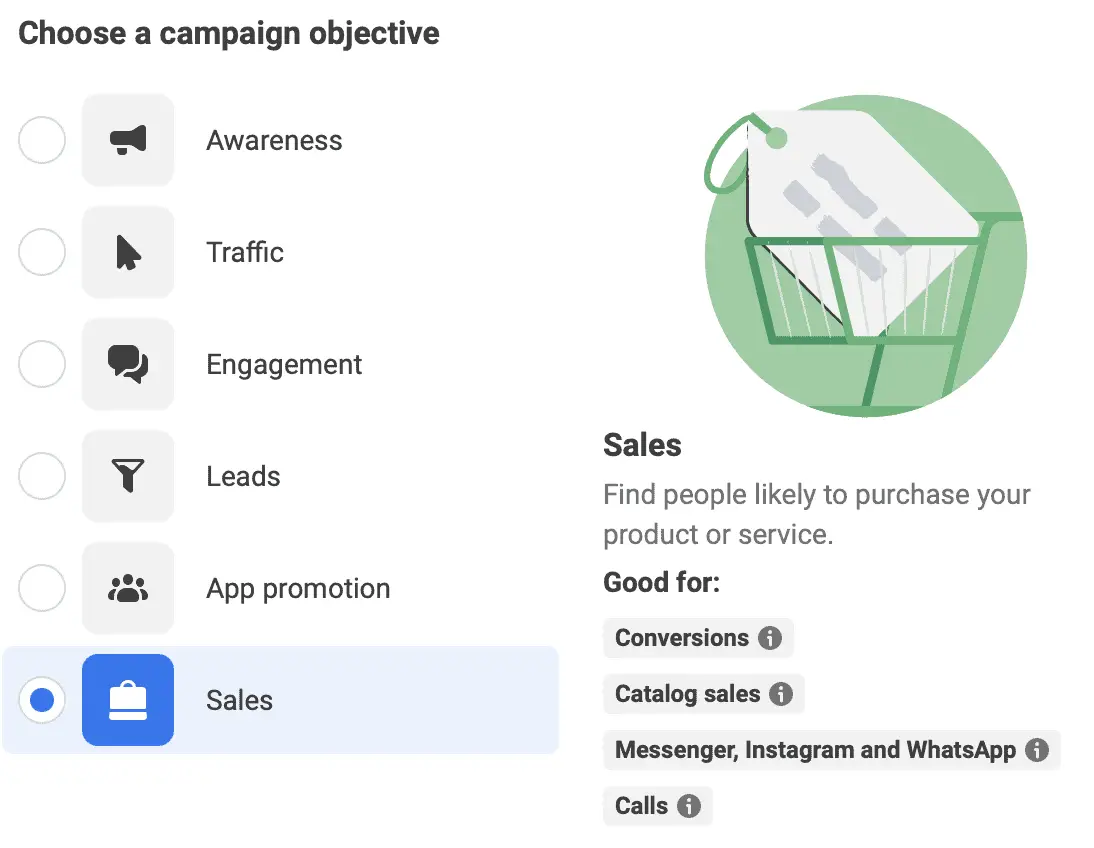
All you need to do is choose the specific audience with the right amount of pain that will take action.
A clever trick to test all the different offers you have available is to use a tripwire offer.
You can test 3-5 different offers to see which one will convert.
When you find the one that makes the most sales it’s time to send traffic directly to a sales page with this offer.
After you have your first 50 results or sales you can create a lookalike audience so that Facebook can easily find you more buyers.
Also, remember that you can build as many lookalike audiences as you want by country, region, age, etc.
Facebook Ads – Phase 4
At this point, you have your first 100 buyers and you want them to buy other offers from you.
You can email them and advise them of your new offers and you can use retargeting ads to get them to buy those new offers.
This is achieved by creating a custom audience of previous customers or people who take a specific action.
When you create a custom audience you’ll see a window like the one below.
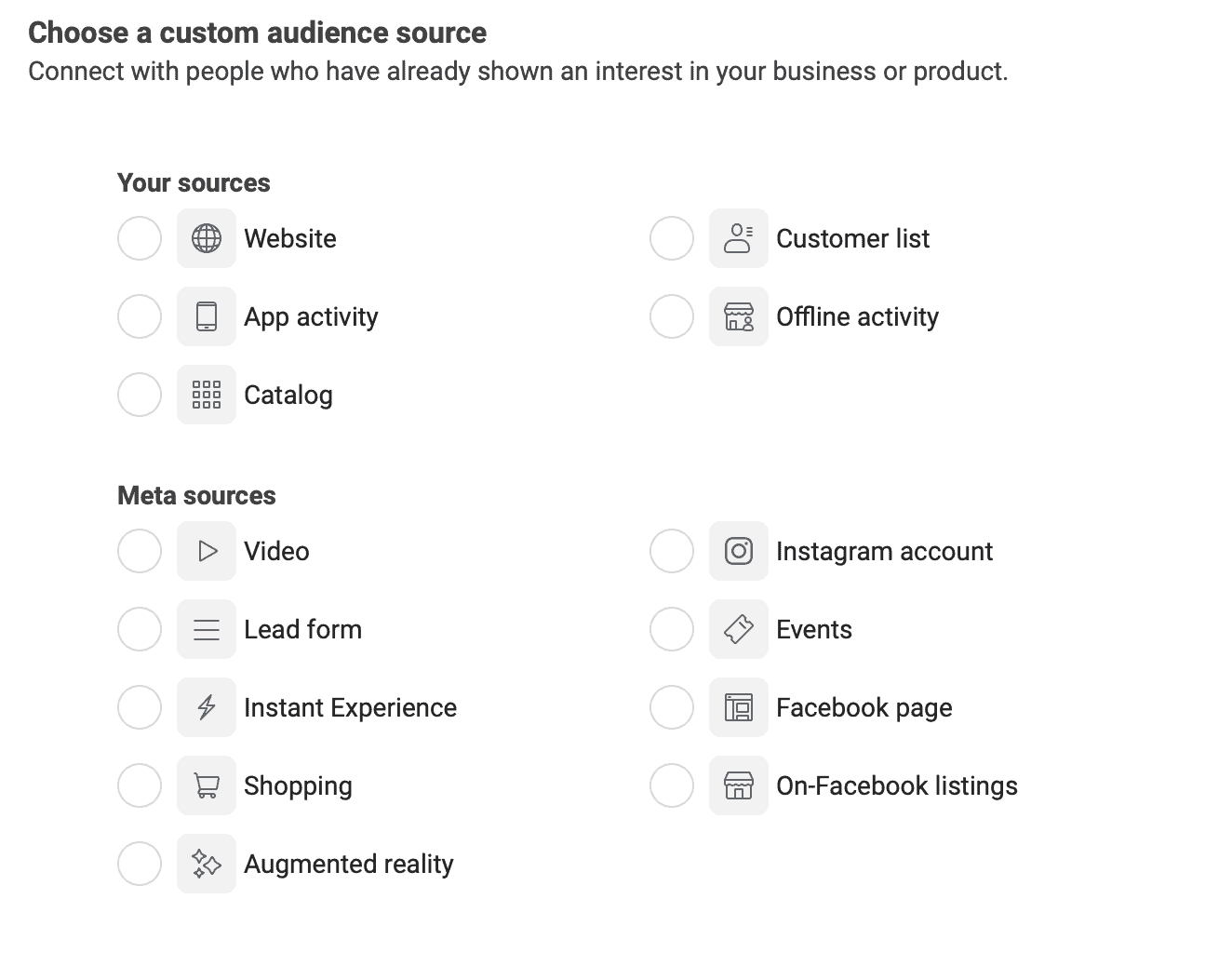
Then choose website and you’ll see a different window that looks like the one below.
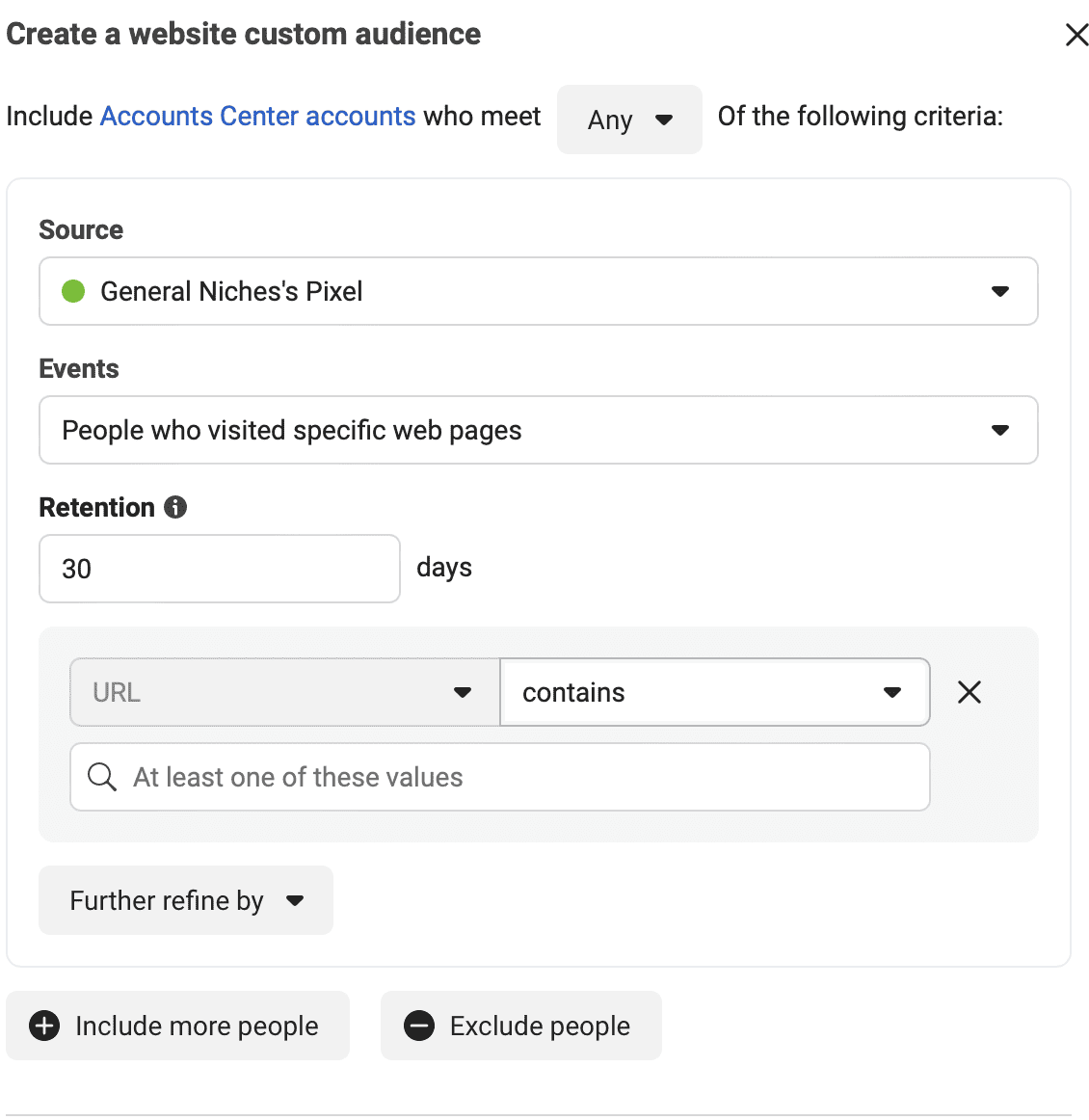
Remember that you can create as many custom audiences as you want to get the best results for your business.
After you’ve done this successfully you’ll be able to choose this as an audience inside your Facebook ad campaign.
How to Get Clients With Facebook Ads
Now that you have a better overall understanding of how Facebook ads work using a phased approach.
Let’s look at how to bring this all together in one neat bundle.
1. Create Your Offer
Quite a number of people get this piece wrong so let me explain what I mean.
If you have a program that teaches people how to become a better version of themselves using personal development.
Then alongside that program, you need to create an offer.
The offer is the container or packaging that you’ll be using to sell and deliver your program.
Your offer is the content that goes on the sales page in order to tell people about your program.
An offer is very different from your program and is used to put a framework around your program.
2. Lead Magnet
Only after you’ve spent time creating the offer and you’ve completed it can you create other smaller items like a lead magnet.
When you are super clear on your offer it becomes super easy to create the lead magnet.
Your lead magnet should be designed to bring people into your world by solving a small problem or answering a few questions.
It can also give them a quick win.
3. Remove Creative Burden ($7 Offer)
Depending on your type of business the next level up from a lead magnet could be a template or a planner that’s high value at a super low price like $7.
For example, if you are new to Facebook ads you’ll come to realise that there are a lot of assets that you’ll need to create like ad copy, images, lead magnets and videos.
How would you feel if someone else could offer you a shortcut like templates that you can customise so that you don’t have to create yours from scratch?
In the same way, with your audience think of how you can remove the creative burden from your audience by giving them a high-value, low-cost offer.
This $7 offer can be used as a trip wire when running your first set of conversion offers.
4. Appointment Bookings or Events
Depending on your type of business once you have the potential client on your list you can nurture them with email marketing.
Then invite them to book an appointment with you and close the deal.
The alternative way is to run an event like a challenge, a workshop or a masterclass and at the end invite them to work with you as a client.
The secret is getting them on your list or into your community like a Facebook group.

All About Conversion Rates
The one thing that everyone needs to look out for is a good conversion rate.
If you have all the other elements of your Facebook ad campaign ready to go and you are apprehensive, like many people, because you are scared to lose money on ads.
Here’s some advice for you on how to tell if your ads are performing well.
If your cost per lead is $1.50 – $2.00 each then check other statistics like your CPM, CTR and CTR Link-Click-Through-Rate.
Here’s a good rule of thumb to follow.
- CPM -> should be less than $30
- CTR all -> should be 4% or higher (if not, change the image)
- CTR Link-Click-Through-Rate -> should be 1.5% or higher (if not, fix copy)
If all of these are bad it could be the lead magnet itself or the audience. This is the reason why people hire a Facebook ad manager to figure all this out for them.
For sales conversion type ads you’ll also need to look at the cost per conversion and the return on ad spend (ROAS).
There isn’t a fixed rule for spend on sales conversion ads because it really depends on the lifetime value of your customer (LTV).
If your customer spends $2,000 and stays with you for 12 months then you’ll need to decide on your customer of acquisition (CPA).
Remember to factor in all the costs in your business like lights, heating, software and staff.
Maybe you’ll decide that you’re willing to pay up to $300 to acquire one customer so make the budget and stick with it.
Frequently Asked Questions (FAQ)
Here are some popular questions that you may have when it comes to setting up and running your first ad campaigns.
1. What’s the best audience for Facebook ads?
There are several ways to figure this out without a lot of work. If you already have an audience on a blog or social media then do some research on who those people are by looking at your analytics.
You can also go to the Facebook Ads Library and see what other people in your niche are doing.
When you find an ad that resonates with your offer have a look at who is engaging with their ads by going to those people’s profiles.
2. Do Facebook Ads Get Better Over Time?
Yes, they actually do. The first 7 days allow the algorithm time to understand who the target audience should be.
After the first 7 days, you may need to tweak the ad copy or the images.
It is a good idea to keep updating the images to give Facebook several types of content to keep the ad set fresh.
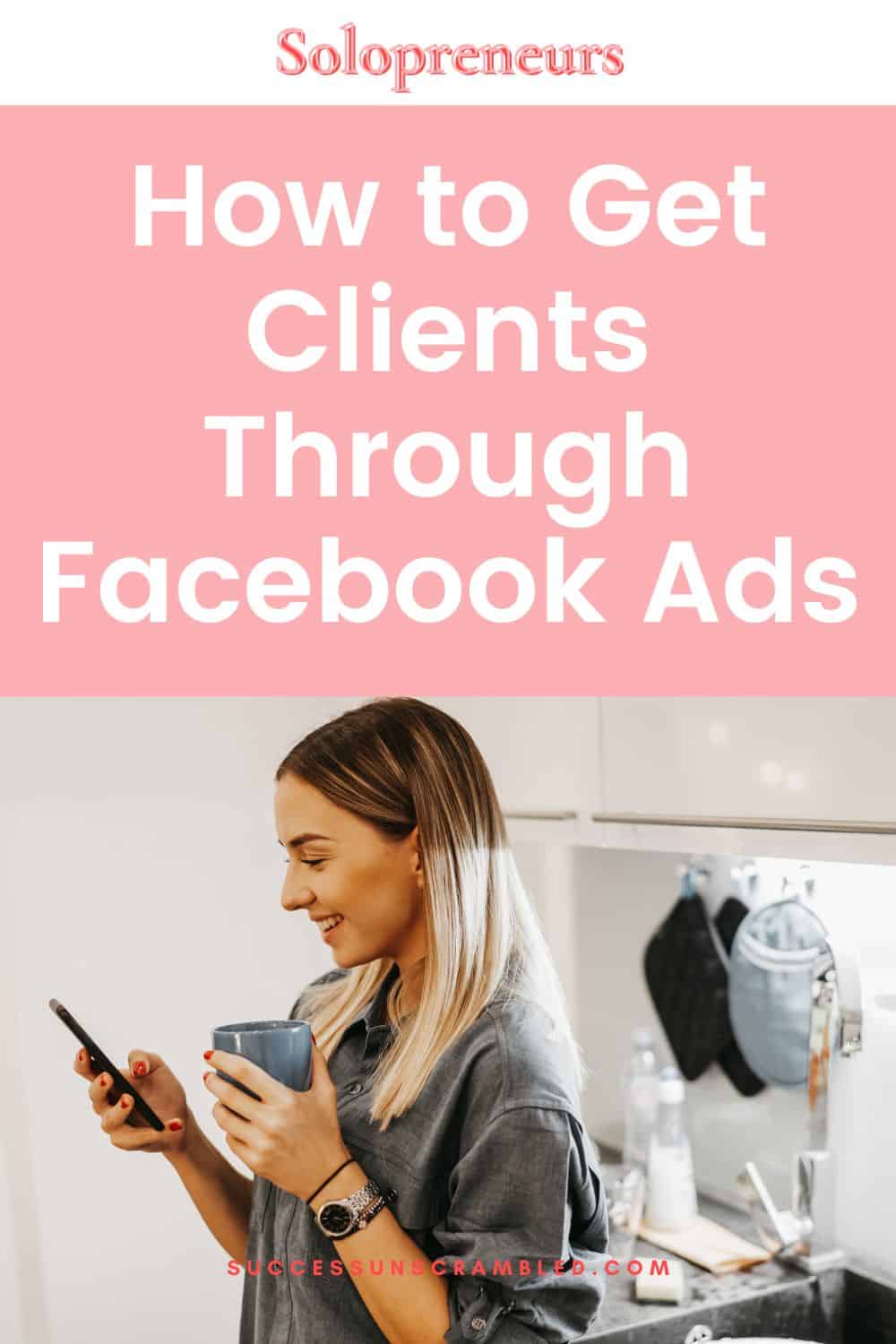
3. What are the Three Types of Targeting on Facebook?
These three main types of targeting include saved or the main audience, lookalike audience and custom audience.
4. Which Niche is Best for Facebook Ads?
Any small business owners who are selling their offers online. Your business will need to have either all or a section of it that can handle the digital side of things.
This could be lead generation or processing orders.
5. How Much Does it Cost to Run Facebook Ads?
Depending on the type of ad you can start from as low as $2 a day for Page Likes or engagement campaigns and $20 a day for Sales Conversion campaigns.
Summary
I have met so many small business owners and entrepreneurs who are terrified of losing money with Facebook ads,
I was there once upon a time but instead of living in fear of something that could help my business, I decided to master it instead.
I’ve always said to my fellow business owners to start small with a Facebook lead ad and then take bigger steps along the way.
Using Facebook ads is a great way to grow your email list when compared to depending on the traffic from a search engine.
It can take you one year to grow your email list to 1,000 subscribers using organic methods or 1-3 months with Facebook ads depending on your ad spend.
At the end of the day using Facebook ads is one of the fastest ways to land clients when you need them like yesterday.
Need help with Facebook Ads? Book some time in my calendar here for a free consultation.
20 November 2023, 1:34 am - 21 minutes 32 secondsHow to Attract New Clients in 5 Incredible Ways
Melia felt tired and frustrated from working 50-hour weeks, something needed to change fast.
She would do anything to start her own business but didn’t know how to attract clients.
Melia knew that if she didn’t figure this out in the next 6 weeks, she would need to quit her job of 14 years.
Yes, there’s a lot of information available on YouTube and blogs across the Internet.
However, what would be nice is if she could find a resource that would lead her through the client attraction process successfully, step by step.
Let me know if you struggle with any of these.
- You know that client acquisition is very important for your small business
- No clients means no cashflow, revenue or income
- It would be best if you generated a lot of income to become profitable
- Getting your business to 5-figure months consistently is the ultimate dream
If only there was a way to get this process automated or at least have multiple streams of consistent high-quality leads.
In this resource, you’ll discover how implementing a few simple systems can generate leads that’ll help you generate the income and profits needed to go laughing all the way to the bank.

5 Things You’re Probably Doing Wrong
Before looking at those 5 incredible ways to attract clients let’s spend some time looking at the things that don’t work.
At least when you know what not to do you’ll understand the reason why you’re not generating leads for your business.
You’ll also have a better idea of how easy it is to settle for these default or vanilla options in your business.
1. Talking to Everyone
Several years ago when I was brand new to business I didn’t understand the concept of target marketing.
When asked by my business advisor who is my target market, I responded with, “Anyone who needs my services”.
There’s a common phrase in marketing which says, when you talk to everyone, you’re talking to no one and this is so true.
2. Not Digging Deep Enough
Another common mistake is when you are addressing a specific target audience you are not digging deep enough.
What I mean by this is that you are solving a core problem for your potential customers and this core problem has symptoms.
For example, when someone is constantly late for all their appointments, what is the real problem? Please don’t say that they need a watch. Lol!!
3. Wrong Platform
You might not be someone who has difficulty with talking to everyone or digging deep but what about the platform you are using to promote your business?
Are you using the right platform where your ideal client is hanging out?
Business is so weird, sometimes I find certain types of audiences hanging out in the strangest places.
4. Suffering From Analysis Paralysis
This may not be you but there are some people who spend a lot of time analysing everything before taking action.
They’ll choose 2-3 platforms and go on each one to spend time observing conversations and results others get.
However, spending 6-24 months lurking and observing will definitely not bring you leads.
5. Stuck in the Content Creation Phase
This is probably the most popular challenge that many new business owners, entrepreneurs and freelancers face.
If you are stuck trying to make your content perfect before publishing it then I have some news for you.
Nobody is perfect and your client cares more about solving their problem compared to any errors you made.

Who Are Your Potential Customers?
I know I mentioned this briefly previously but let’s take a look at this in a little bit more detail.
Understanding who your potential new customers are will not only help you to better customise your research process.
It will also help you to coin a message that speaks to them at a deeper level.
You’ll have much better results if you spend time listing out the things that irritate them or even keep them awake at night.
In the previous example, I mentioned the fact that someone was late for all their appointments.
Let’s look at several reasons why this might be the case.
- They are tired all the time
- Maybe they have trouble sleeping
- Potentially, they may need an eye test
- They are unhappy about their current situation in life
- It’s possible that they may be experiencing a mid-life crisis
Figuring out the real reason why your potential clients are tired, sleepy, sad, worried, stressed, frustrated, bored or apprehensive would help you to speak to their needs better.
Develop a Marketing Strategy
It’s important to look at the promotion of your business from a 10,000-foot view because it helps you discover how to attract clients.
There was a time when the phrase marketing strategy made me break into hives.
However, it simply means taking a step back and looking at your business holistically with the end result being that you are meeting that big objective using a marketing plan.
The most effective way to achieve this is by looking at the journey of your ideal clients and reading their thoughts at each step.
Here’s an example map of your potential client’s journey.
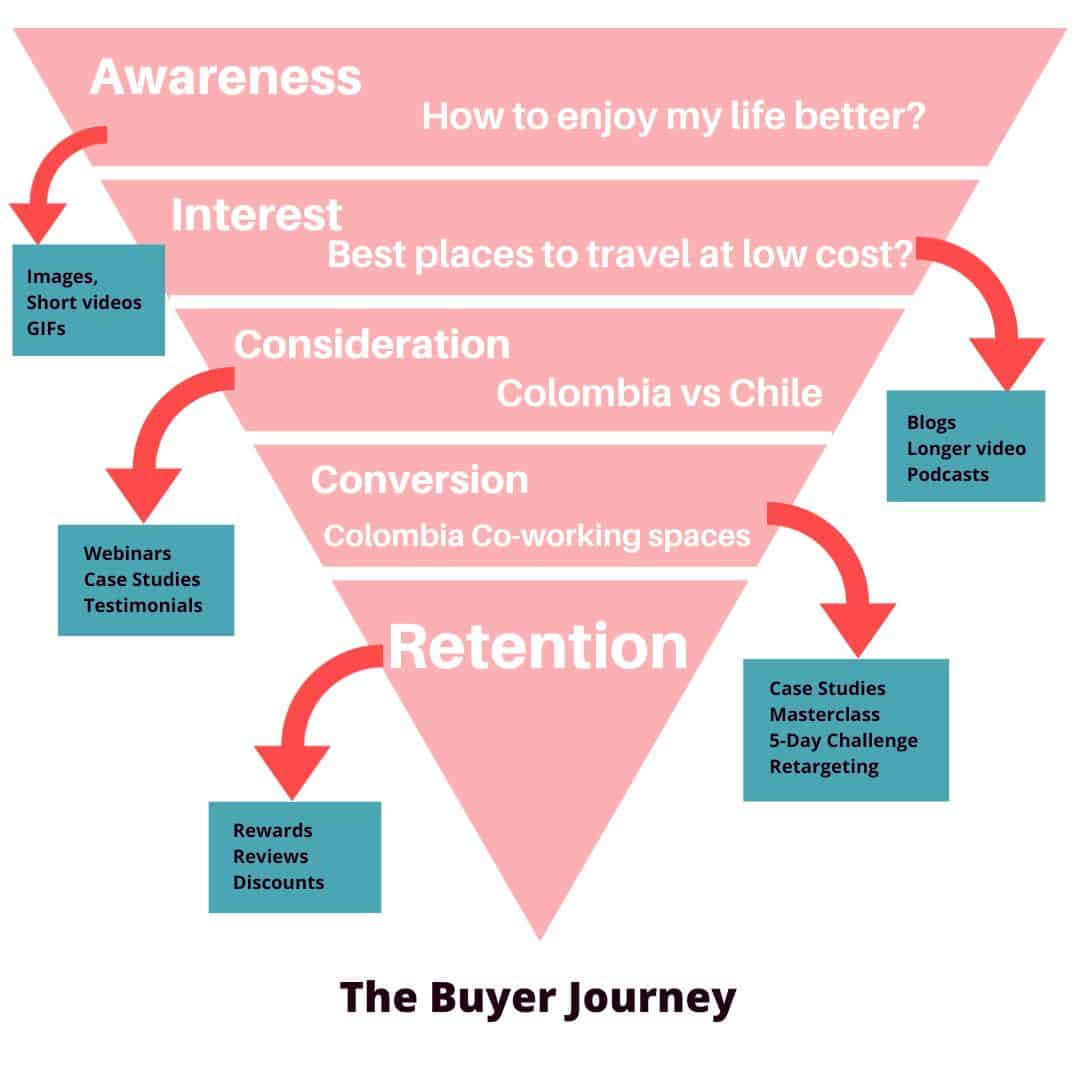
Notice how their search or questions change the closer they get to making a decision to buy a solution.
Your digital marketing strategy will look at each stage of the journey and decide what is needed to get to the end goal.
This could include collateral, budget, audience size and conversion rates. Most people would work backwards through the journey.
If you need 20 sales a month, how many leads would you need to generate at the start of the journey?
How to Attract Clients in 5 Sensible Ways
Now that you have a good idea of what not to do, who your potential clients are and how to develop a digital marketing strategy let’s look at how to attract them.
By the end of this section, you will have 1-3 client acquisition techniques that you can implement in your business in a single weekend.
Remember that there’s no need to overthink it.
1. Short Videos
You may have noticed that at the top of the client journey diagram, I suggested images, GIFs and short videos for brand awareness.
At the time of creating this resource, Reels on TikTok, Facebook and Instagram are taking the world by storm and it’s also a great way to attract clients into your business.
Would you like to know what kind of short videos to create to attract your audience?
Let me introduce you to two different tools.
Social Blade
The first is called Social Blade. Before you can use it you’ll need to find 3-5 accounts on Instagram and TikTok that your ideal customers follow.
Grab their usernames and research them using Social Blade. If their account is growing exponentially fast then they are doing something right.
You’ll see in the screenshot below the fast growth of Tailor Swift’s account without adding much content.
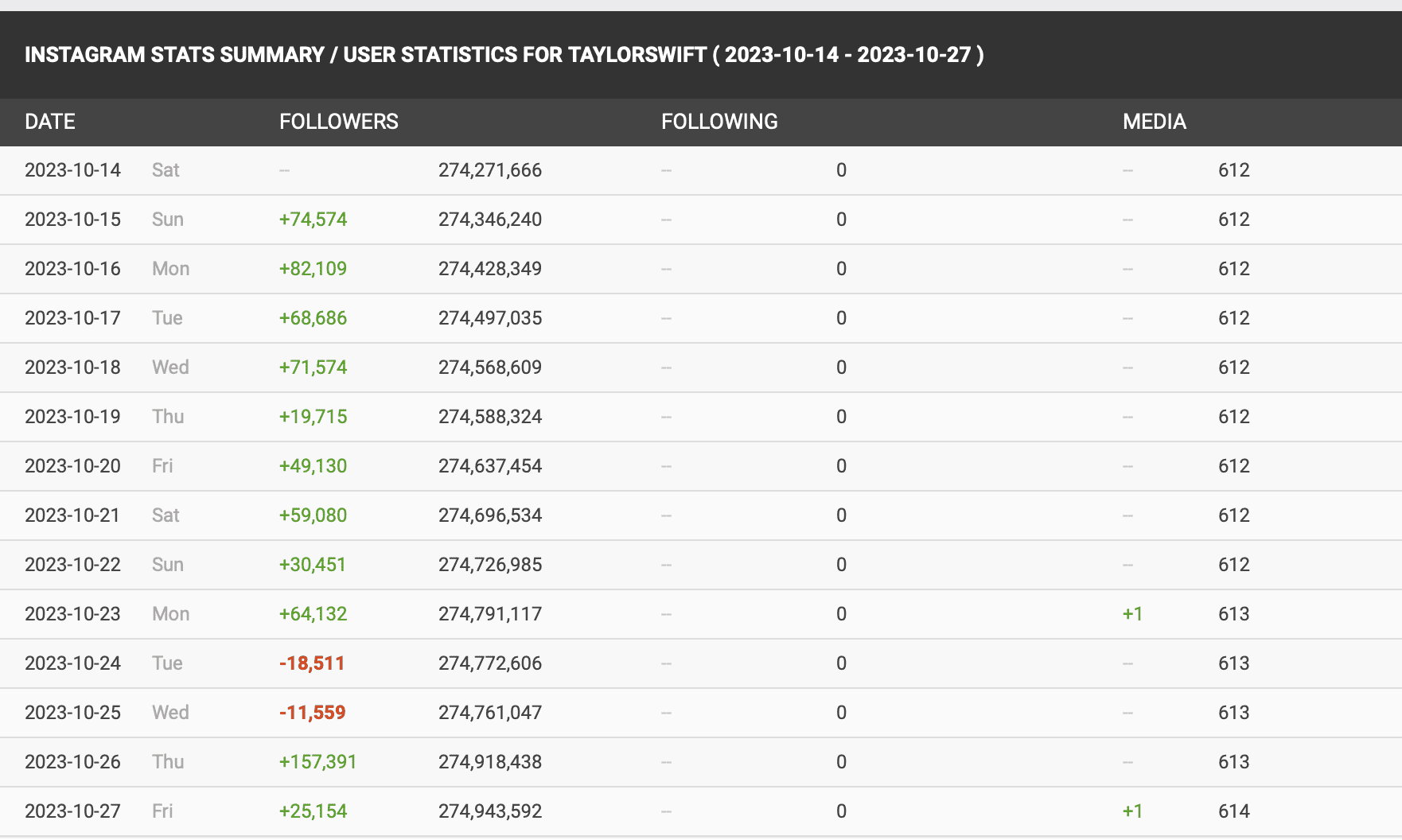
So, look at the videos that have many more views than normal.
PipiAds
The second tool is called PipiAds. It allows you to see which ads are performing the best by country and category.

You can browse their platform for free or upgrade to a paid plan to filter your search results.
It means that you get to see what’s working right now for short-form video content.
2. Blogging
A very organic way to attract potential customers to your business is by starting and growing a blog. This method is also known as content marketing.
The reason why this is great for client acquisition is because your ideal clients find you when they are searching for a solution via search engines.
Of course, there is a right way to develop a blog using search engine optimisation.
One of the best tools on the market to accomplish this is called RankIQ.
Personally, I have been using it for over 2 years and it takes the heavy lifting out of keyword research by providing the relevant keywords you need.
The trick is that you need to consistently publish 8 blog posts a month as a new blogger for 12 months.
If you are an existing blogger then you’ll need to publish 8 pieces of content and rewrite 8 old ones.
While it is not easy to develop a blog it is so worth it because the results are exponential.
3. Testimonials and Case Studies
To help attract your new clients to your business showcasing a case study and a number of testimonials can rapidly build the know, like and trust stages.
Your ideal client will see people just like them in a before-and-after scenario that’s associated with your product or service.
They will think to themselves, if this person can have this level of success chances are that I can have a similar experience.
You can share these assets about your satisfied customers on your social media platforms as well as with your email list.
Testimonials in the form of video content tend to increase conversions faster.
4. A Masterclass or a 5-Day Challenge
Giving clients a taste of your teaching style before they buy or at a relatively low cost is a great way to help them decide if you are the one to solve their problem.
This can be accomplished using a masterclass, workshop or a 5-day challenge and offering them a free gift for attending.
At this stage on their journey, they have a shortlist of solutions that they believe are suitable for them.
However, choosing the right one is difficult simply because they are not clear on the transformation that you offer.
Inviting them to join community events where they get a taste of what it’s like working with you really helps with clarity.
Also, giving them special offers if they buy within a certain time period will help you to seal the deal.
Either way, you’ll have their contact information which will help you to nurture them using email marketing campaigns.
5. Customer Retention
One of the least practised client attraction activities is customer retention.
It is really important to keep your current customers happy and to encourage them to refer your services to their friends as well as their peers or other people in their network.
Using community areas like Facebook groups is a great way to nurture existing customers and even get innovative ideas for new products and services.
Even by establishing a solid referral program where you offer a commission on each sale that your clients refer to you can drive new hot leads to your business.
Also, reaching out to complementary businesses and building lasting relationships with them will also drive more warm leads.

How to Attract Clients FAQ
Let’s look at the top frequently asked questions many small businesses have about how to attract clients.
1. How do I attract my first client?
There are two main ways to attract your first client if you are a coach, service provider or consultant.
- the first way is to create content that speaks to your ideal target client’s need and publish it where they are hanging out like LinkedIn, Facebook or Instagram. Or you can even publish it as a blog post.
- another clever option is to deliver free training like a workshop or masterclass that addresses a specific need for your target audience in a Facebook group or on Eventbrite.
2. How do you get clients without experience?
You can offer them a small item from your list of services or an offer for free (aka pro bono work) in exchange for a testimonial.
For example, if you create Reels or other short-form videos for brands you can offer the very first one free of charge in exchange for a testimonial.
3. Why am I not getting clients?
There could be a variety of reasons why you are not getting clients but the top 5 reasons include:
- talking to everyone, your message is not targeted
- not digging deep enough
- wrong platform
- suffering from analysis
- stuck in the content creation phase
4. How do you make people buy?
While this is not the easiest question to answer without a comprehensive understanding of the specific situation, it is important to understand why people buy in the first place.
Generally speaking, people buy to move away from pain or to move towards pleasure. Therefore, your offer must help them achieve one of these two goals.
Here are 4 things that you can do to make people buy.
- Create an offer that addresses their pain points
- Develop an offer that helps them move toward pleasure
- Make it easy for them to take action (offer a guarantee, payment plan or use scarcity)
- Ask for the sale (would you like to go ahead with it?)
Summary
Attracting clients can be a seamless process when you spend some time developing an overall marketing plan to include each stage of your client journey.
Yes, everyone is not going to be at the same stage so this is why it’s important to have a community event 3-4 times a year.
Diving deep into their thought process rather than staying at the surface level will set you apart from everyone else.
Taking a creative approach to talking about their deep problems as well as your solution will help to develop the know, like and trust journey faster.
Are you looking for other techniques to get clients? Check out these other 41 ways to get clients online.
Over to you, what will you now include in your marketing plan for the next 12 months?
Need help with your marketing plan? Avail of one of my free consultations here.
6 November 2023, 1:33 am - 23 minutes 21 secondsHow to Get Clients From Facebook Groups [Bank $1,000]
Are you wondering how to get clients from Facebook groups without feeling icky? You’ve come to the right place because I’ve made at least $10,000 using this method.
In fact, let me tell you the story of Ethney…
Like many people getting started in business Ethney had big plans of how well her business would do during its first year.
Ethney was a planner so she wanted to prepare everything before finding her first client.
She developed a solid business plan, put all her software and systems in place, and got her branding and website ready.
She also hired an accountant and even consulted with a lawyer for her contracts.
So, when you look at her business from the outside it was perfect.
However, there was only one problem…
Ethney didn’t have a single client.
It means that she really needed to get clients fast otherwise she’d end up with one expensive hobby.
So, what can she do to resolve this problem?
In this resource, you’ll learn 5 ways to find clients using Facebook groups as well as what you need to do to be ready to get paid.
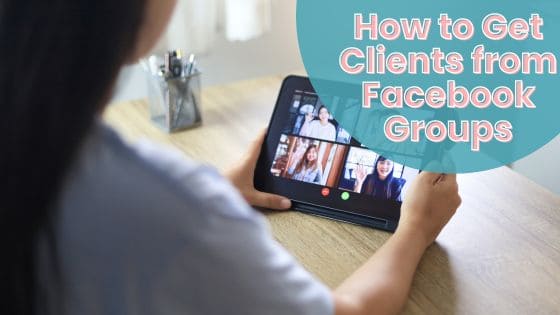
5 Reasons Why You’re Not Getting Clients in Facebook Groups
Before diving into how to quickly and easily find clients using Facebook groups, let’s first at 5 ways that don’t work.
A little background about me…
I started my digital business just before 2020 when we had that major global event.
My first client as well as my first $5,000 online came from me finding a client using a Facebook group.
I’m telling you this so you’ll realise that I’m not just talking about theory but something that worked for me in real life.
So, here are 5 ways to repel potential clients inside Facebook groups.
1. Ignoring a Potential Client’s Request to Not Send a DM
I see this quite often inside Facebook groups where a potential client would say something like “no DMs”.
Quite a number of freelancers or VAs would ignore this and send a direct message anyway.
I remember there was a time when I advertised a role for one of my clients and I asked potential freelancers to send me a DM.
It was so overwhelming that I swore never to do it again.
2. Not Paying Close Attention to Their Requirements
One of the most annoying things anyone can do when offering a service is not ‘listening’ to your potential client’s needs.
When a prospective customer publishes a post inside a Facebook group giving an overview of their needs and pain points.
In many instances, they are looking for a specific solution or result.
For example, the person may say, “I’m not looking for a program or training but a done-for-you service”.
A freelancer may write in the comments, “___________has a really amazing program that would be a great fit for your needs”.
What does the client want? These potential customers are normally cash-rich and time-poor so they have no interest in yet another training program.
3. Using Vanilla Responses When Commenting
When trying to get the attention of new clients one of the best ways to get lost in the crowd is to reply like everyone else.
Responses like “I sent you a DM”, “here’s a link to my portfolio” and “Applied”.
Yes, I hear complaints all the time from freelancers who say that they don’t bother applying for a role that has dozens of comments on it.
The question though is, what are you doing to stand out in that crowd?
4. Doing a Copy and Paste Attempt
Another reason why you’re not getting clients using Facebook groups is when you take a slapdash approach.
In other words, you prefer to hurriedly apply or reach out to 100 potential clients every week.
Instead of spending quality time reaching out to only 25 using a unique approach for each one.
Remember that quality beats quantity every single time.
5. Looking for Work Posts
This may sound strange…
You are looking for clients and publishing a post inside a Facebook group saying that you are looking for clients doesn’t really work.
The reason for this is that it screams desperation and potential clients will take advantage of this weakness.
There is a clever way to do this which I’ll mention later in this resource.
Your Ideal Clients
Okay, to begin this journey, having a very clear picture of your ideal client would help you to succeed at finding clients in Facebook groups.
If you don’t know who your ideal target audience is then you won’t have a deep understanding of how you can help them.
Let’s look at a specific example of a social media manager.
As you probably know when a client is looking for a social media manager the person they are likely to hire is someone who understands their clients.
Here’s why…
Your ideal client dislikes the hiring and onboarding process, so the person who can hit the ground running is the person who’ll get the job.
Take some time to figure out what you enjoy doing the most in the services that you provide.
Also, figure out which clients you absolutely enjoy working with to provide that service.
Knowing who your ideal client is, where they hang out, where they go when they have specific questions and where they are in that painful journey will enable you to speak to their need better.
Joining Relevant Groups
When you know who your ideal client is and where they go to ask questions then it’s time to join those groups.
Did you know that as of August 2022, there are over 10 million groups on Facebook? That’s a lot of Facebook groups!
Also, the maximum number of groups that you are allowed to join is 6,000.
It means that there is so much opportunity out there when it comes to finding clients in large Facebook groups.
Are you still wondering which groups to join to find your clients?
Let me ask you a question…
What software or platforms are your clients using daily in their business?
When they have a problem or question with that platform where do they go for help?
Let me give you a practical example, I enjoy helping clients with Kajabi and ActiveCampaign.
So, I’ve joined groups in that area of specialisation so that I can meet potential clients.
For example, Kajabi has an official support group on Facebook.
Therefore, you should do the same, even if all your clients are interested in are bullet journals or pretty stationery.
Depending on your offer remember that you can also join local groups to find clients.

Start Your Own Facebook Group
Did you just say that you cannot find a group on Facebook where your clients are asking questions?
If you said yes, then I would encourage you to create your own FB group to develop a sense of community.
Now, I have to tell you that growing your own Facebook group is hard work and it does require some level of strategy to pull it off.
Using Facebook lead ads or Facebook ads with the lead objective is an effective way to grow your Facebook group.
The good thing about having your own Facebook group is that you decide who gets in or not.
Your Facebook group members will get access to you and learn the best practices for their business.
You get to post whatever you want (well almost because Facebook is now deleting posts everywhere like crazy).
You’ll have a group of business owners at different stages of their growth journey and it means that your pipeline of prospects will always be full.
As a service provider, you can publish valuable content and even use live video to warm up the members of the group so that they can become ideal customers.
Another advantage is that you’ll get to assign group admins and assess your client’s needs by looking at the popular posts inside the group.
Create a Facebook Business Page
In order to build that know, like and trust factor online it’s important to have a presence about who you are and what you do.
It not only builds brand awareness but tells people in your industry that you are serious.
A great way to achieve this is by having a Facebook page. It demonstrates that you are serious about doing business online.
If you are worried about having a page without any likes or only your friends and family like the page.
Remember that you can always run a page likes campaign so that you can get to your first 100 – 200 page likes.
It’s important to complete it as much as possible so that you can let Facebook know that you are serious.
There’s no need for you to add an address or phone number and you can always link to another social media platform if you don’t have a website just yet.
How to Get Clients from Facebook Groups
Now that you have an overall idea of how to know your ideal clients, why join relevant groups or even create your own Facebook group as well as what you shouldn’t do.
Let’s look at 5 ways to find clients using the strength of Facebook groups.
Remember that you don’t have to use all of these methods.
In fact, just using one of them will get you the results that you need.
1. Answering Questions
This one may or may not come as a surprise to you but answering questions in a clever way always sets you up as an expert.
The answers you give must provide value without expecting anything in return.
In fact, when you answer the question it would be like writing a summary of a blog post for the question that has been asked.
Of course, there are some questions that would take a bit of screen sharing to illustrate the solution so try bullet points instead.
So, do as much as you can within reason.
At the end of your answer or at the start you can say something like this.
“Several of my clients had a similar challenge and the way I solved it was….”
Or, “some of the members of my group had a similar challenge and we got it sorted within 24 hours by doing…”
2. Asking Open-Ended Questions
Sometimes a potential client may come into a group and say something like, “I’m trying to make a decision between X and Y, what’s your preferred option”.
Most service providers will jump in the comments and say, “X” or “Y” but you need to be the person that sticks out and instead ask an open-ended question.
In case you don’t know what that is, these types of questions need a deeper answer other than yes or no.
They normally start with, who, what, where, when or why.
The response to this type of question is never a one-word answer and the response will give you the ability to ask even deeper questions.
When you ask these questions you stand out as an expert and as someone who really cares about your potential clients.
3. Building Relationships
I am sure that you didn’t see this one coming. Lol!!😂
So often we forget that social media is a place to get to meet new people and build a network of people who know, like and trust each other.
Yes, you are looking to find clients online but it’s also important to find people who you enjoy working with for a long time.
If you have been a freelancer or a virtual assistant for some time, you’ll know that there are scammers as well as clients who can be scary to work with.
Therefore, building relationships will help you to know who the nice people are in a group.
Also, you’ll get a bunch of referrals from building relationships because these people know you as the go-to person for the service you offer.
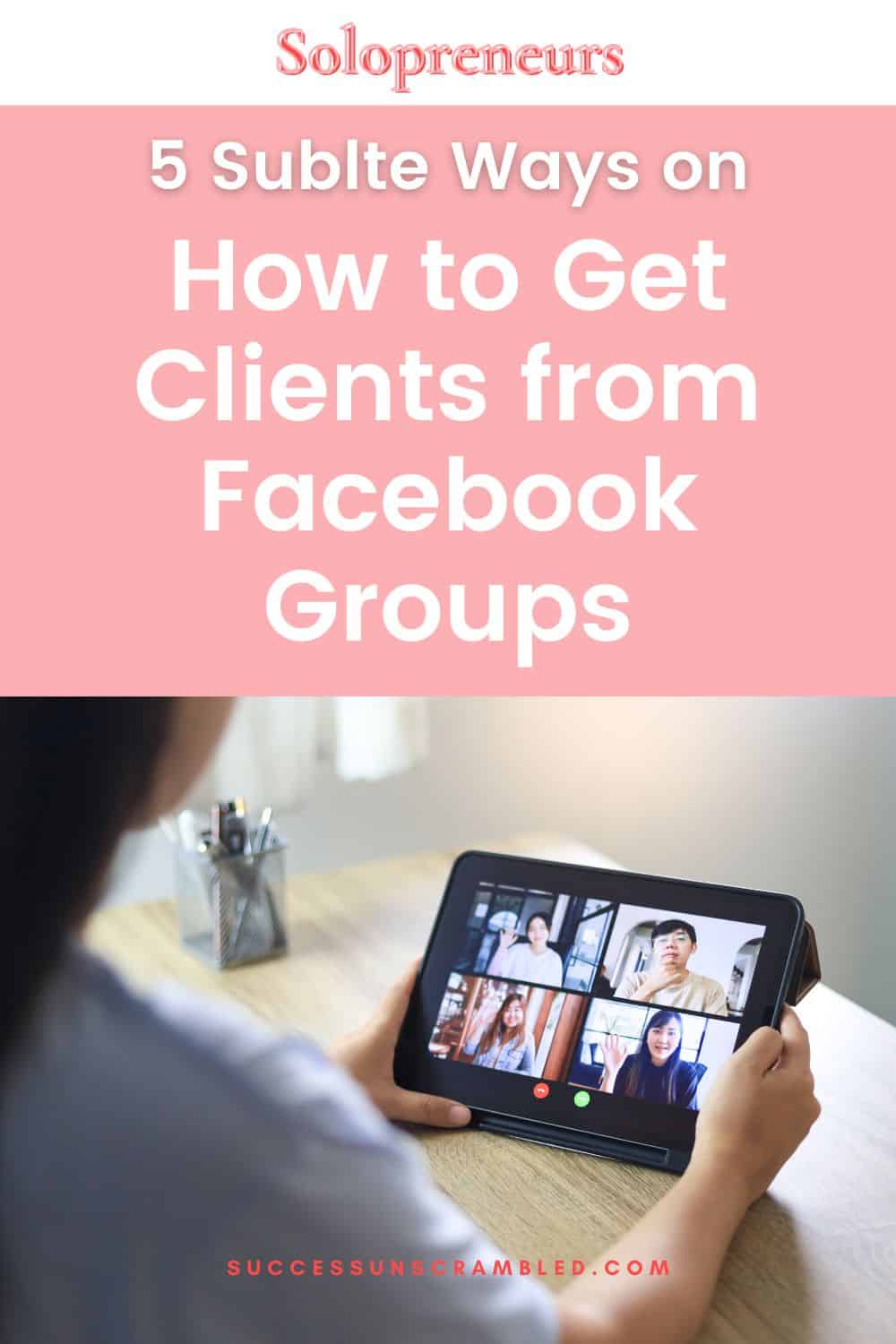
4. Commenting on Promo Threads
There are some groups that have threads/posts for specific days of the week.
Be sure to read the rules before joining those groups or even after you join so that you don’t get in trouble for sharing links or promoting on the wrong day.
Some of them allow you to tell everyone what you do without sharing a link to your business.
Others let you share your latest blog post or free offer.
I can think of one specific one that encourages you to look for beta testers for your product or service.
There are even some that would encourage potential clients to say what type of service they are looking for or what problems they are experiencing.
5. Guest Speakers
Did you know that there are groups where people are looking for guest speakers?
You are probably thinking why on earth would you be interested in groups for guest speakers?
The truth is that you are an expert in the service that you offer because you solve a problem.
There are coaches, course creators and group owners who are always looking for guest speakers to help their members solve problems.
For example, my 3 areas of specialisation are funnels, digital marketing and tech set-up.
Therefore, I can offer some insight into how people can overcome problems they are facing in these 3 areas.
You can do the same for your area of expertise.
How to Jump-Start Your Results in an Existing Group
After joining a group consider looking for existing content where you can join in the conversation.
You can go as far back as 3-6 months and start commenting on those older posts.
In large Facebook groups, this can be tricky if you don’t know how to add value.
When inside the group, go to the search bar for the group and search for the following:
- The keywords or phrases that your potential clients use to describe their problem
- The name of the software and tools they use to solve those problems
Here’s an example of a search in a group that I’ve joined.
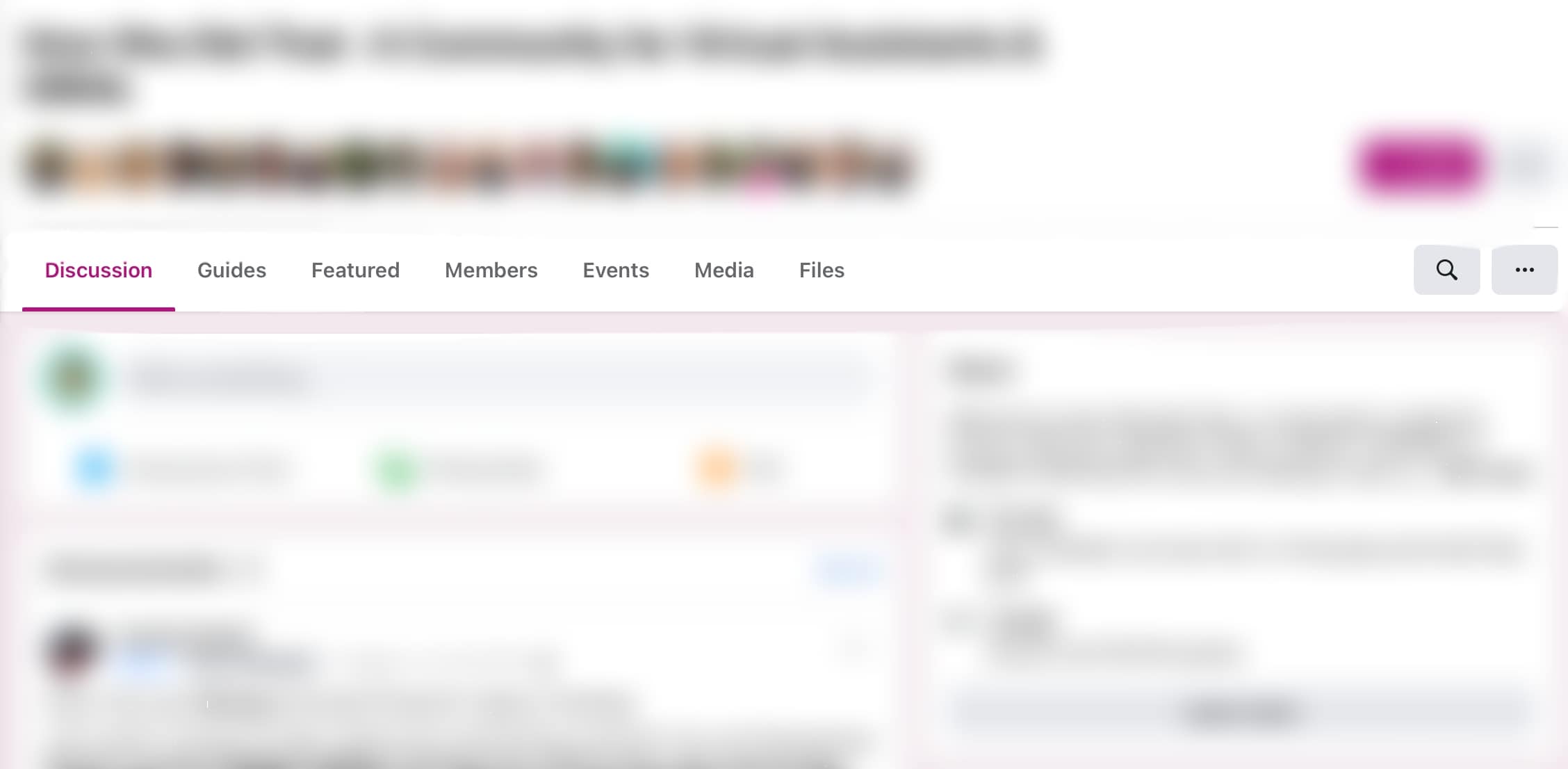
First step, head to the top of the page and click on the little magnifying glass so that the search bar will pop up.
Enter your keyword, name of software or problem phrase and hit enter.
You’ll see the results on your right as well as options on your left to customise the search results.
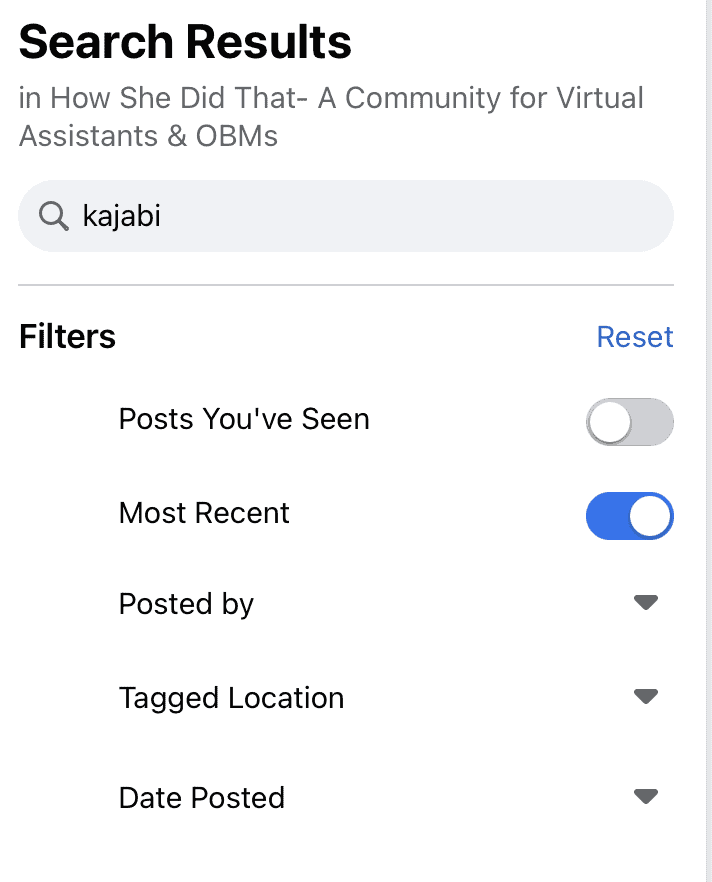
I would normally toggle on “most recent” so that I can see them in reverse chronological order.
Next step, scroll through the results until you find a post where you can add value and write a comment, always adding valuable resources too.
Summary
While finding clients from Facebook groups may not be the easiest task in the world it sure beats going out in the rain and cold in a market selling goods.
Or worse, attending a trade fair and handing out business cards.
In fact, you can meet more people online or even network faster online to a much bigger audience.
The trick is to do it consistently for 3-6 months so that you become the go-to person in your area of specialisation so that others will start tagging you on autopilot.
You’re probably thinking that you have no idea what your area of speciality is in terms of expertise.
Or you may be worried about what will happen if you change your expertise.
The reality is that you need to start somewhere and then when the time comes to change you can refer those potential clients to others in your network.
23 October 2023, 2:10 am - 20 minutes 54 secondsHow to Get Clients on LinkedIn Fast [Even as a Newbie]
Martha was desperate she started her business and she wanted to know how to get clients on LinkedIn.
The challenge is that Martha was unexpectedly made redundant at her 6-figure job due to her company outsourcing to low-cost locations.
Rather than adopting a wait-and-see attitude, Martha wanted to develop an alternative income source as soon as possible.
Her 15 years working in business operations leave her with no choice but to promote her business and close sales, even if this is 100% new to her.
Do any of these sound relatable to you?
- You’ve always used LinkedIn as an online resume
- Your current connections are not your ideal clients
- The thought of promoting your business to your connections makes you feel icky
- You have no idea how to use LinkedIn to find clients
If only there was a simple guide to give you step-by-step instructions.
In this resource, you’ll discover 5 secrets to getting your first client on LinkedIn in the next 30 days.
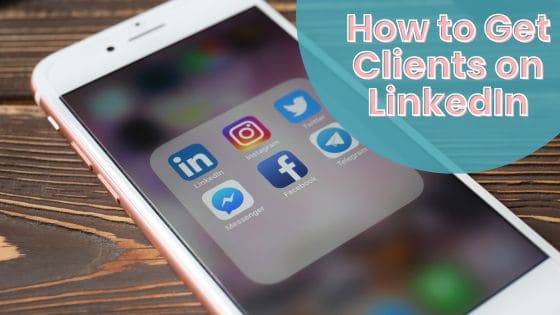
Why LinkedIn is the Best Platform to Find Buyers
Have you ever wondered why LinkedIn is one of the best places to find clients or for lead generation of any kind?
Well, let me help you with this aha moment.
When it comes to social media platforms, LinkedIn is the only one that your potential clients volunteer to divulge their buying power.
As a professional network, people are forced to complete details about their profession and qualifications.
The only other platforms that come close are X (formerly Twitter) and Instagram.
Titles like VP, Manager, Director, President, CEO, Founder and COO scream to others that I influence buying decisions at this company.
A person’s LinkedIn profile also reveals information about education, interests, past experience and stability.
The only difficulty you’ll encounter is actually sending a ‘cold outreach’ connection request or sending an InMail.
If you feel so inclined you can upgrade to the Sales Navigator subscription on this social media platform.
Your Target Audience
One of the first things that you’ll need to do before reaching out to prospective clients is to figure out or get clear on your target audience.
Do you know who that person is and where they hang out online?
What about their problems or the pain points you are trying to solve?
Ever wondered about where they are in their journey right now and what questions keep popping up in their heads each day, week and month?
What keeps them awake at night?
Having a really good understanding of your target audience is one of the keys to successfully finding and/or attracting your potential clients on LinkedIn.
In case you are wondering why, I’ll explain in greater detail in the next section.
Let’s look at the best practices for your LinkedIn profile. You do need a LinkedIn account for this to work.
Your LinkedIn Profile
Did you know that your LinkedIn profile acts as a sales page for your potential clients?
I know you’re skeptical about that statement but hear me out.
When you reach out to someone on LinkedIn, especially if they don’t know you the first thing they do is head over to your profile to ‘check you out’.
If your profile has a professional headshot, is optimised and speaks to your target audience then there’s a high chance that they’ll convert to a paying customer.
The top section of your profile serves as a headline, sub-headline and summary of what you do and who you help.
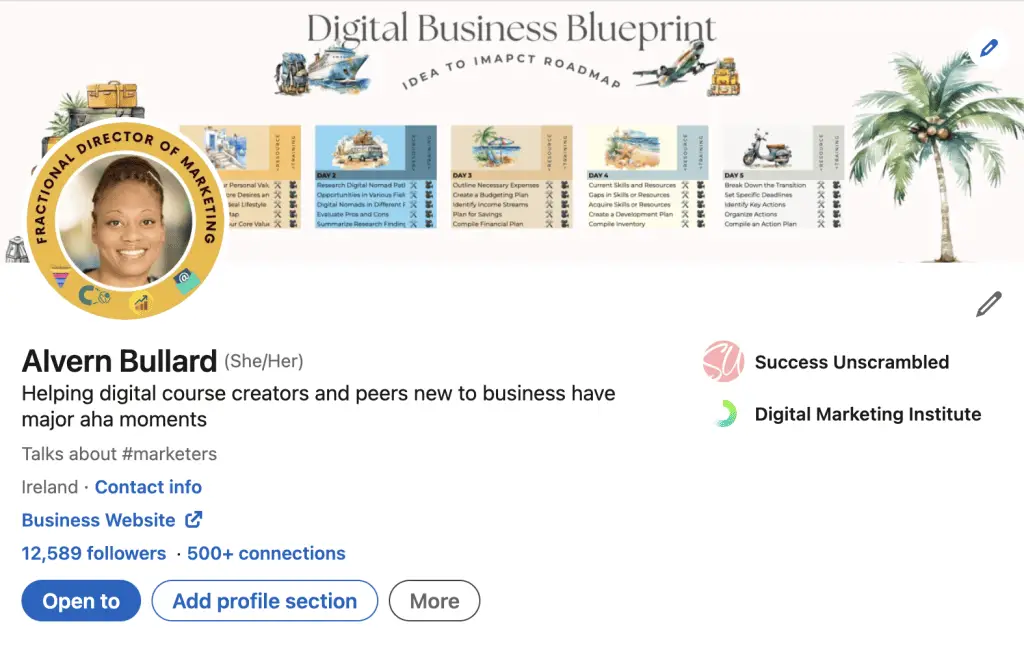
Below that you have a featured section which is a great place to add links to items such as lead magnets, testimonials and your lowest price offer.
The next section is your latest activities, posts, articles and stuff you commented on across LinkedIn.
Right below that is an about section, use this space to speak directly to your potential clients including the results you can give them.
This is followed by your experiences showing your potential clients why you’re qualified to help them.
On the topic of optimisation be sure to add relevant keywords on your own profile that your clients are searching for on LinkedIn.
Also, check out this resource I made a few years ago.
Do you see why your LinkedIn profile is like a sales page?
LinkedIn Company Page
Depending on where you are in your business growth or journey, you’ll be interested in setting up a LinkedIn page for your business.
A key benefit of doing this is that it gives you the ability to see more granular analytics on who is engaging with your content.
It helps you to grow a business brand too.
If you plan to run ad campaigns on LinkedIn at some point then you’ll only be able to do this from your LinkedIn page.
Paid campaigns are not available for personal profiles.
You also have the ability to boost employee posts as thought leaders from a business page campaign.
Having a LinkedIn page is not a requirement for you to effectively generate leads on LinkedIn.
Advanced Search Feature
This is super important if you want to find potential clients on LinkedIn.
Using LinkedIn’s advanced search functionality will really help you identify and pinpoint your potential clients in a crowd.
For example, if I want to find anyone who is a founder and also a business coach.
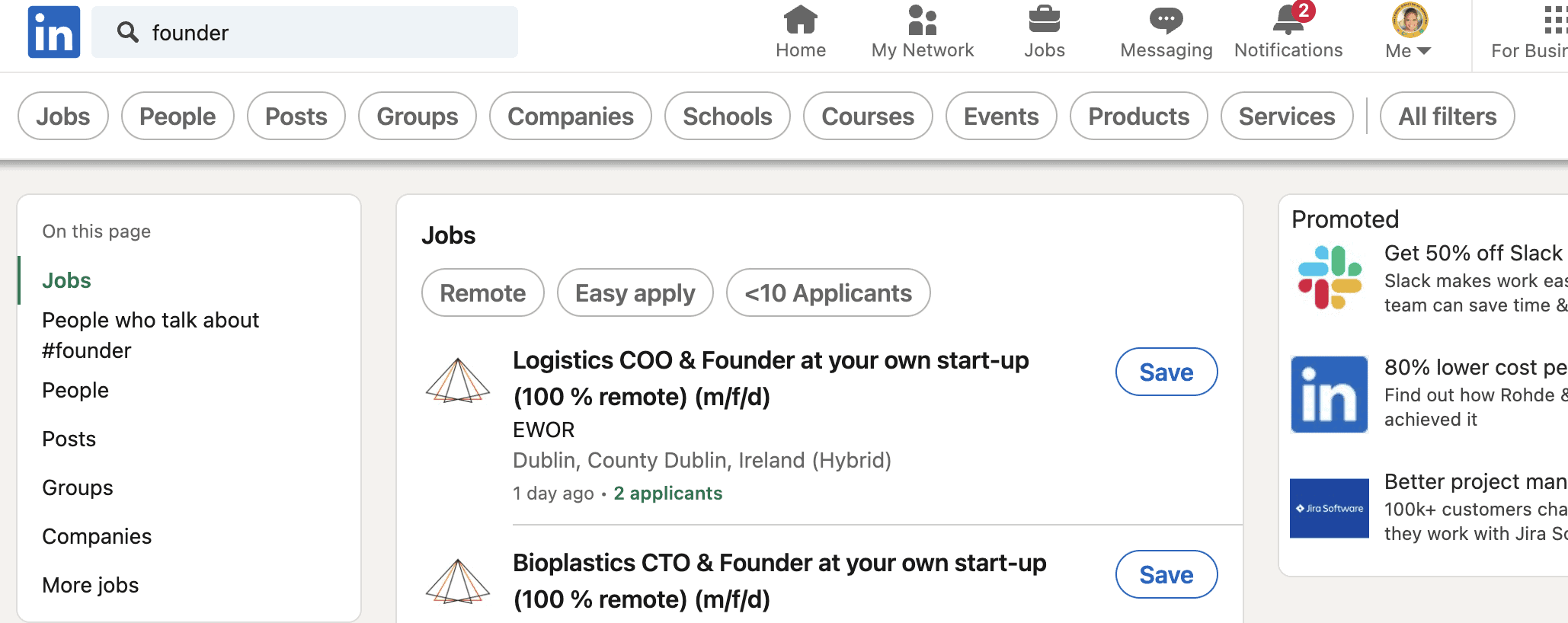
To get the best search results possible click on the filters on the far right.
You’ll notice that you have the ability to search by connections, followers of, location, current company, past company, industry, profile language and title.
Plus, if that wasn’t giving you the results you need you can also add boolean search to your query.
For example, “(founder + business coach) OR (owner + business coach)”. Including the parentheses will help strengthen the results of your search.
5 Ways to Get Clients on LinkedIn Fast
Now that you have a better understanding as to what’s available on the LinkedIn platform let’s see how you can use it to get clients.
Remember that you don’t have to use all these 5 ways to get clients.
I’m not asking you to suffer from overwhelm.
Just take note of each one to see which one resonates with you and the way you work.
It’s important that your profile is ready for traffic before attempting any of these options.
1. Commenting on Viral Content – Where Your Potential Client Hangs Out
One of the best ways to get in front of your potential clients is by commenting on the feeds where they can see you.
Before you head off to comment on everything that’s going viral, first curate your feed so that you can see content that’s relevant.
When you go to LinkedIn type in the hashtag(s) that your ideal client would follow.
For example, here is a search I did looking for the hashtag business coach.
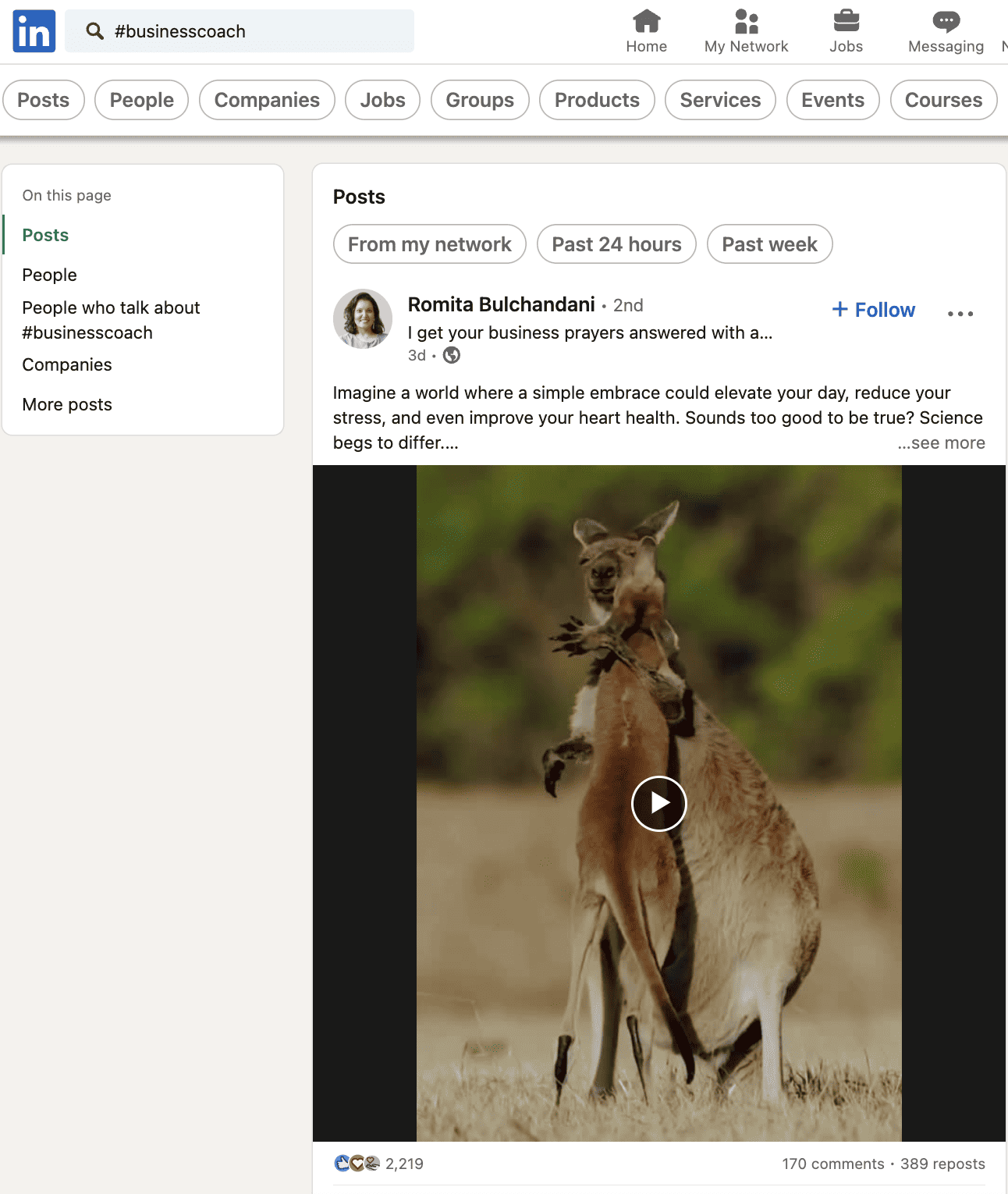
As you can see straight away the very first post is a viral post. I can simply read the post, watch the video and leave an intelligent relatable comment.
It’s important that you’re not obnoxious but you can be kind and entertaining.
When you make people laugh you become more memorable and they head over to your profile to ‘check you out’.
2. Creating Delicious or Valuable Content
Okay, I have to admit that this one takes more creativity and genius to stand out from the crowd.
Publishing original content means that you are in the spotlight. I also need to remind you that it’s difficult to get engagement on average LinkedIn posts.
However, one cool hack I have learned from publishing content on Facebook is to create a series on an interesting topic and make sure that it’s entertaining.
You can also just create something edgy as Shay Rowbottom does on her feed. See the screenshot below.
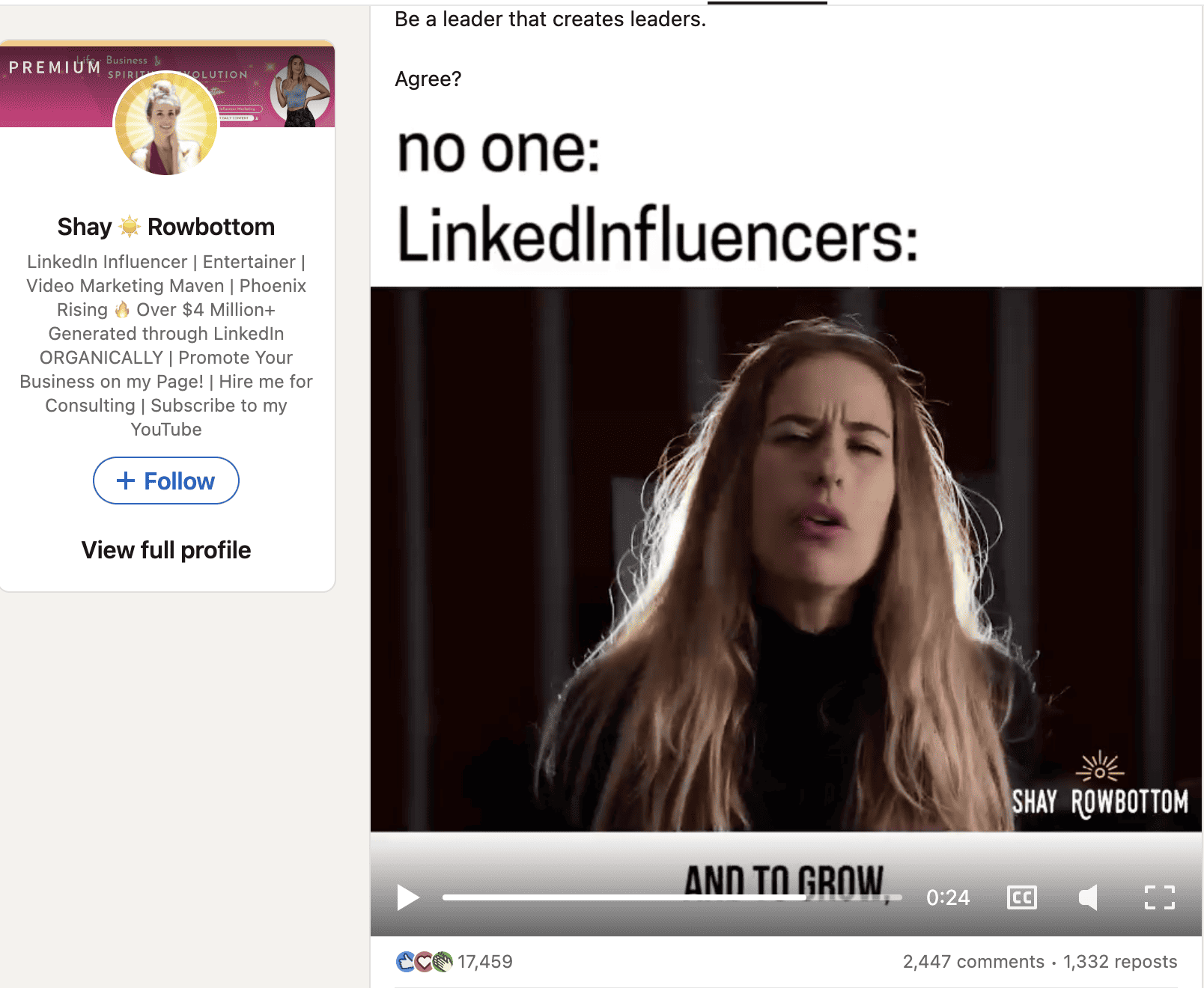
The video itself is less than 2 minutes long and it got over 2,000 comments, close to 18,000 likes and over 1,300 reposts.
With high-quality content like this, you’ll be sure to have new leads in your Inbox daily.
Be sure to create relevant content if you want to attract your dream clients.
3. Join LinkedIn Groups
A less effective method of getting clients on LinkedIn is joining groups on the platform.
While this strategy is not as effective as commenting on viral content or even creating cool content it still works and here’s why.
When you join relevant groups on LinkedIn you increase your exposure and network.
The way it expands your network is a bit strange but hear me out.
Before joining a group you have the ability to message people in your 1st and 2nd level without paying for LinkedIn Sales Navigator.
However, after joining a group you’ll instantly get the ability to directly message other people in your group because you are now connected to them.
4. Sending Messages (warmish outreach)
You might have heard this statement before but it is often said that the fastest path to cash is having conversations.
In other words, sending a message to a potential client to see if they may be interested in your offers is another way to pick up clients.
Of course, remember that nobody enjoys being sold to but they do enjoy buying the stuff that they need.
Here’s what you need to pull this off really effectively. You need a strategic outreach plan to help them.
After all, there’s a good chance you’ll generate warm leads from this activity alone.
So, you may visit their profile and notice that you can give them a few quick tips and tricks on how they can improve areas of their business.
For example, Hello (prospect), we’re part of the ___________(name of group) and I have a quick question for you.
I noticed that you’re a __________ helping ________. Would it help you if I were to share a free resource on how to get__________(the result that you offer)?
If they say yes then share it and ask them if there is anything else that they need help with in their life or business.
5. Sending InMail Messages (cold outreach)
Nobody likes sending cold outreach emails and nobody enjoys receiving them except in rare cases when it solves an urgent problem for them.
LinkedIn has a feature or powerful tool called Sales Navigator that gives you the ability to send direct messages to people outside your network.
With Sales Navigator you get 50 InMail credits each month and as far as I remember when someone doesn’t respond you get the credit back.
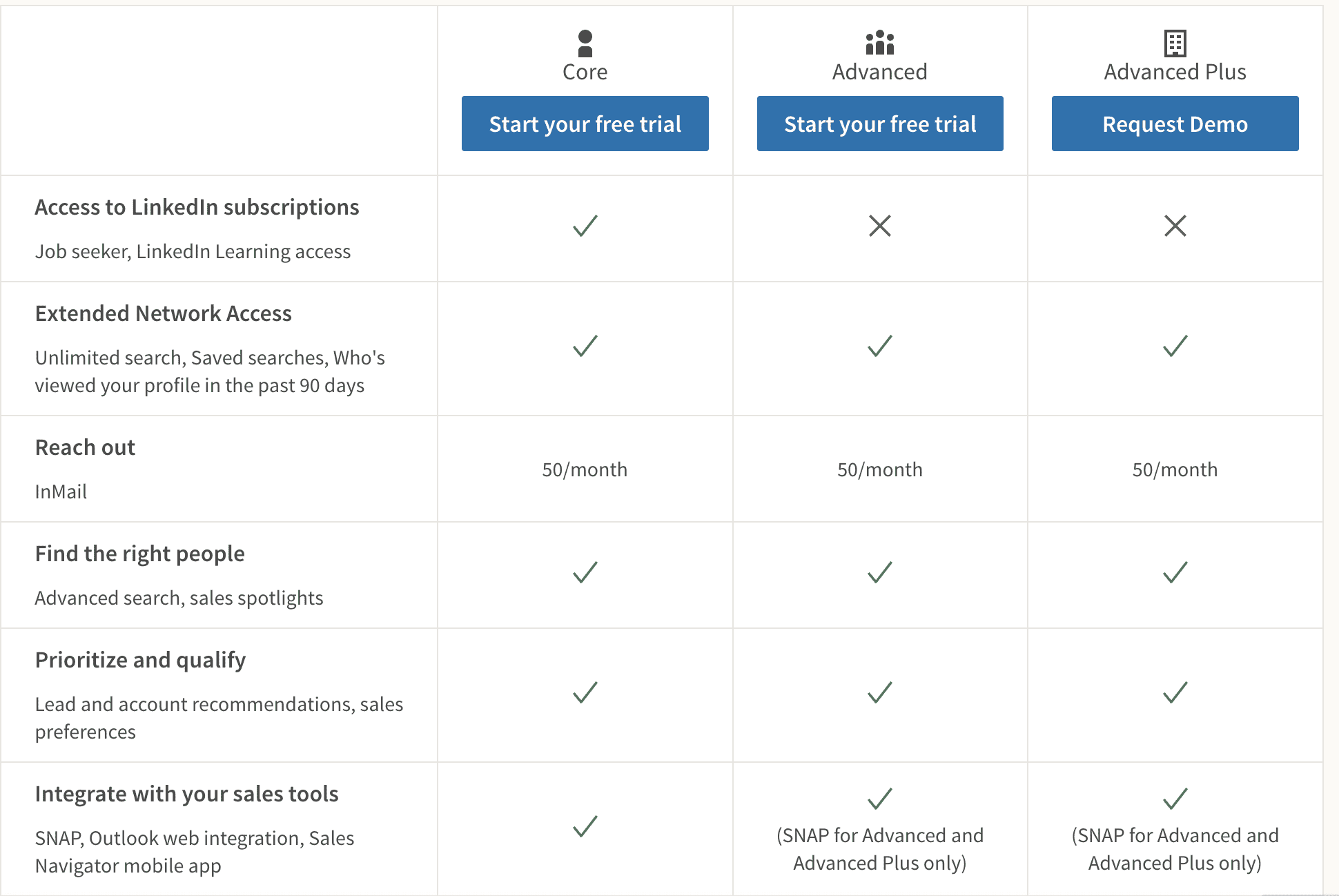
I know what you are thinking, 50 credits isn’t a lot and it isn’t but remember that you can still reach out to people in your network without paying.
Also, one BIG benefit of the Sales Navigator is the ability to search very granularly for your potential clients.
In terms of what you say when you reach out to them, it really depends on why you’re contacting them.
Always, remember that helping them works like a charm, you can congratulate them on a recent win or a new job.
For more clever ideas on how to break the ice, check out this tool here.
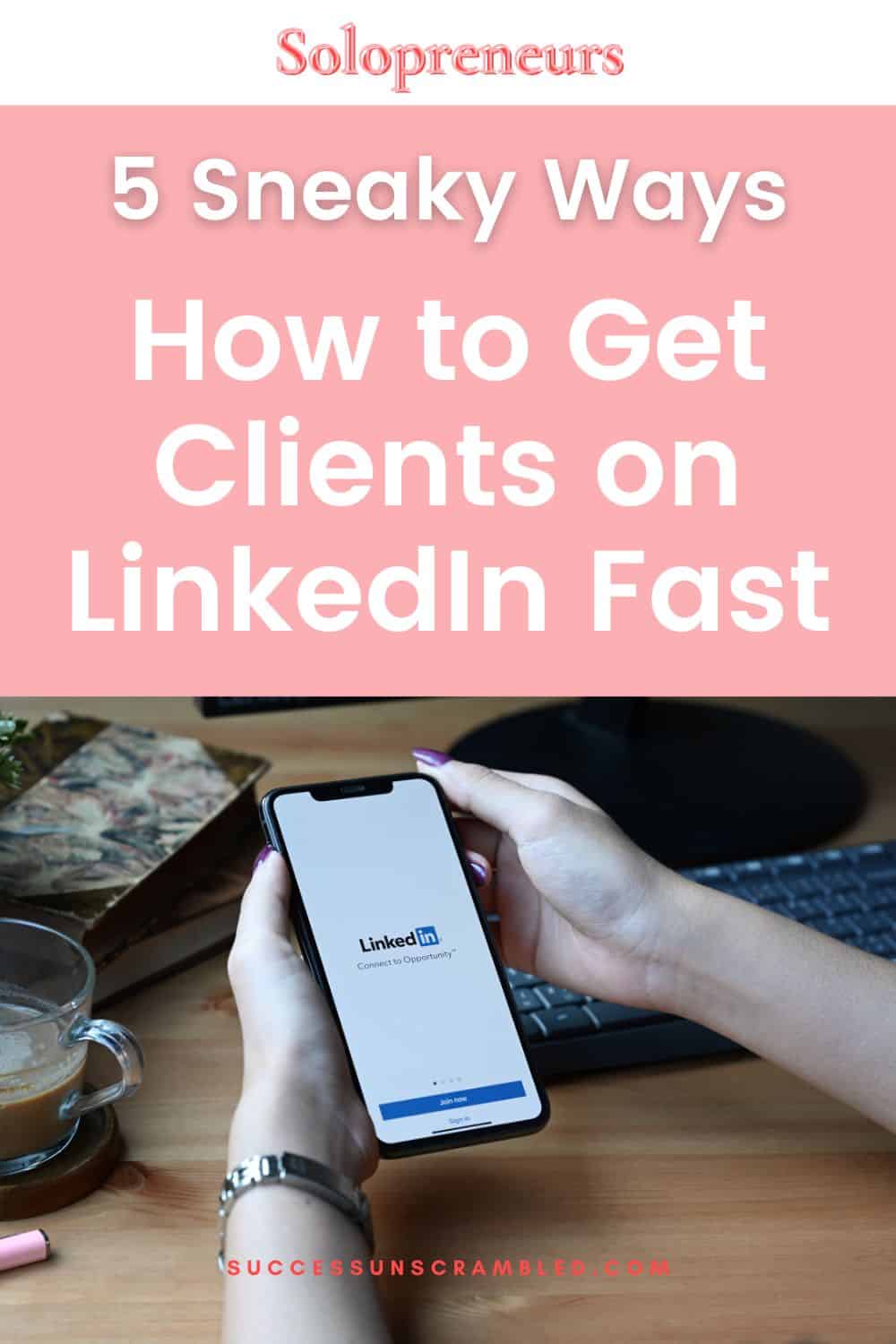
6. Growing Your Network (Bonus Client Getting Strategy)
You’ve probably heard it said many times in the past, your network represents your net worth.
Building relationships with small business owners can generate qualified leads.
So, remember that you can pop into LinkedIn every day and make new connections by sending 5-10 connection requests.
Of course, you’ll have to give the person a reason why it’s a good idea for them to connect with you.
I know it feels cheesy at first but remember that if your profile is optimised to the max and you give them a valid, magnetic reason then why will they say no?
Yes, I get some really lame ones all the time. “I noticed that we both shared an interest in marketing so I thought it would make sense for us to connect.”
Please promise me that you’ll find something more exciting.
If you’re still shy, you could choose the creepy alternative of viewing other people’s profiles.🤣
While there are several other ways to find clients online, LinkedIn is the best for 6 or 7-figure contracts.
How to Get Clients on LinkedIn FAQ
1. Why you are not getting clients on LinkedIn?
There could be many reasons why you are not getting clients on LinkedIn. These include:
a. Your profile is not optimised sufficiently to get clients to reach out to you
b. You’re not getting in front of your ideal clients by engaging with content that they see
c. You haven’t given enough time after optimising your profile and engaging with content
d. Your potential clients aren’t sure how you can help them
2. How do you gain popularity on LinkedIn?
There are basically 2-3 ways to become popular on LinkedIn. These include publishing viral content on LinkedIn and engaging with other people’s viral content on LinkedIn by leaving a comment that stands out from the rest.
Finally, grow your network with LinkedIn influencers.
3. How do people get 500 followers on LinkedIn?
This is achieved by connecting with potential clients on LinkedIn. Every day, for two months, send out 10-20 meaningful connection requests. They would have to be irresistible enough so that these people would say yes.
4. What are 4 ways to attract customers on LinkedIn?
Here are 4 ways to attract potential customers on LinkedIn.
a. Optimise your LinkedIn profile to include benefits and results statements.
b. Leave clever and juicy comments on viral content where your customers are hanging out
c. Create relevant, juicy, viral content that will attract your potential customers (think edutainment)
d. Grow your network and send introduction messages to those potential clients
5. What happens when you get to 10k followers on LinkedIn?
Well, as far as I am aware nothing really happens. I have over 10k followers and I don’t have any extra privileges compared to anyone else. It just shows that you have a certain level of authority but not really because my followers don’t see most of the content that I publish.
Summary
Most people are of the opinion that LinkedIn is this stuffy place where you create a boring social media profile.
Here’s the thing, if you want to reach new prospects and close 5, 6 and 7-figure deals for your business then LinkedIn is a great way to find new clients.
It’s up to you to find creative ways to reach these future clients.
I’ve given you a few ideas that mostly go against the grain and make you stand out.
Let me tell you a little secret, many decision-makers scroll through LinkedIn looking for content that will give them comic relief.
Of course, no one will admit to this but you’ve got to trust me on this one.
I’ve spent 18 working in Fortune 500 companies generating leads using LinkedIn and the stuff that works falls into the category of edutainment.
Now, over to you, what kind of content will you publish to generate leads on LinkedIn?
9 October 2023, 3:34 am - 1 hour 4 minutesHow to Get Clients Online – 41 Proven Ways [#31 is Rare]
Rebekah lost her job last week so, she decided she wanted her own online business but she had one problem. She didn’t know how to get clients online.
Her background and experience spanned 20 years working for Fortune 500 companies in her capacity as Human Resources Director.
So, the idea of doing any kind of sales and marketing for a business was foreign to her altogether.
However, she knew that for her business to make money she needed to figure out how to get clients fast.
Let me know if you find these relatable at all.
- You’ve always wanted to start your own business but wondered how to make it work
- The whole 9 to 5 job scene is no longer appealing
- The fear of failure at a business venture is keeping you stuck in that cubicle
- Getting that first client would really boost your confidence by 1,000%
If only you knew how to navigate the digital marketing world effectively to find paying clients.
In this post, you’ll learn practical ways to get clients online that would say yes to you even though you don’t have experience as an entrepreneur.

How to Build Trust and Authority
Before diving into the process of finding clients for your new business let’s talk about building trust.
Believe it or not, the number one reason why potential clients may not say yes to you is because they don’t trust you.
You’re probably thinking, well Alvern, I don’t trust me either so why should my potential clients?
The truth is the only difference between you and the person who has been in business for 3-10 years is that they are more confident than you.
Yes, confidence is the thing that separates those who book clients and those who don’t.
So, how do you get clients to trust you?
Did you know that potential clients will “check you out” before deciding to have an initial chat?
Since this is the case it is important for you to give them something to chew on by creating 2-3 social media profiles. This helps you to establish an online presence.
Here’s what you can do, choose a business name and then…
- Create an Instagram profile for your business
- Publish a Facebook business page
- Create a simple one-page website (use a Canva template)
Right now it may all seem quiet because you don’t have any content published yet but hang tight because we’ll look at that next.
What Content to Publish on Social Media?
When you’re just starting in business it’s really difficult to figure out everything on your own.
One of those things includes knowing what to post on social media also known as content marketing.
The number one tip I’m going to give you next is going to change your life forever (well almost) and here’s why.
Most solopreneurs complain that social media feels like a constant content hamster wheel where you have to post fresh content daily.
However, I can tell you that 3 times a week is fine.
The secret to coming up with 365 days of content ideas is this…
Write down the top 12 topics in your niche. If you get stuck remember that you can always use ChatGPT to help you complete the list.
Now that you have the list head over to Answer the Public, type each topic and take note of the top 30 questions for each one.

At the time of creating this resource, you could create a free account and get 3 free searches a day.
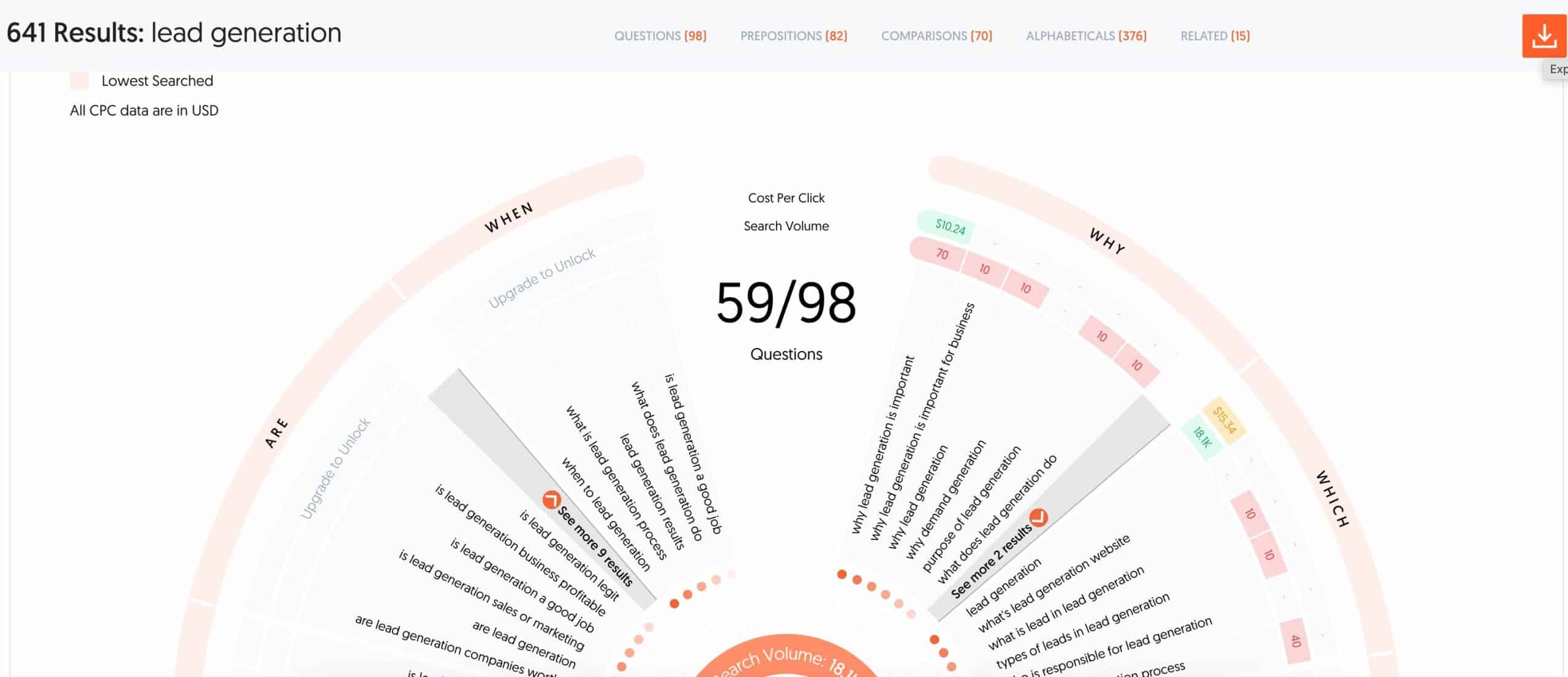
There’s also the option to get a lifetime account for only $79.
What to Do With Those Questions from Answer the Public?
Now that you have the questions be sure to grab the one with the highest searches.
You can choose to do all the questions focused on a specific topic in one month or place them in a spreadsheet and shuffle them.
For each question create content suitable for each social media type.
Here’s an example of what I mean. One of the questions on the topic of lead generation was, how to generate leads with Facebook Ads.
I can map out the content like this…
- A carousel on Instagram
- Also, a Reel outlining the same question
- Repurpose that Reel on TikTok as well as my personal profile
- A simple post on my Facebook business page
- Create a blog post and podcast episode
- Repurpose the carousel and caption as a post on LinkedIn
As you can see, one question can lead to several pieces of content by type.
Your Ideal Client
If you’re one of my existing blog readers or podcast listeners you should know by now the importance of focusing on your ideal client.
Are you unsure as to who your ideal customer or target audience is?
If yes, figure out who is the person you would like to serve, I struggled with this for a few years too.
It was only after working with a few clients that I got to know who my people are in real life.
Recently I discovered that you can reverse engineer the process of finding your ideal clients using artificial intelligence.
Once you have an idea about what you want to offer you can find your ideal client avatar as follows.
- Head over to ChatGPT and create an account if you don’t already have one.
- Tell ChatGPT your profession or area of specialisation and ask it to give you a list of services you can offer (I did this pretending to be Rebekah and I got a list of 17 services)
- Next, pick one of the services listed and ask ChatGPT to outline a program for that specific service (I chose HR Strategy + Planning and asked ChatGPT for a program outline)
- The next step is to ask ChatGPT who it thinks the ideal client is for the program (I did it again for Rebekah and got a list of company types by business stage)
- Finally, ask ChatGPT to create a specific client avatar for the program ( I did this for Rebekah and got back the screenshot below)
As you can see creating a client avatar is now easier to create thanks to artificial intelligence.
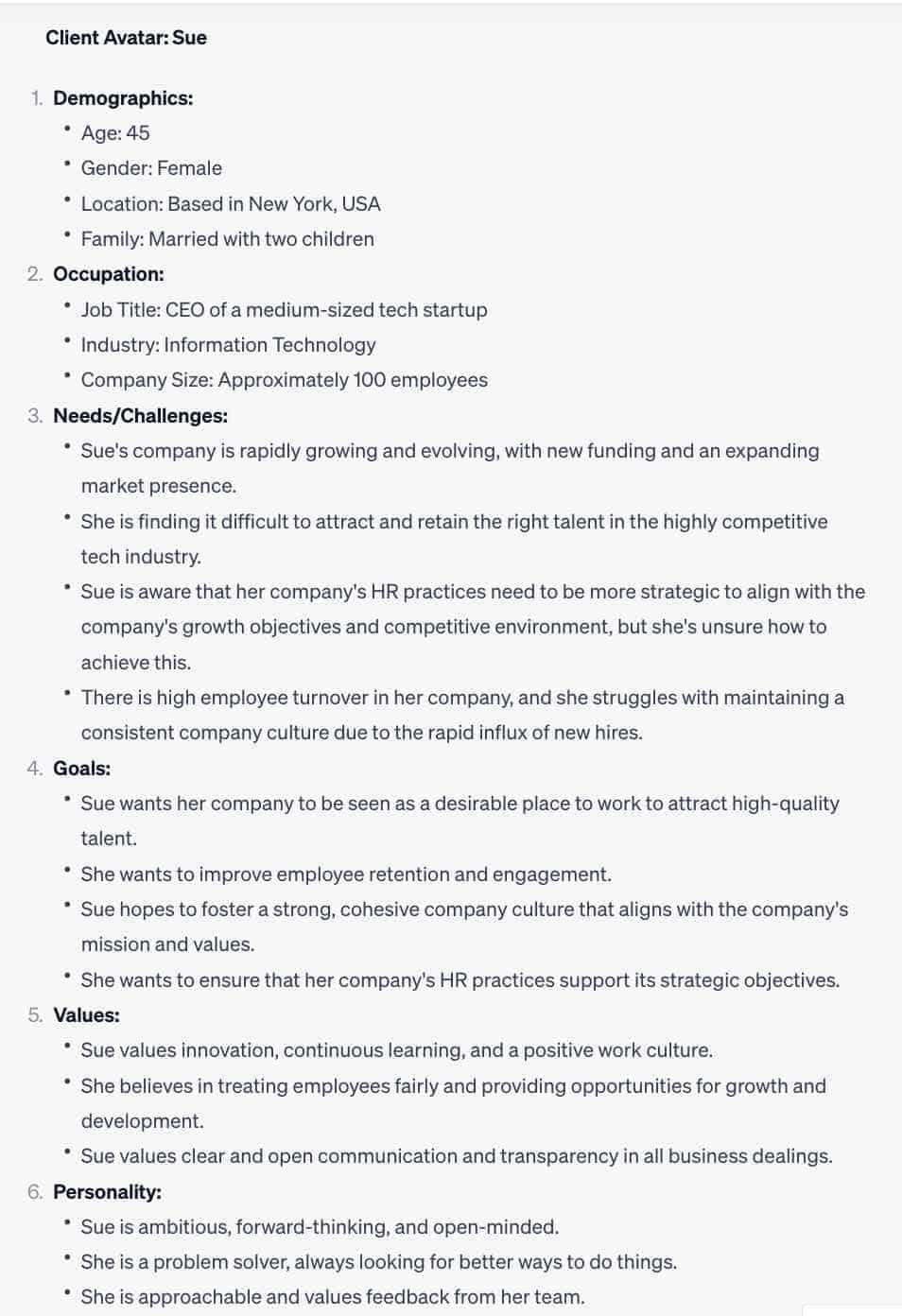
Your Client Sales Funnel
Just before I go into a lot of details about how to find clients it’s important that you have a system in place for client acquisition.
The reason for this is that every potential client is at different stages of their decision-making process so you’ll need to nurture them along the way.
Here’s an example of what the different stages of your client’s journey will look like.
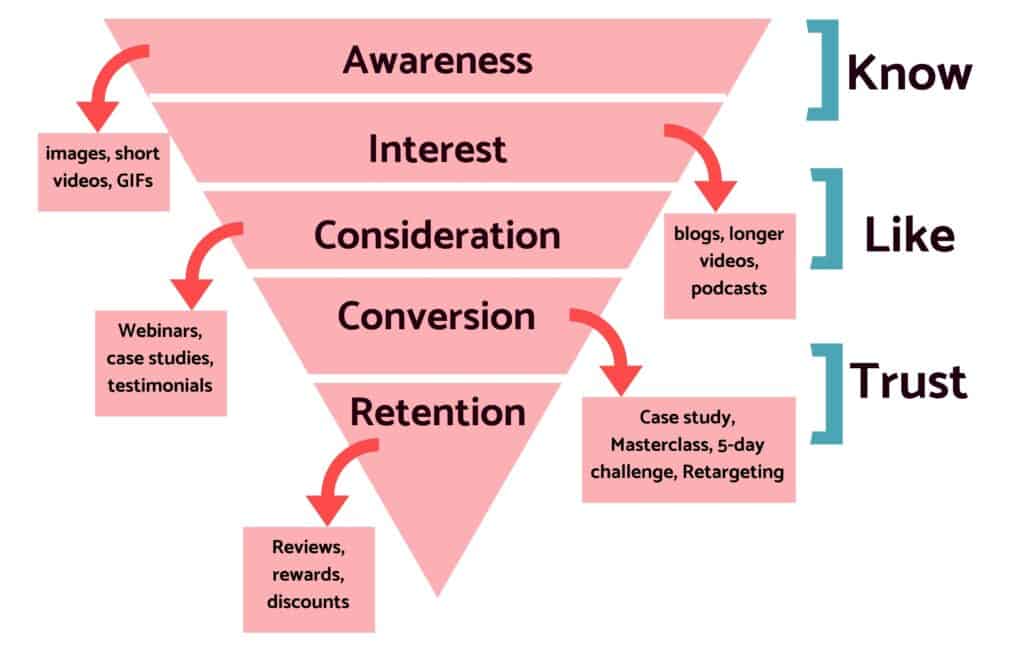
One other important thing to note is that it is a lot easier to convert leads into sales if your prospective clients are problem-aware.
If you need help understanding what I mean then take a look at this diagram below.
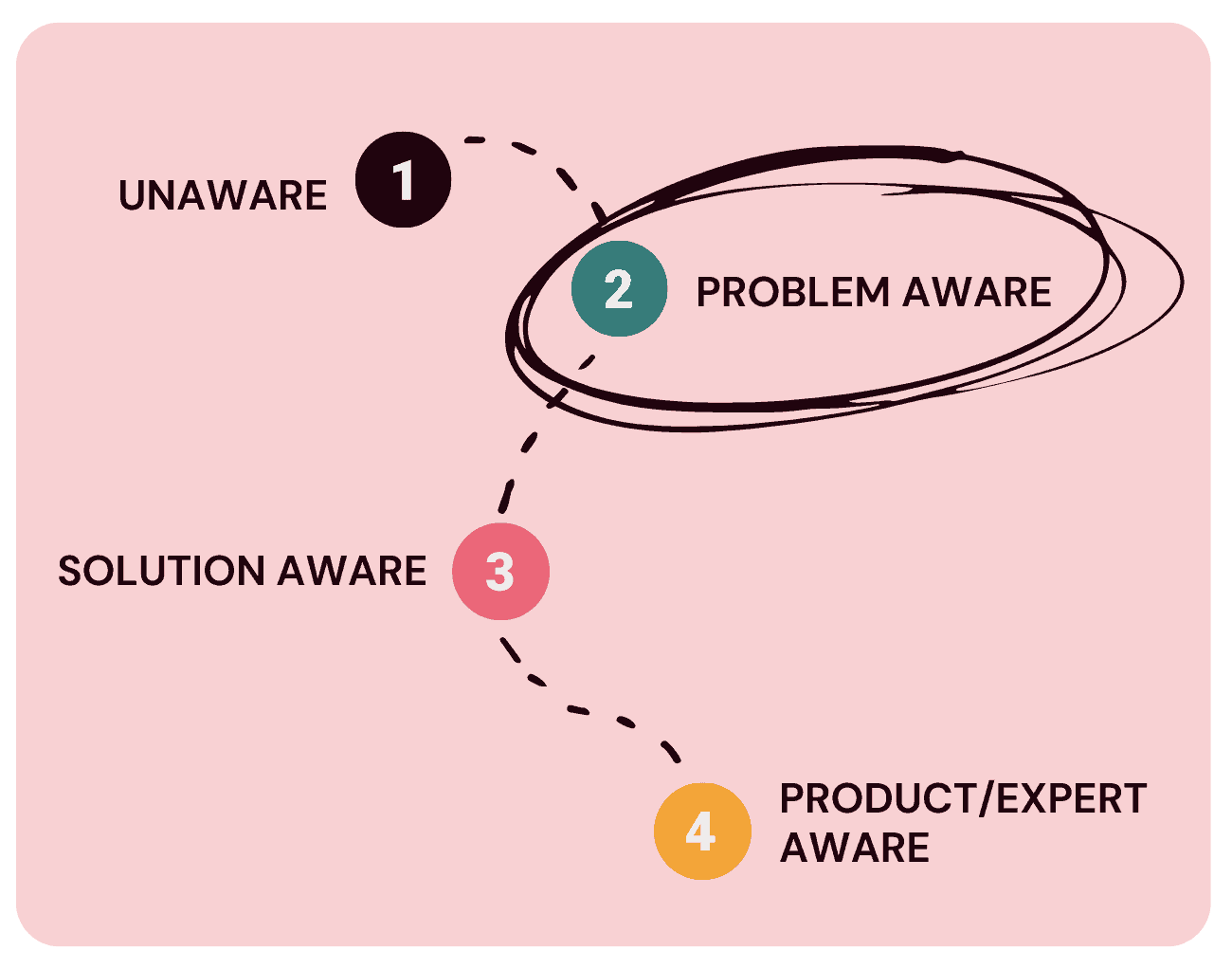
When someone is problem aware you don’t need to spend a lot of time educating them about their problem before you can introduce your solution.
Now that you know who your target market is and what content you need to provide at each stage of their journey let’s look at how to find them.
How to Find Clients Online
You probably already know this but there are so many ways to find clients online because it all depends on your niche and your potential clients.
The first step, ask yourself, where do your clients hang out?
What resources do they use to find solutions?
Knowing this will help you save a lot of time and money. Write a shortlist of the top 5 places where you believe your client is hanging out.
Let’s look at a list of ways to find clients online.
41 Ways to Get Clients Online
Whether you are doing freelance work or a virtual assistant or you just started a side hustle looking for client work or freelance clients. You are going to find these techniques valuable to your situation.
No matter what business model you have or maybe you have an established small business and you considering pivoting into offering something for service providers there’ll be something here for you too.
If you enjoy cold pitching by writing cold emails or messages, I’ll talk about a powerful tool that you can use.
1. Instagram Content
Suppose your business is focused on offering services related to Instagram like social media management, social media strategy, Reels creation and editing, etc. on a number of social media platforms. The best platform for you to publish content regularly is Instagram.
Even if you don’t offer any offers, products and services related to Instagram you can still get clients on this platform by focusing on Reels and carousel posts.
Your content should offer scroll-stopping value so that you can attract engagement and get visits to your profile as well as link clicks.
If all else fails you can also use Gary Vee’s $1.80 rule and use the One Dollar Eighty service to implement it.
2. TikTok Videos
Oh my, a few years ago when TitTok was new on the scene everyone thought that it was a platform only for young people.
Now here we are and it is considered mainstream because of the fact that you don’t have to dance to get your point across.
So, how do you win on TikTok? Find 3-5 accounts that resonate with your audience and take note of their handles.
Take a look at their last 10-20 videos and what you’re looking for are those videos that receive a higher amount of engagement than usual. Look at the type of caption as well as the number of hashtags used and make your own version.
3. Facebook Profile
Until recently I always believed that I couldn’t use my Facebook personal profile to build awareness of my business.
One day, I published a Reel that got over 2,000 views which really surprised me. Since then I switched to the professional or creator mode and I’ve been getting great engagement on my content.
Of course, there are a ton of other things you’ll need to do which you’ll be able to find in this training here.
By the way, this is very different from a Facebook page or business page.
4. Eventbrite
I’ll be honest, I never saw Eventbrite as a place to find clients until I saw a 60-minute training on how effective this can be.
It does require you to host a recurring training at a basic level over a period of 6 weeks. A good example of this would be “Introduction to Social Media Management”.
As you do this over time you’ll build up a following on Eventbrite. After hosting the training you can have a call to action for viewers to book some time in your calendar to discuss their requirements further.
5. Facebook Ads
Did you just cringe at the thought of running Facebook Ads? Lol!! Yes, there are a lot of people who had terrible experiences with running Facebook Ads but I can assure you that this stuff works.
There are two different ad campaigns that would get you results fast.
The secret to getting results using Facebook advertising is to start with a lead magnet. Using Facebook Lead Ads and a budget of $300 to $500 a month you’ll be able to grow an email list of 300 leads every month.
I’ve created an entire resource on Facebook lead ads here.
An alternative method to get clients fast is by using Messenger Ads but you really need to know your target clients very well.
6. Webinars
Depending on where you are in business webinars also called masterclasses are a great way to get new clients.
This type of resource is only good if your offer is over $500.
It does involve setting up a high-converting funnel around the webinar to include follow-up emails but it certainly does work.
You’ll need to have an offer that’s already been validated in order for webinars to truly bring revenue into your business.
7. Workshops
Think of workshops as a way that help your clients get a quick win around a specific corner of your business.
For example, if you teach people how to become a 5-figure food blogger then your workshop will focus only on a small part of it like food photography for beginners.
Workshops are a great way to give potential clients a taste of what it’s like to work with you and it could be part of your larger value ladder.
8. Pinterest Organic Marketing
So many people continue to underestimate the power of Pinterest. Yes, it’s not like how it used to be during the years of 2010 to 2019 but I still get potential clients visiting my blog from Pinterest every single day.
You need to keep in mind that it takes 3-4 months for a pin to really get into its groove and then from there onwards it will keep delivering traffic year after year.
Using Tailwind to help you schedule your pins can save you a lot of stress and anxiety.
Also, remember that you can get potential clients from Tailwind communities too.
9. Pinterest Ads (Promoted Pins)
If your clients hang out on Pinterest and you are running an event like a 5-day challenge using promoted pins can be a great way to get more sign-ups in a short timeframe.
What’s great about promoted pins is that you have the ability to target potential clients by keyword.
In terms of campaign objectives, you can target by awareness, consideration or conversion (see screenshot).

Equally, there are also exciting options available when it comes to targeting. Currently, the available options include.
- Audience list
- Interest and keywords
- Demographics
- Placement and tracking
It’s important that you set up your Pinterest pixel in order to target an existing audience or even a lookalike audience of people who engage with your website or blog.
10. Blogging
If you want to build authority over a long period, let’s say 5-10 years then starting a blog is such a great way to create impact that moves the needle.
Depending on your marketing strategy, you can have a blog with about 20 blog posts that are very high quality answering the top 20 questions in your niche.
There are some business models where a blog is one of their main sources of income which means they’ll need to blog 3-5 times a week.
Whichever option you decide is best for your business remember that getting clients from blogging only happens when you have a funnel implemented to grow your email list.
11. Podcasting
Oh my, starting a podcast can be quite scary because unlike a blog you’ll have to show up regularly and people will hear your voice.
The great thing about having a podcast is that you get to decide what kind of style you would like to implement. These styles include:
- Solo
- Interview
- Co-host
- Story-telling
- Bite-sized
- Panellist
In other words, you can get really creative when it comes to creating episodes. You can also decide to do it in seasons and you can also dictate the frequency.
When I first started my podcast in 2017 I was terrified that I would run out of content and I was doing it once a week.
Here I am 6 years later and I’m doing it once every 2 weeks and I haven’t run out of things to say yet. Lol!!
12. Guest podcasting
On the flip side of this coin is the idea of becoming a guest on other people’s podcasts.
The one thing disliked about having guests on my show was the post-production. It took so much time.
However, being a guest is easy, you just show up, answer questions and get exposure to other people’s audience.
You can do this 2-3 times a week for 50 weeks of the year. Of course, you’ll need to have an amazing story, hack or success to share.
It’s important to have an easy way for listeners to reach out to you or join your email list.
13. Guest blogging
Being a guest on someone else’s blog isn’t as easy as being interviewed on a podcast.
Guest blogging will require you to create a unique piece of content that would resonate with another person’s audience.
Many blogs that accept guest posts will also have a list of requirements for you to follow so that you can abide by their rules.
Depending on the blog, there’s a chance that you will not be able to share links to an offer. Sometimes all you’ll get is a link to the home page of your website.

14. YouTube Videos
One of the strategies that continue to grow your list on autopilot year after year is having your own YouTube channel.
Yes, I know that you are cringing at the thought of creating videos every single week.
There’s also the fact that you’ll need to edit those videos in such a way that will grow your channel.
At the end of the day, video marketing is not for everyone but if you can do it then it will be worth the effort, especially after getting your first 1,000 subscribers.
15. Display Ads
A huge shortcut to getting your content seen on YouTube is display ads.
This type of ad is created inside the Google Ads platform and it allows you to display your video in front of other people’s organic videos on YouTube.
When you are setting up the campaign you’ll have the option of targeting specific channels where your ad will be displayed.
It’s important that your video grabs the attention of your audience within 3 seconds for this to work.
16. 5-Day Challenge
A few years ago, 5-day challenges were all the rage. Nearly everyone and their grandmother were having a 5-day challenge.
Times have changed to a certain extent and having a 5-day challenge isn’t as popular unless it really focuses on delivering a promise where people feel truly stuck.
The bottom line is that 5-day challenges do require a specific delivery method which Alina Vincent teaches so brilliantly with her online course.
Yes, you can do it without her help but why put yourself through the unnecessary hassle?
17. A Summit
Have you ever attended a summit? I’ve attended many of them and I’ve also been a speaker at one of them. It’s a great method for generating leads.
This is going to sound weird but at the time I wasn’t even interested in obtaining the email addresses of the attendees (I have them saved somewhere). Lol!!
I guess at the time I didn’t have an offer that I thought was relevant.
In short, participating in a summit is a great way to grow your email list and reach new potential customers.
18. Other People’s List
At the time of creating this resource, ConvertKit recently launched what they called Creator Network where you can collaborate with other people who have email lists.
The catch is that you’ll need to be on the Creator Pro plan which gives you access to the newsletter referral system.
As far as I can remember there are also other criteria to be able to use this referral system but if you’re interested it can set you back $79/month to use it.
19. Press Releases
Are press releases still a thing? Well, if you said yes then you are right. Head over to Google, type in any topic or person’s name and take a look at the news tab.
You’ll see that even today with the trend of 100% digital business, artificial intelligence and space travel you can still do press releases with success.
Why, because people are nosy. Lol!! They always want to know what’s happening in the lives of the people they look up to or the solutions that they use.
Simply head over to this list to look at the top 10 press release services available today.
20. LinkedIn Articles
Have ever done a search on Google only to find a LinkedIn article in the top 10 results?
Well, here’s why that is the case.
As a platform, LinkedIn has a domain authority of 99 out of 100 which is really powerful so when you publish an article on their platform you get eyeballs from your network.
However, your article will rank on page one of the Google search results page especially if the competing content isn’t as strong as your article.
It’s important to remember that you’ll need to have a LinkedIn profile in order to write articles.
21. LinkedIn Posts/Videos
Another cool way to attract high-paying clients to your services is by publishing content like videos or regular image posts to your feed.
This does require something different in the actual content itself. It does require a bit of market research.
Look at a few profiles that attract your potential clients to their content and make a note of what they are posting in terms of content type, hashtags and length of captions.
As a general rule content will fall into four different categories.
- Emotional
- Entertainment
- Educational
- Engagement
So, have a look at what’s working for your audience.
Remember to check out my specific resource to find clients on LinkedIn fast.
22. X posts (formerly Twitter)
No one saw this one coming but now that Twitter has become X it is difficult to say what will happen over the next few years.
What we do know is that everything seems to be normal on that platform.
The key differentiating factor of Twitter (I just can’t say X) is that it’s great for live events or getting live updates on anything.
If your strategy is to publish facts or general information the type of post that does great is statistics or infographics.
Lists posts are valuable as well.
23. X Threads (formerly Twitter threads)
Potentially one of the most unique types of social media posts is a thread post.
It takes some thinking creatively to decide what to post and how to lay it out in a threaded format.
Some people are gifted in this area but for the rest of us, we can depend on a tool like this one to help us. It even comes with a free version.
What I like about it is that it helps you by providing you with viral tweet examples as well as prompts to write threads.
Remember that the most important are of your Twitter account is your profile to use that real estate wisely to pick up clients.
24. Joint Ventures
One of the things I enjoy about joining coaching programs is the ability to develop relationships with peers in your industry.
Ever since I started my online business I’ve met so many like-minded entrepreneurs online from around the world and all walks of life.
You build a relationship with these people which leads to trust and then that desire to want each other to succeed in life.
So, this is where developing joint ventures is so lucrative. Also, have a look at JV Zoo.
Someone is doing a summit and they are looking for a specialist in TikTok marketing. If this is your area then you can put your name in the hat.
25. Sponsorships
Recently I was given the opportunity to sponsor a magazine which sounded like a great idea at first.
All they wanted was $300 and my business will be featured in 3 issues and they have a large audience.
There are a few things to consider when considering sponsorships.
- Who is the audience?
- What’s the size of the audience?
- What offer will appeal to them?
- What return on investment can you expect?
- Are your goals realistic?
In my opinion, sponsorships are great for growing brand awareness or keeping your brand top of mind for your target audience.
26. Online Directories
Depending on the type of business you have and where you’re located using online directories can be a great way to find clients.
I literally had to stop for a second to go and see if the Yellow Pages was still a thing and I couldn’t believe my eyes.
While it has been a rocky road for the Yellow Pages we’re now seeing a plethora of similar directories like Bark, Thumbtack and Yelp.
The most important thing to remember is that there are people looking for services on these platforms.
27. Facebook Groups
If there is one place I like to find potential clients it is inside Facebook groups. I found at least 3 clients using this technique.
I was surprised to learn that you can join a maximum of 6,000 Facebook groups!!
I’m not sure why on earth anyone would want to join 1,000 groups let alone 6,000.
When you think of all of the successful digital businesses that you follow they all have one thing in common, they have a Facebook group.
If you are interested in becoming a digital nomad you can join my group here.
In large business groups, both clients and service providers hang out together.
Most importantly you can do a search in Facebook groups to find out what your potential clients need and develop services around their pain points.
I have created a separate resource about the goldmine that exists inside these communities.
28. Speaker Opportunities
A great way to get in front of an existing audience is by offering to speak on a topic of your choice.
You can also become a paid international speaker if this is something you would like to do for a living.
If you’ve ever watched someone do a presentation on TED Talk then you know how valuable it is to be a speaker on stage.
It brings you instant credibility and the opportunity to showcase to the world your brilliance.
Of course, you can acquire clients using this method as well.
29. Quora
While Quora is not as popular as Google, Facebook, TikTok or Instagram it is a great place to answer popular questions and grow your authority.
You can also take a look at what questions are being asked and piggyback on the popular ones to increase your clout.
Finding clients on Quora is a long game because, just like blogging, you’ll get a better return on investment if you stick to it.
In this example, you’ll see the user gained 3,000 followers over a period of 2-3 years on Quora.
So, if you want over 1.3 million eyeballs on your business give Quora a try.

30. Course Marketplaces
If you ever purchased a course on Udemy or Coursera, you’ll know that finding courses on business topics is easy.
However, what you may not have noticed is the profound ability to get instant authority and recognition from them.
In fact, many big names in the industry have used Udemy as a platform to build authority.
If you were introduced on a radio program or podcast as a coach with 5,000 students and 1,500 five-star reviews people would sit up and listen.
They don’t care if those 5,000 students only paid $9.99 for the course they just know that you are a leader.
Of course, it means that you get clients as well from Udemy and your interviews.
31. Reddit
One of those platforms that’s not your usual place to find clients is Reddit. While I don’t have any direct experience finding clients on Reddit I know it’s great to gain exposure.
I was browsing Reddit to find golden nuggets recently and I found this gem here.
What I liked about it is that it shows us an example of how to link an external resource like a YouTube video to grow your audience.
However, what I did find is a subreddit call for hire. It is the place where people go to post the jobs that they have available.
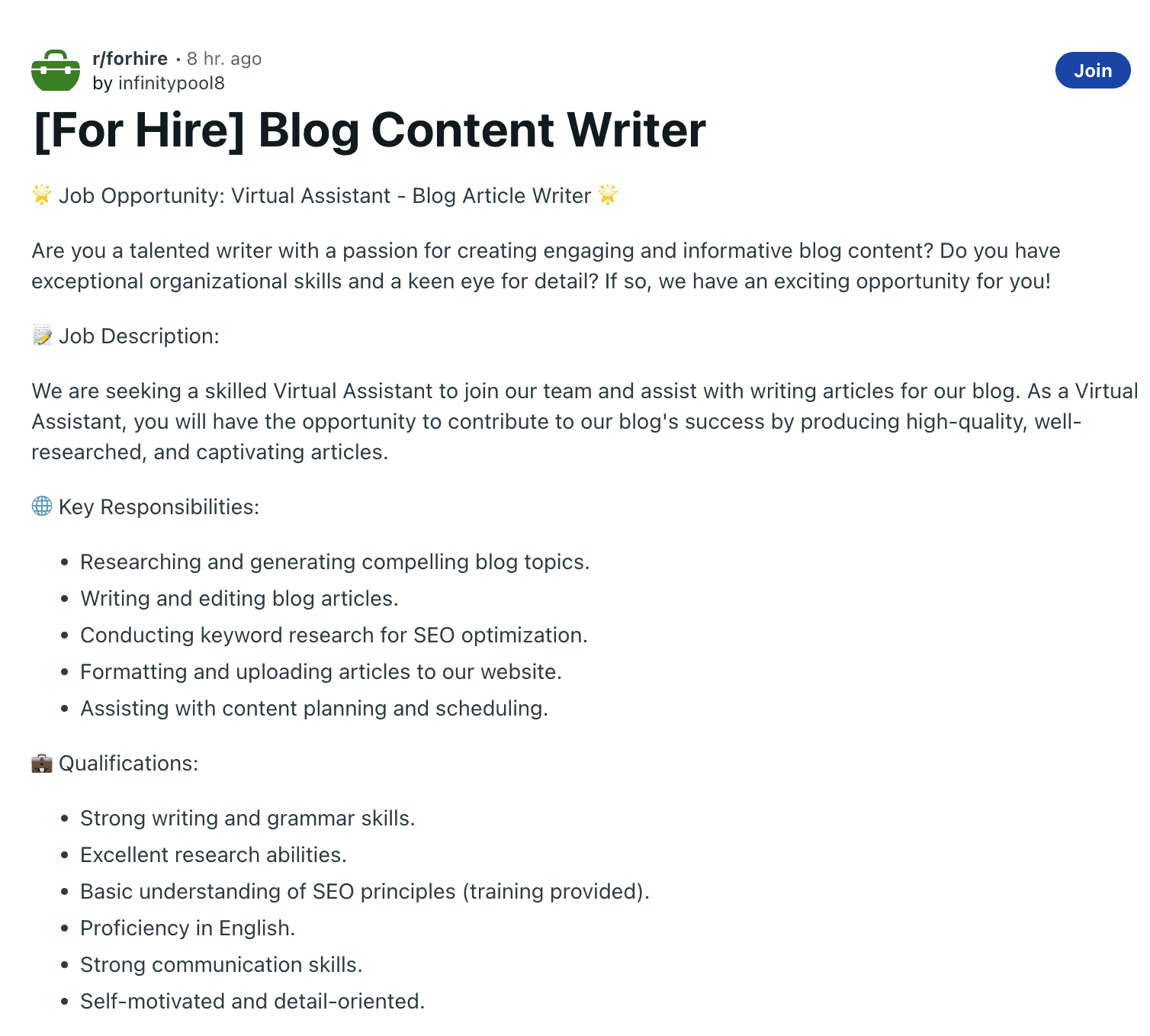
I didn’t even know that it existed until recently.
By the way, it’s also the place where you can post your availability for doing work.
32. Medium
A very cool way to attract your ideal clients is to write a results-driven post on a platform like Medium.
Like LinkedIn, Medium ranks high in the search engines so the unique, scroll-stopping articles you publish there will grab attention.
The key is to focus on a pain point that your clients struggle with like meal planning, weight loss, meal prep, storage ideas, Pinterest marketing, etc.
At the end of your article, you can have a bio that leads to a lead magnet, your services page or your calendar.
33. Upwork
Many freelancers have a love-hate relationship with Upwork because of the amount of scammers out there.
Also, the rates that clients want to pay can be very low ($5 an hour).
If you are just starting out and you want to build a portfolio of client work then Upwork is a great place to start.
The key to landing great clients is to build out an amazing portfolio and include a video to stand out from the crowd.
I’ve made $4,000 on Upwork so I’m talking from experience not theory.
34. Instagram Live Series
Do you love a challenge? When I was first starting online I challenged myself to go live every day for 30-60 days on my Facebook page.
While it did not specifically land me a client it showed me how challenging it can be to do a live every day and it increased my visibility online.
Instagram is a great place to go live and it’s even better if you can do it with a friend or 3.
The most important thing you need to do is choose a series of topics that address your potential client’s pain points.
One main drawback is that you can only go live using a smartphone on Instagram.
35. Local Chamber of Commerce
While you probably think that joining the local Chamber of Commerce is so 1980s what you need to realise is that people prefer to hire locals.
Every Chamber of Commerce have a listing of all their paid members online so it’s important not to miss out on this opportunity to be there.
Depending on where you live, whether it be a town or a small city, many small businesses like to support a company that is local to them.
For $300/year you can just get listed and let your potential clients know that you’re open for business.
36. Google My Business
Still, on the topic of local business, Google has a service called Google My Business that helps you get ranked on the first page in your local town.
You’ll need to have a local address because Google will send out a verification code to that address.
So, whenever someone searches for a photographer, digital marketer or plumber in their local town, your business will be shown in the listings.
It’s really simple to complete, you’ll need to create a Gmail account for your business and away you go.
37. Masterminds
Another great way to find potential clients is by hosting a free mastermind covering something that your clients struggle with.
For example, there are women over 50 who would like to pick up running, if you’re an expert in this area you can host a mastermind for beginners.
A great way to fill the seats for this masterclass is by running Facebook Ads for the event.
You can also have a chat with the owners of Facebook groups where your audience hangs out and do a collaboration with them.
38. Stand Out Online Membership
A very established way to get in front of other people’s audience is to pay to do so.
Yes, sometimes it’s difficult to find some of these places but Christina Rowe has a Facebook group with over 700,000 members.
One way she helps others to get in front of her audience is through the Stand Out Online Membership program.
It is priced at just $197 a month and you get the opportunity to go live every week, get featured in a blog post, be added to their business directory and be featured in podcast episodes.
The only thing left for you to do is come up with your irresistible offers.
39. AppSumo
If you are a software developer and you are looking for a way to find beta clients a great place to find them is on AppSumo.
Normally the owner of the software and Appsumo will come to an agreement in terms of payment for publicity.
Once that’s agreed AppSumo will promote the software for a few days or weeks so that people will buy the software through a lifetime deal.
It’s a win-win situation for all involved because small businesses get the software they need for a great price and the software developer gets clients.
40. Fiverr
While Fiverr is similar to Upwork in a number of ways it’s actually different because they actually have premium services.
These include Fiverr Pro, Fiverr Certified and Fiverr Enterprise.
It means that potential clients pay top dollar to get access to the freelancers in these three sections.
Let’s be fair while Fiverr was built on the premise that you can get almost anything for $5 the platform has grown and become a great place to get stuff for a business.
All you need to do is decide what you would like to offer, set up a seller account, name your price and wait for the enquiries to roll in.
41. Job Boards
One of the most overlooked places to pick up new clients is job boards.
Yes, in many cases the roles on job boards are looking for full-time employees but that doesn’t mean that the hiring manager is not willing to consider hiring a contractor or freelancer.
Popular places to pick up new clients include Indeed, LinkedIn, Glassdoor and ZipRecruiter.
There are also a number of freelancing and contractor-specific job boards including the following:
- FlexJobs
- People Per Hour
- Freelancing Females
- We Work Remotely
- Dynamite Jobs
- Twine
- Hire a Marketer
42. Cold Outreach (*bonus*)
Let’s agree on this one thing. One of the scariest ways to pick up new clients is by doing cold outreach.
Here’s the main reason why it’s scary. Fear of rejection.
Nobody likes that feeling of getting a no. However, here’s something that you probably didn’t know.
Cold outreach is one of the best ways to get a new client because there’s very little competition.
To use this method you’ll need to develop a template for yourself where the first paragraph contains a hook that would stop them in their tracks.
A great tool to help with this is a tool that will help you generate these using AI and LinkedIn, you can find it here.
You can also outsource this to a VA using this service here.

How to Get Clients Online – FAQ
At this point, you may have additional questions about getting clients online. Here are some of the top questions and answers on this topic.
1. What is the best way to get clients online?
It really depends on where you are in your business journey. If you are just starting a freelance business Upwork, Fiverr, Reddit and a number of Facebook groups are the best ways to get clients online.
2. How to get clients fast?
The fastest way to get clients is by using paid promotions like Facebook Ads and Google Ads. These are very useful if you have a local business too.
3. How do I get my first 5 clients?
There are several ways to get your first 5 clients, these include referrals from people you know, responding to job opportunities inside Facebook groups and applying through job boards.
4. How do I get clients with no experience?
You can offer to do a free 30-day trial with a local business at a lower hourly rate and after that 30-day period, you can decide to continue on a full contract at standard rates.
5. Why am I not getting clients?
It really depends on what you’ve tried already to get clients. If you have done cold outreach or applied to roles on job boards it could be that your application process needs tweaking.
If you’ve done interviews and you didn’t get through to the next round then you can consider tweaking your interview technique.
There are a number of factors that could affect your ability to land clients. However, with a few simple tweaks, you’ll be getting clients in no time at all.
6. How to Attract Clients Fast
There are several ways to accomplish this using both organic and paid methods. Here’s a very detailed resource that walks you through how to attract clients even as a newbie.
Summary
As you can see there are so many options when it comes to finding or getting clients online as a freelancer.
Depending on the services you offer to clients there are niche-specific and even role-specific channels where you can find clients.
The most important thing is figuring out what you are offering and also determining where your potential clients are already hanging out.
If you are applying for roles but your not landing any clients consider tweaking your application style or process.
However, if you are landing tons of interviews but no one is hiring you then consider offering something unique, lowering your rates or improving your interview technique.
If you need feedback on your client finding techniques consider joining my free Facebook group and ask for help there.
25 September 2023, 3:51 am - 17 minutes 51 secondsFacebook: Business Suite vs. Business Mgr vs Creator Studio
It was 2020 and Julie got very confused about the Facebook Business Suite vs. Facebook Business Manager platforms.
While she was quite familiar with the platform this new addition to the Facebook family left her quite baffled.
As if the health restrictions weren’t bad enough Julie thought that this change was adding injury to insult.
As a business owner if you are looking to streamline social media management on Facebook then you’re probably familiar with the Facebook Business Page and the various tools available.
For growth, any Facebook advertiser or content creator must identify the right tool.
I’ve been playing this game for over a decade and have seen so many people struggling to figure out which tool is right for them. It’s like trying to choose between pizza toppings – so many options, so little time.
If you’re feeling lost in the jungle of Facebook tools, fear not!
In this resource, you’ll discover how to conquer the social media world and Facebook, its undisputed king and you’ll be able to pick the perfect tool for your needs.
It’s like a battle royale between two heavyweight boxers, Facebook Business Suite vs. Business Manager. And just for kicks, I’ll throw in Creator Studio as a wildcard contender. Don’t worry, you’ll come out on top.
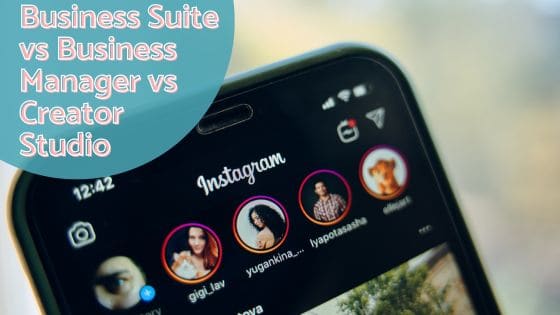
Facebook Business Suite – Info Guide
Facebook Business Suite (now Meta Business Suite), is like assembling the ultimate team members of social media superheroes to help small business owners conquer the world of social media management.
Launched in 2020, Facebook Business Suite is the ultimate sidekick that integrates the Facebook Pages Manager app and the Instagram app, creating a powerful force for businesses to manage their accounts on the go.
It’s like Gamora and her sister Nebula teaming up to conquer the galaxy but for social media.
Facebook Business Suite was designed to replace Facebook Business Manager. Let’s face it, FB Business Manager can be as complicated as trying to solve a Rubik’s cube blindfolded, especially for small businesses with limited resources.
Facebook Business Suite, on the other hand, is user-friendly and accessible for businesses of all sizes. The new interface with powerful features is as easy to use as playing a game of Monopoly with your family.
You can access Facebook Business Suite on both desktops and via mobile app, giving businesses the flexibility to manage their accounts from anywhere. And you can schedule posts and stories on both Facebook and Instagram in advance.
This game-changer feature allows businesses to plan and organize their social media content like a pro.
Facebook Business Suite also offers a range of additional tools that can help businesses improve their social media strategy. These include ad management tools, audience targeting options, and insights into the performance of their content.
With these great tools, businesses can gain a deeper understanding of their audience, create more engaging content and ultimately drive more traffic and sales to their website. It’s like having a secret weapon in your back pocket.
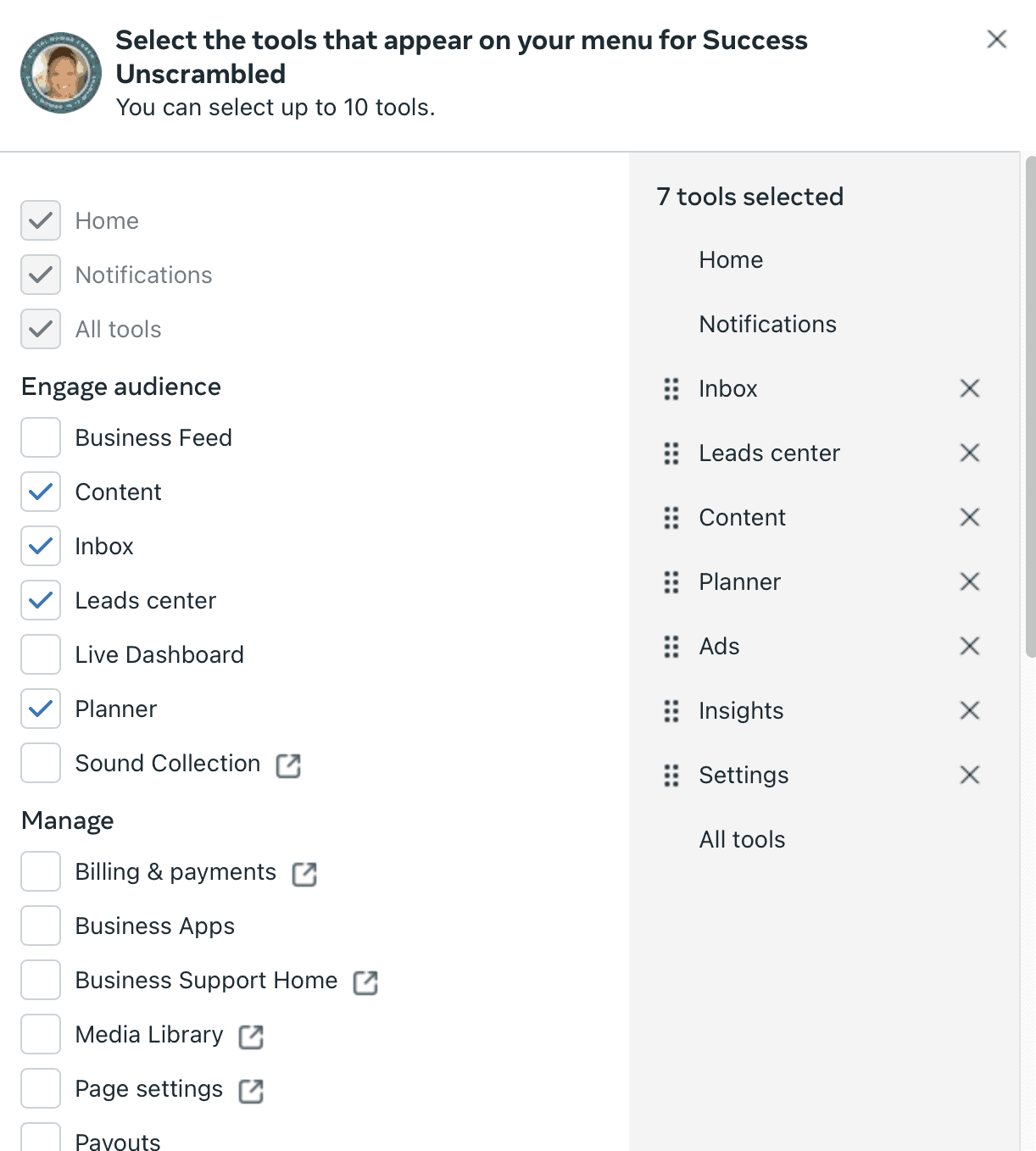
Facebook Business Manager – Info Guide
Compared to the sleek and user-friendly Facebook Business Suite and Creator Studio, Business Manager feels like a clunky relic from a bygone era. It’s not as powerful as its newer counterparts, and let’s be real, it’s just for managing page settings and assets.
And don’t even get me started on the way Business Manager handles ads. It is like trying to swim upstream in a river full of obstacles.
It’s an outdated way of managing ads that can leave even the most experienced marketers scratching their heads.
It’s mainly intended for managing page settings and assets, like who has access to your page and what permissions they have. If you’re looking for a simple way to manage your page and assets, Facebook Business Manager might be a good fit.
For a few businesses, it would be the best tool if they wanted to have a separate Facebook business account and Instagram business account rather than having everything combined in one platform.
But if you’re looking to take your social media game to the next level, it might be worth checking out some of the newer and more powerful tools available.

Facebook Creator Studio – Info Guide
Facebook Creator Studio is a hub for all your content creation needs. It’s like having a video assistant that helps you launch, test, and analyze your videos across Facebook and Instagram pages. Plus, it’s loaded with royalty-free tracks and sound effects to make your videos pop!
If you’re all about monetization, Creator Studio has tools that help you earn money from your videos. With ad breaks, you can earn money by showing short ads during your videos. And if you’re all about those Instant Articles, Creator Studio can help you monetize those too.
As per the latest update, the tools from Creator Studio are packing their bags and heading over to the new and improved Meta Business Suite.
But don’t worry, you’ll still have access to all the amazing new features that allow you to create, manage, and monetize your content, now all in one convenient location. You should also get ready to say goodbye to the Instant Articles feature after mid-2023.
Facebook Business Suite vs. Business Manager
The classic battle of Facebook Business Suite vs. Business Manager is like a fight between a fancy, high-tech robot and a clunky old car.
Business Suite is all like, “Look at me, I can schedule posts and manage multiple platforms!” while the Business Manager is like, “Eh, I’m just here to manage your page settings and ads.”
It’s like the difference between a smooth, easy ride and a bumpy, pothole-filled road. But hey, at least they both are great online business assets and get you where you need to go.
Why Facebook Business Suite Is Better Than Business Manager
Let me tell you why you should embrace the improved and new Facebook Business Suite with open arms. Facebook Business Suite is the superhero of social media management, leaving Facebook Business Manager in the dust.
Its user-friendly interface and detailed Insights dashboard give you the tools to target your audience effectively and make your business shine. And just like the Wasp suit, Facebook Business Suite is designed to help you navigate the digital landscape with ease.
It is like having a personal spy on your social media activity, providing you with all the juicy information you need to target your audience effectively.
The new unified inbox collects all your social media messages across all meta platforms in one place.
The content calendar view is like having a personal assistant who never complains about being overworked, allowing you to schedule your Facebook and Instagram posts with ease.
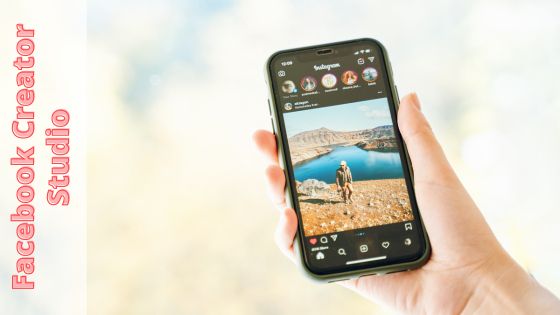
And let’s not forget about better ad management, Facebook Business Suite’s main interface is like having a superpower that allows you to create and manage the most epic ads that will make your competition weep in envy.
So if you’re serious about Facebook marketing and growing your business name, you should upgrade to Facebook Business Suite.
Why You Should Switch To Facebook Business Suite
As a small business owner, managing your social media presence can be as stressful as watching a horror movie in the dark.
With Facebook Business Suite’s new layout and home screen, managing your social media platforms has never been easier.
Facebook Business Suite also features a detailed Insights dashboard that will help you understand your potential customers. Plus, its unified inbox will make sure you never miss a message from your customers.
And if that’s not enough to convince you, how about the fact that Facebook Business Suite works like robot scheduling posts in advance? No more getting up at 3 a.m. to post memes.
Let’s not forget about the better Facebook ads manager, which is more powerful than a superhero on steroids.
Most importantly, if you want to add a Facebook admin to your account to manage your ads then you’ll need Facebook Business Suite.
How To Switch Back To Business Manager From Facebook Business Suite
While Facebook Business Suite provides several useful features, some businesses may require the Business Manager. Especially if they aim to focus on Facebook pages and ad accounts.
If you want to switch back to Business Manager from Facebook Business Suite, you can do so by following these simple steps:
- Look for the ‘Give Feedback’ option in the menu located on the bottom left-hand side of your sidebar.
- Once you have located ‘Give Feedback’, click on it, and you will see the button to switch back to Business Manager.
- Click on the ‘switch’ button and confirm if you would like to switch.
- After confirmation, you will be asked to provide feedback. Click on the ‘your feedback’ option and write a summary of your reason for switching.
- Finally, press ‘done’, and the screen will refresh, giving you access to the Business Manager.
Facebook Business Suite vs. Facebook Creator Studio
Facebook Business Suite and Facebook Creator Studio are like two siblings with different personalities. Business Suite is the responsible one, while Creator Studio is the free-spirited one.
Business Suite is the ultimate multitasker, managing both your Facebook and Instagram accounts seamlessly. Creator Studio, on the other hand, is the perfect playground for content creators to unleash on Facebook.
Both tools offer content scheduling, but Business Suite takes it to the next level by allowing you to post stories on Facebook and Instagram.
Creator Studio, on the other hand, can only post stories on Facebook, making Instagram feel like a neglected child.
If you’re looking to make some money, Creator Studio is the way to go as it offers monetization options for your content.
However, if you’re running a business and managing a shop, Business Suite is the one for you.
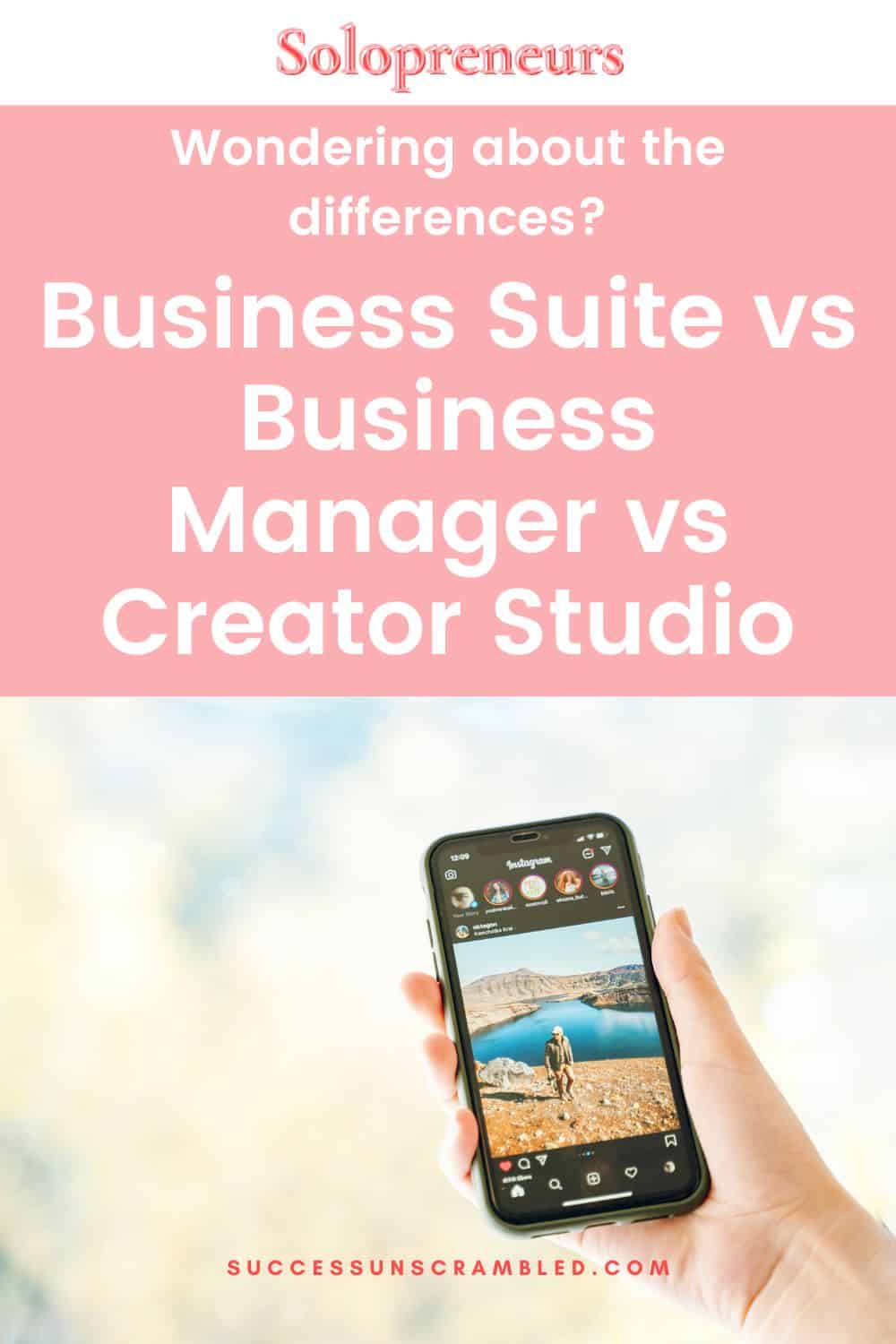
Conclusion
So, which tool to pick to grow your business Facebook page? Facebook Business Suite vs. Business Manager is like Iron Man vs. Captain America.
Business Suite’s Iron Man is new, shiny, and feature-packed. Business Manager’s Captain America is dependable, sturdy, and gets the job done. It may not have all the bells and whistles, but it’s still useful for social media account management.
And then there’s Creator Studio, sleek, stylish, and deadly effective for content creators.
Launch, test, and analyze your videos like a pro with royalty-free tracks and sound effects that can make your content sound as catchy as a chart-topping song.
Monetization tools are also included, making earning from your content a breeze.
Choosing the right tool depends on your needs. For a serious business owner, the new Business Suite is a good idea with accessibility to all new tools.
Business Suite is the new kid on the block, with a modern design, detailed insights dashboard, and better ads management.
The Business Manager, on the other hand, is more like the trusty old workhorse that gets the job done.
Need help with Facebook Ads? Feel free to book some time in my calendar here to discuss your requirements.
11 September 2023, 3:27 am - 45 minutes 20 secondsHow Much To Spend On Facebook Ads [Real Example Included]
Aoife broke out in a cold sweat because she wondered how much to spend on Facebook Ads.
In the past, she dabbled with Facebook Ads spending $600+ with very little return on that investment.
You see, Aoife saw many entrepreneurs and small business owners who publish stellar results from their Facebook Ads campaigns.
This has never been her experience but it would be lovely if she could finally crack the code and get significant results for her business.
Facebook is one of the most powerful tools that allow businesses to quickly and easily create targeted campaigns to reach their desired customers.
With its growing popularity, it is important to remember that there is no one-size-fits-all solution. I have come across many marketers feeling nervous about Facebook ads’ costs and budgets.
Many get iffy with thoughts of how much to spend on Facebook Ads and what is a good daily Facebook ads budget.
In this comprehensive guide, you will learn how much to spend on your Facebook Ads in order to get the best results.
In the end, you will have a better understanding of how to allocate budget and run effective and successful Facebook Ads.
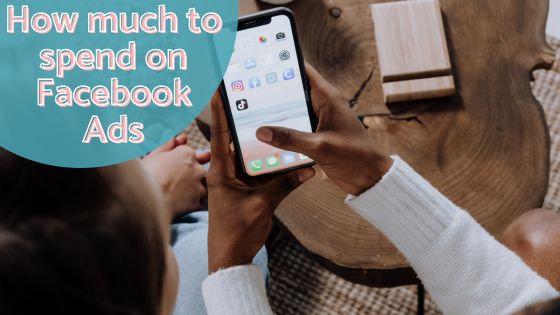
How Much To Spend On Facebook Ads – Budgeting Guide For 2023
With the right Facebook Ads strategy, you can reach your target audience and grow your business. But how much should be spent on Facebook Ads?
The answer depends on your budget, size, industry, and goals. To work out optimal spending, it’s important to set a budget that is realistic and achievable.
If you’re ready to start advertising on social media, don’t be intimidated by the Facebook cost. You can start small with just $1 per day and start seeing results.
This approach works for those who have a limited budget and want to test the waters before diving in.
Before you start looking at allocating more money, here’s a step-by-step guide that you can use.
Step 1: Determine Your Monthly Facebook Advertising Budget
When it comes to determining your monthly Facebook advertising budget, the key is to start small and adjust as you go.
There are a number of factors that would lend to good results. For example, a lead generation campaign using the most relevant ads can be achieved at the lowest cost.
To be more specific Facebook lead ad cost is surprisingly low per lead compared to other objective types.
You’ll want to consider how much you can realistically afford to spend. Another way to look at it is what is your lifetime budget.
A good starting point is to allocate 5%-10% of your overall advertising budget to Facebook and Instagram ads. This will give you the flexibility to experiment and learn from the campaigns.
Once you’ve allocated a budget, it’s important to track your results. This will give you an idea of how effective your campaigns are and how much you should be spending.
Try using different budget strategies for different campaigns.
For example, you can use a cost-per-click (CPC) pricing model for campaigns that focus on conversion rates, and a cost-per-thousand impressions (CPM) for campaigns that focus on brand awareness.
With the right budget and strategies in place, you can ensure that Facebook Ad campaigns are working for your business.
Step 2: Consider The Size Of Your Brand & Average Product Cost
When it comes to deciding how much to spend on Facebook Ads, the size of your brand and the average cost of your product are two important factors to consider.
Small business owners tend to have a much lower budget than larger brands and hence may not be able to afford the same amount of advertising.
The cost of your product will also play a role in how much you spend on Facebook Ads. If you’re selling a premium product, you may need to invest more money in ads in order to reach the right customers.
On the other hand, if your product is more affordable, you may be able to get away with a lower Facebook ad budget.
Ultimately, you need to consider the size of your brand and the average cost of your product when deciding how much to spend.
Step 3: Distribute Your Facebook Ad Spend Based On Objectives
If you’re looking to maximize your Facebook ad spend, the key is to know how much money to put into each of your objectives. This helps you to better target the right audiences and get the best results for your money.
Generally, it is recommended to allocate a budget based on outcomes. For instance, if you want to increase brand awareness, aim for a higher budget for reach and high-frequency ad sets.
One example of brand awareness is traffic campaigns which require the implementation of a Facebook pixel. These ad types are normally used by big brands to warm up an account.
If you want more conversions, allocate more money to conversions. Additionally, you can create audiences for each objective and analyze how much you should be spending based on their performance. The key is to use the data to make informed decisions and stay flexible.
A good starting point is to allocate 1/3 of your budget towards lookalike audiences, which will help you quickly build an audience.
Lookalike audiences are based on existing customers, so you can be sure that you’re connecting with people who are likely interested in your product or service.
With another 1/3 of your budget, you can target interests and behaviours, which will ensure that you’re reaching people who are likely to take action. This could be anything from people who have recently moved house to avid gamers.
Finally, the last 1/3 of your budget should be used for retargeting campaigns, which allow you to reach out to people who have already interacted with your business.
This is a great way to drive conversions and maximize ad spend. So there you have it – a strategic way to distribute your Facebook Ad spend.
Step 4: You Can Start Small With Just $1 Per Day
You can start with a small budget of just $1 per day and go from there. You can experiment with different ads, find out what works for your target audience, and slowly increase your budget as you go.
Plus, you don’t have to commit to a long-term contract – you can pay as you go and adjust your budget at any time.
However, do bear in mind that conversion campaigns would have a higher cost when compared to lead generation objectives.
Step 5: Pass The “Learning Phase” With 50 Conversions Per Week
Figuring out how to run effective Facebook ads can be a daunting task. And one of the biggest hurdles is getting past the learning phase, where you’ll likely spend a lot of money with no return.
To ensure you get the most out of your Facebook ad campaigns, it’s important to set a tangible goal. A good place to start is aiming for 50 conversions per week.
This will give you a baseline number to measure your success and help you get a better grasp of how much to spend. With some trial and error, you’ll be able to identify an easy way to reach 50 conversions per week.
After that, scaling up your ad spend to get even more conversions is just a matter of tweaking your ad spend, content and targeting.
So don’t be afraid to take the plunge and reach for those 50 conversions per week goal. However, keep an eye on your conversion rate.
Also, your landing page and ad creatives can have a significant effect on your total conversions per week.

Step 6: You Can Scale To $20/Per Day/Per Ad Set
With the right strategy, you can scale your ad spend up to $20 per day per ad set. This means that you could be spending $20 a day on each ad set, with potentially unlimited returns. But don’t jump into this too quickly.
You need to have a plan in place to ensure that you’re spending money wisely. To start, you should have a clear understanding of your target audience and the type of ads that will be most effective.
Once you have that data, you can create a budget, and experiment with different ad sets and spending levels. You can then adjust your spending levels according to performance.
Step 7: Identify Your Winning Ad Sets & Scale More
Identifying your winning ad sets and scaling more is essential to success on the platform. With a successful ad set, you will be able to get more out of your ad budget and maximize ROI.
To identify winning ad sets, you should start by testing with different creatives and targeting options.
Once you have found a winner, you can then scale up your budget and increase the reach of your ads.
Pay close attention to your Facebook ad campaign metrics and optimize the ad sets that are performing well.
Step 8: Always Have ROI In Mind
Whenever you decide to spend money on marketing, always have a return on investment (ROI) in mind. This means that for every dollar you spend, you should be getting back more than a dollar in sales.
How much you spend on Facebook ads should always depend on the ROI you expect to get from them. Of course, the amount you spend on Facebook ads should also depend on your budget.
Setting a budget and sticking to it is a must when it comes to online advertising. But you should also make sure that the budget you have set is realistic and achievable. That way, you can ensure that you’re always getting a good return on your investment.
5 Things To Avoid When Spending Money On Facebook Ads
1. Not Spending Enough
Not spending enough is one of the biggest things to avoid when spending money on ads. The cost of Facebook ads can quickly add up, so it’s important to budget for your campaign goals.
But it’s also important to spend enough to see results. If you don’t spend enough, your ads may not get the reach or engagement they need.
Too often, businesses fail to invest enough in their Facebook Ads campaigns, resulting in minimal returns. The key is to set a realistic budget and adjust it as needed.

2. Quitting Too Soon
Quitting too soon is one of the biggest things to avoid when spending money on Facebook ads.
It’s easy to become discouraged when you’re not seeing the results you want right away, but it’s important to remember that it takes time and effort to see success.
Before you give up, make sure you’ve given your campaign a fair chance. You may need to adjust your strategy or tweak your targeting to get the results you want.
It’s also important to be patient – results don’t come overnight. Don’t be afraid to experiment.
3. Choosing the Wrong Type Of Campaign & Objective
One of the most common mistakes is choosing the wrong type of campaign and objective.
When selecting your campaign type, you should make sure it aligns with your goals. For example, if your goal is to increase brand awareness, then a Reach campaign would be appropriate.
If your goal is to generate sales, then a Conversion campaign would be more suitable.
You should choose an objective that is directly related to the action you want people to take, such as clicking on a link or making a purchase.
Making the wrong choice can result in your ad not being seen by the right people or not achieving the desired results.
4. Not Analyzing The Data
Analyzing the data is one of the most important things to do when spending money on Facebook Ads. Not doing so can result in a huge waste of time and money.
It’s essential to understand your data in order to gain insights, make adjustments, and optimize your campaigns.
Without analyzing the data collected from your ads, you won’t know what’s working and what’s not. You won’t be able to identify patterns, which can help you better target your audience.
If you’re not analyzing the data, you’ll be blindly spending on ads without any real understanding of what’s driving your results. So, it’s important to set aside time each day to review your data and make adjustments.
5. Not Calculating The Marginal Profitability
Another important thing to avoid when spending money on Facebook ads is not calculating the marginal profitability. It’s easy to get lost in the glitz and glamour of the ads and be tempted to spend more than you need to.
But, if you don’t pay attention to the marginal profitability of your ads, you could end up overspending and not seeing the return on investment that you wanted.
Marginal profitability refers to the rate at which your profits increase, or decrease, with each additional dollar you spend on a campaign.
Calculating it will help you make sure you’re spending your money wisely and not wasting your budget.
Marginal Profitability Example
Let me give you a practical example of marginal profitability. Let’s say you are running a conversion campaign for a smaller item like a digital planner priced at $17.
Initially, you were getting conversions when you were spending $20 a day, however over time you increased your budget to $35 a day and this is what happened.
At $20 a day, you were generating 3 sales a day but after increasing your budget to $35 a day you now make 4 sales.
Doing the math you realise that at $20 a day, you make $17×3 = $51 but a budget of $35 a day only yields $17×4=$68.
In this case, it would be better to return to a budget of $20 a day because your profit is better at this level.
The other option is to set up upsells in the backend so that you can increase your profitability.
How Much to Spend on Facebook Ads – Real Example
Recently I wanted to test a lead magnet I created and use it as a basis for growing my email list.
Like any entrepreneur, I have several options to test the effectiveness of a lead magnet.
These options include organic marketing and paid marketing. I did not have a lot of time to use organic marketing so I opted for Facebook Lead Ads.
So, with $200 in hand, I decided on a budget of $10 a day for 2 weeks.
Here are the results that I got. 159 leads with an average cost per lead of $1.26 cent. It means that I now have 150 more people on my email list.

I’m also running a 5-day challenge to see if any of these will convert into long-term clients.
People Also Ask
Is $5 a Day Enough for Facebook Ads?
The answer is yes and no. It depends on what type of ad you’re running and what your goals are. For example, if you’re just looking to increase brand awareness and reach more people, then $5 a day is probably enough.
However, if you’re looking to drive more conversions or sales, you will need to spend a bit more.
That said, with $5 you can still test out different strategies and see what works best.
Keep an eye on the analytics and adjust your campaigns accordingly, you can slowly increase the budget and get better results.
What Is a Good Daily Budget for Facebook Ads?
Figuring out a good daily budget for Facebook Ads can be tricky. Your total budget will depend on your overall marketing goals, as well as your cash flow.
If you’re just getting started with Facebook Ads, a good rule of thumb is to start with a minimum budget and then bump it up. The best budget for your Facebook Ads will depend on your goals.
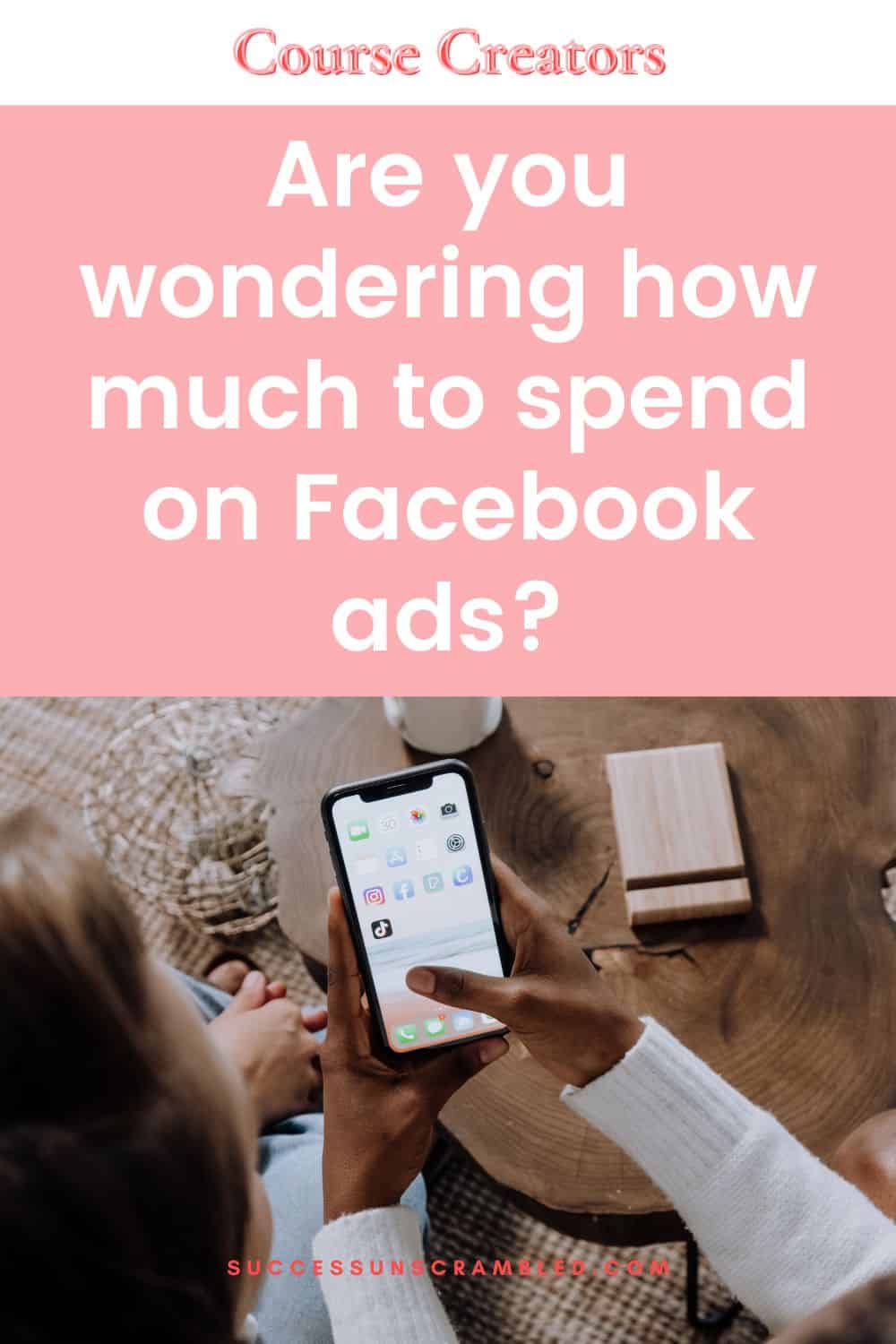
Are FB Ads Worth It in the 21st Century?
With so many businesses competing for customers, advertising on Facebook has become an increasingly popular way to reach potential customers. But are Facebook ads still worth it in the 21st Century?
The answer is a resounding yes! Facebook ads offer powerful targeting options and can be used to reach a wide range of different audiences.
Plus, they are relatively inexpensive and easy to customize. So with the right strategy, it’s possible to get a good return on your investment.
Conclusion
Facebook Ads help to reach new customers and build your brand. But it is important to know how much to spend on Facebook Ads. First, you need to set a budget that you can afford to pay.
Once you have a budget, you can determine how much to spend on different types of ads, such as boosting posts, running event campaigns, or targeting new users.
You can also create audiences for each type of ad and analyze how much you should be spending based on their performance.
This way, you can make the most of your Facebook Advertising budget and take your business to the next level.
Improve your return on Facebook ad spending by leaving it to someone who can help. Book a call in my calendar here to learn more.
28 August 2023, 3:07 am - 34 minutes 53 secondsThe Ultimate Facebook Ad Frequency: How Much Is Too Much?Picture this: you've spent countless hours crafting the perfect Facebook ad for your business. You're convinced it will boost your sales, and can't wait to see the results. But after a while, you notice something strange. The same people keep seeing your ad over and over again in their Facebook feed. They're starting to get annoyed, and they are leaving negative feedback. So, what's going on? Well, my friend, it seems you've encountered the issue around Facebook ad frequency. And if you're not careful, it can hurt your campaign more than it helps. But what is Facebook ad frequency, and how much is too much? Let’s dive deep into the world of Facebook ad frequency, and I'll share with you some practical tips to make sure your ads stay fresh and relevant to your target audience. What Is Facebook Ad Frequency, And Why Does It Matter? What exactly is Facebook ad frequency, and why should you care? Facebook ads frequency is the average number of times your ad has been shown to each person in your target audience. It's crucial because if you have a higher frequency, people might experience ad fatigue, leading to lower engagement, higher costs, and a potentially negative perception of your brand. On the other hand, maintaining an optimal frequency can be beneficial for ad recall, particularly for a potential user or new user who is not yet familiar with your brand. A well-managed frequency number helps ensure your target audience sees your ad enough times to remember your message and associate it with your brand. By striking the right balance, you can optimize your campaigns for better ad recall without overwhelming your audience or causing high ad fatigue. This can help you achieve higher engagement and conversions, making your advertising efforts more effective and efficient. Managing Your Facebook Ad Frequency Managing your Facebook ad frequency is about finding the right balance between reaching your Facebook user audience and not overexposing them to your ads. It can be tricky to master, but here are some best practices to help you manage your ad frequency effectively: Monitor your ad frequency regularly to ensure it stays within an optimal range. The optimal frequency varies, but it should be around1 to 3 per ad set Adjust your ad targeting to reach a broader audience size if your frequency gets too high. Rotate your ad creatives to keep your ad quality fresh and engaging. Another thing you can do is use the frequency cap feature to limit how often your ads are shown. Understanding Facebook Ad Frequency Cap Now that you know what Facebook ad frequency is and why the frequency metric is important, let's talk about how you can control it using the Facebook ad frequency cap. There are a couple of ways to set frequency depending on your needs and the features available. First thing, if you are creating a campaign, Facebook Ads Manager only allows setting frequency caps for awareness campaigns. You’ll be able to find that option when clicking the show more options under bid control. The default frequency cap is 1 impression every 7 days, but you can edit it to whatever number you’d like. Another option is to create automated rules. To do this, you’ll need to: Open the Facebook Ads Manager. Highlight the specific campaign where you'd like to implement the rule. Click the Rules drop-down button beside campaign tags in the main menu, select Create a New Rule, and click Custom Rule. Provide a name for the rule, and decide if it should apply to all active campaigns or only the selected one. Select the action for the rule to perform. You have three options: turn on the campaign, turn off the campaign, or send a notification only. Set up the desired frequency cap and time range for the rule under Conditions. Unfortunately, this option does not enforce a strict frequency cap, as it is limited to,14 August 2023, 1:50 am
- More Episodes? Get the App